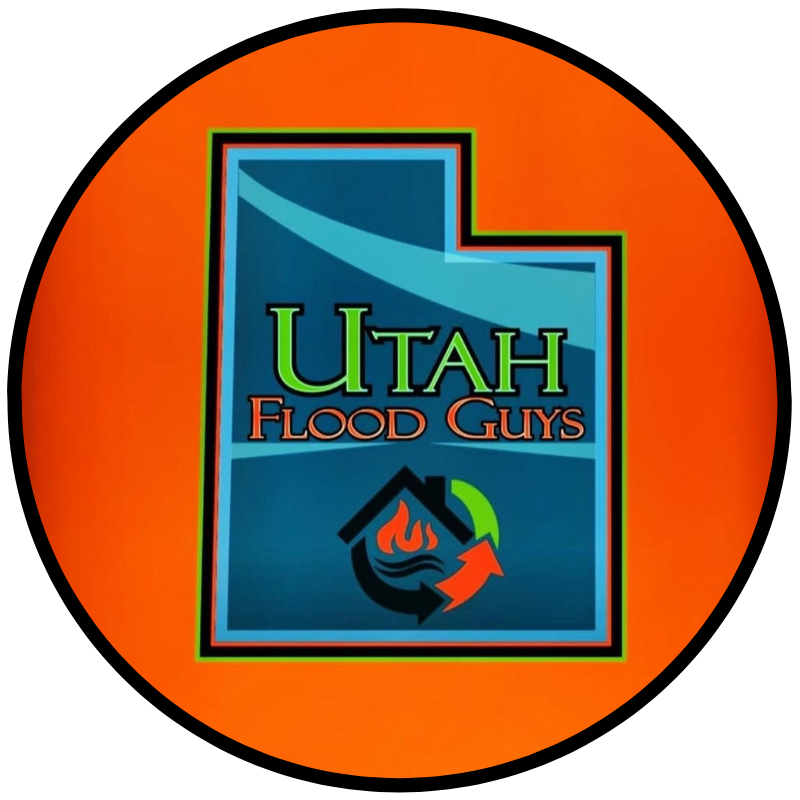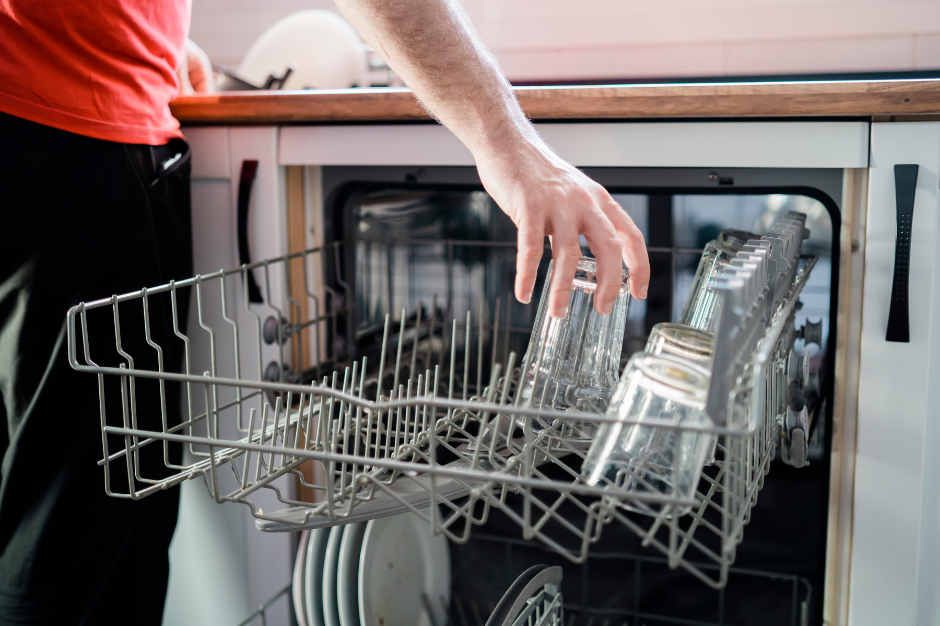Utah Flood Guys' Blog
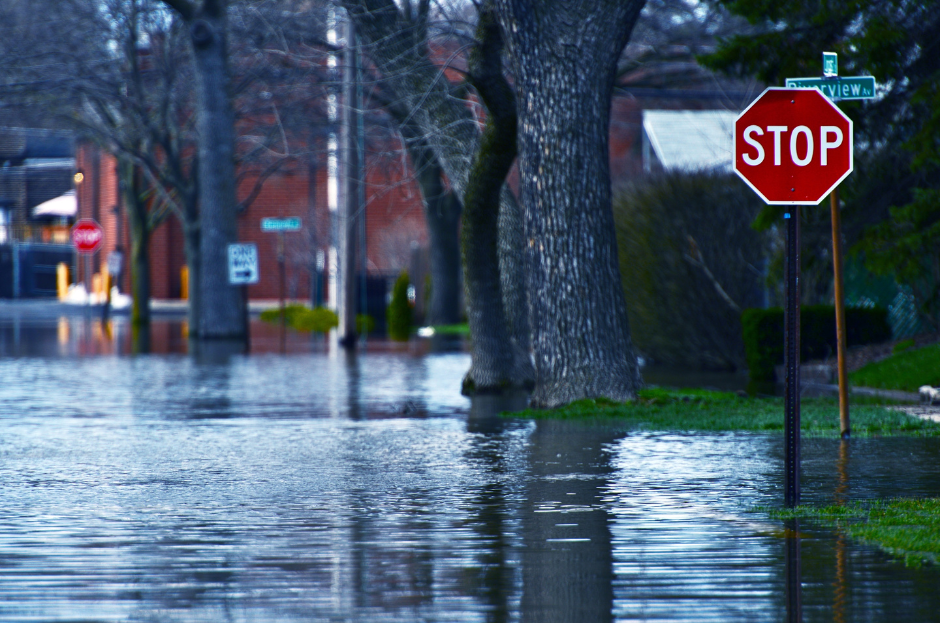
Nobody expects to wake up to ankle-deep water in their basement or watch helplessly as spring snowmelt turns their home into an unplanned water feature. Here in Utah, we face unique challenges from notorious spring runoff, surprise flash floods, and pipes that burst when temperatures drop below freezing. The good news is that proven methods exist to address these problems effectively. Utah flood restoration isn't just about Shop-Vacs and fans. It's a science-backed process that, when done correctly, can have your home looking like nothing ever happened–often in even better condition than before. Understanding what professional restoration entails helps you make informed decisions during a stressful time. Complete Utah Flood Restoration Process: Step-by-Step The process of Utah flood restoration follows a methodical approach that makes sense once you understand how each phase builds on the previous one. Initial Emergency Response starts when you call for help. Within 2-4 hours, a professional crew should arrive to assess safety by checking for electrical hazards, structural damage, and contamination levels. This assessment determines the entire scope of work and helps classify the water damage category. Water Extraction Methods are where serious equipment makes the difference in flood damage repair. Truck-mounted extraction units can pull 300 gallons per minute–emptying an average hot tub in about 90 seconds. The goal isn't just removing visible water; it's getting moisture levels low enough that secondary damage like warping and microbial growth can't take hold. Structural Drying Techniques separate professionals from weekend warriors. Strategic drying requires understanding psychrometrics–the relationship between temperature, humidity, and evaporation rates. Professional water damage restoration teams use this knowledge to position commercial dehumidifiers and air movers in configurations that maximize airflow while controlling the environment to promote rapid, safe drying. Damage Assessment & Documentation happens throughout the process. Every water-damaged item gets photographed, categorized, and logged with detailed descriptions. Insurance companies want specific moisture readings, thermal imaging shots showing water migration patterns, and detailed inventories. Extensive documentation expedites claims processing. Restoration vs. Replacement Decisions often surprise homeowners. That warped hardwood floor might be salvageable with proper drying and refinishing, potentially saving thousands. But particle board cabinets that absorbed water rarely recover their structural integrity. Professional guidance helps you make cost-effective decisions based on both immediate expenses and long-term value.
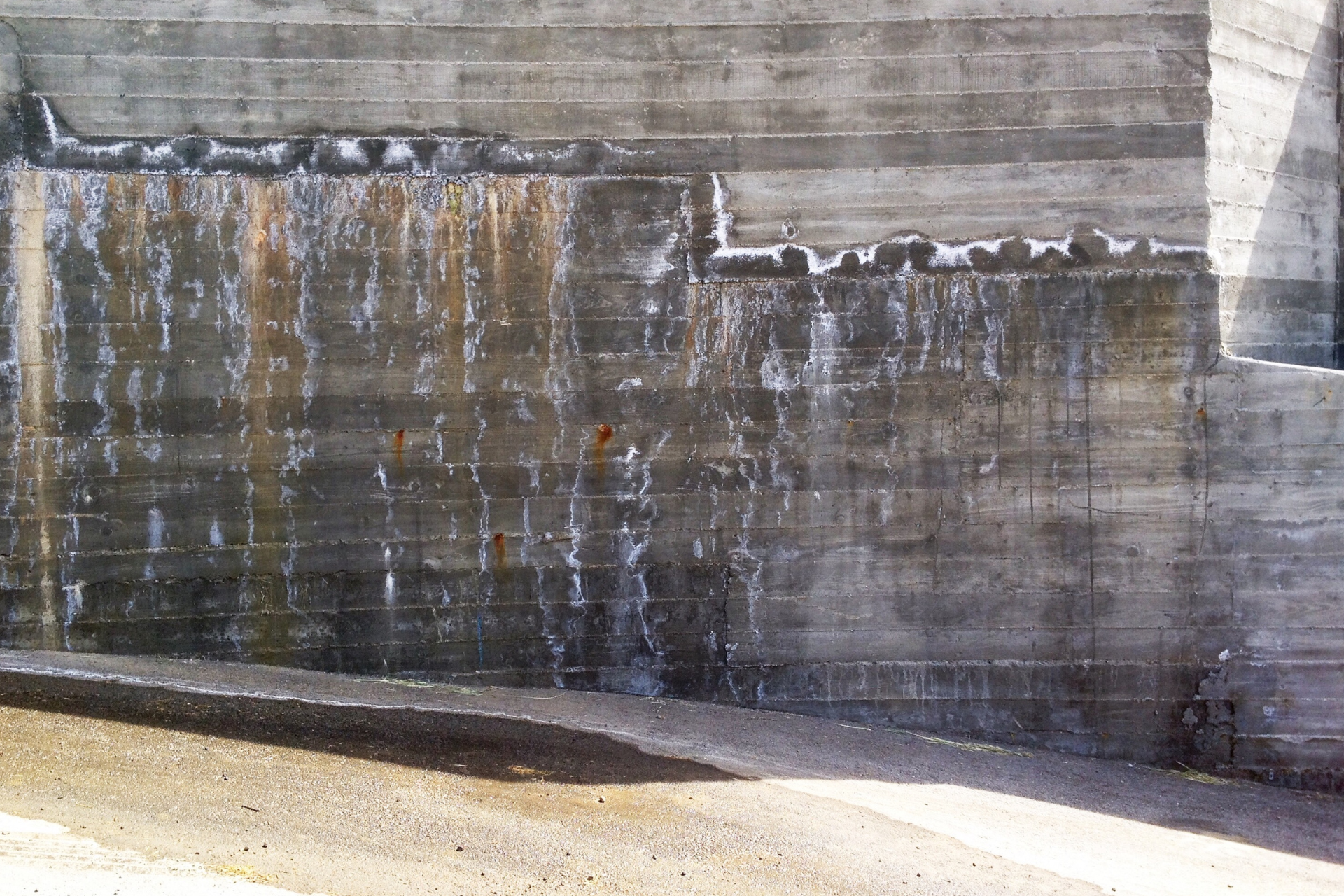
Water damage is a significant concern for commercial buildings, and the challenges that arise from it can often be unique and complex. When a water-related disaster strikes, businesses face not just the immediate physical damage but also potential long-term implications. At Utah Flood Guys, we understand the intricacies involved in commercial water damage restoration and are here to help you navigate the process with ease. Understanding the Unique Challenges 1. Scale of Damage Commercial properties are typically larger and more complex than residential buildings. This means that water can travel quickly through expansive spaces, affecting multiple areas and systems. From office spaces to warehouses and production facilities, the extent of water damage can be overwhelming. 2. Business Downtime Unlike residential scenarios, where damage might disrupt a family’s daily life, commercial water damage can lead to significant financial losses due to business interruptions. The longer it takes to address the issue, the more revenue a business stands to lose. This urgency requires a swift and efficient response. 3. Regulatory Compliance Commercial properties often have strict regulatory requirements to satisfy, especially regarding health and safety. When dealing with water damage, ensuring compliance with local regulations can add an extra layer of complexity to the restoration process. 4. Diverse Infrastructure The infrastructure of commercial buildings can vary widely, often containing specialized equipment, unique layouts, and diverse materials. Each of these elements requires a tailored approach to restoration, as different materials react differently to water exposure. Effective Solutions for Restoration So, how do we tackle these unique challenges? Here’s a glimpse into some effective strategies: 1. Rapid Response Teams At Utah Flood Guys, we deploy rapid response teams to your commercial property as soon as we receive your call. Our restoration experts are trained to quickly assess the situation and develop a comprehensive plan that minimizes damage and keeps your business operational. 2. Advanced Equipment We use state-of-the-art equipment for water extraction, drying, and dehumidification. High-efficiency machines can reduce drying time, limiting the extent of damage and helping you get back to business faster. 3. Specialized Techniques Our team is skilled in using specialized techniques tailored to various commercial environments. Whether it’s using unobtrusive equipment to minimize disruption in an office setting or addressing mold issues in a warehouse, we have the expertise to handle diverse situations effectively. 4. Transparent Communication We pride ourselves on maintaining open lines of communication with our clients throughout the restoration process. Keeping you informed means you can make decisions with greater clarity and confidence, reducing stress in an already challenging situation. 5. Post-Restoration Support The job doesn’t end when the water is gone. We provide ongoing support, including advice on preventing future issues and guidance on insurance claims. Our goal is to ensure that your commercial space isn’t just restored but also fortified against future water damage. Water damage in commercial buildings can be daunting, but with the right team on your side, it doesn’t have to spell disaster. Utah Flood Guys is committed to providing effective, efficient, and reliable restoration services for your business. Don’t let water damage derail your operations—reach out to us today, and let’s turn a challenging situation into a manageable one.
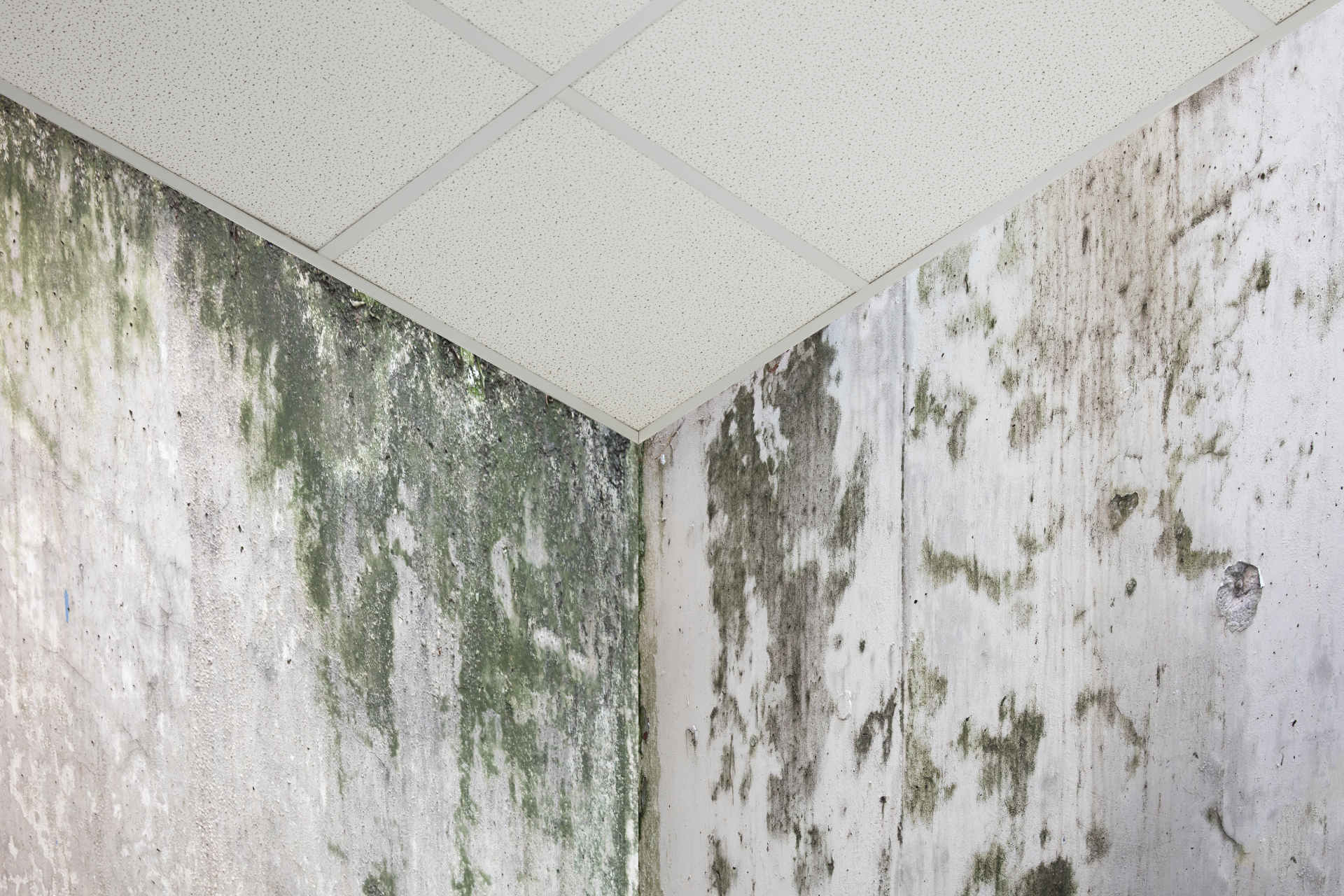
Hey there, homeowners! If you've been enjoying the comforts of your cozy home, it’s crucial to keep an eye out for signs of mold. Unfortunately, mold loves to sneak into our spaces when we least expect it—especially after water damage or if humidity levels get too high. At Utah Flood Guys, we specialize in restorative services, and today we’re diving into five signs that you might have a mold problem in your home. 1. Musty Odor One of the first indicators of mold lurking in your home is the unmistakable musty smell. If you notice a persistent odor that reminds you of damp, rotting wood, there’s a chance mold is present. This scent can originate from hidden areas like behind walls, under carpets, or inside ventilation systems. If a certain room smells off, it's time to check for moisture or visible mold. 2. Visible Mold Growth This one might seem obvious, but visible mold growth is a clear sign that you need to take action. Mold can appear in a variety of colors—black, green, white, or even orange—and can be fuzzy, slimy, or dry. Common areas to look out for include bathrooms, kitchens, and any place where leaks might occur. Remember, if you see mold, don't ignore it; it's a serious issue that often requires professional intervention. 3. Water Damage If you’ve recently experienced any leaks, flooding, or significant water damage, it's crucial to be vigilant. Even small water stains on the ceiling or walls can indicate a moisture problem that could lead to mold growth. It’s a good idea to get a professional assessment if you notice any signs of water damage, as hidden mold can develop within 24 to 48 hours. 4. Allergic Reactions Have you or your family members been experiencing unexplained allergies or respiratory issues? Symptoms like coughing, sneezing, itchy eyes, or skin rashes could point to mold exposure. If your symptoms worsen when you’re at home and improve when you leave, mold may be the culprit. Always listen to your body; it’s your first line of defense. 5. Increased Humidity Levels Check your home’s humidity levels, especially in areas prone to moisture, like basements and bathrooms. Ideally, indoor humidity should be between 30% and 50%. If you find it’s consistently above this range, it creates an ideal environment for mold to thrive. Consider using dehumidifiers or improving ventilation—especially in high-humidity areas—to keep moisture at bay. Final Thoughts If you recognize any of these signs in your home, it’s time to take action. Mold is more than just an eyesore; it can pose serious health risks and compromise your property. At Utah Flood Guys , we’re here to help. Whether it’s mold removal, water damage restoration, or fire damage recovery, our team has the expertise to restore your living space safely and effectively. Don’t hesitate; reach out to us today, and let’s tackle that mold problem together! Remember, your home should be a safe haven, not a breeding ground for trouble.
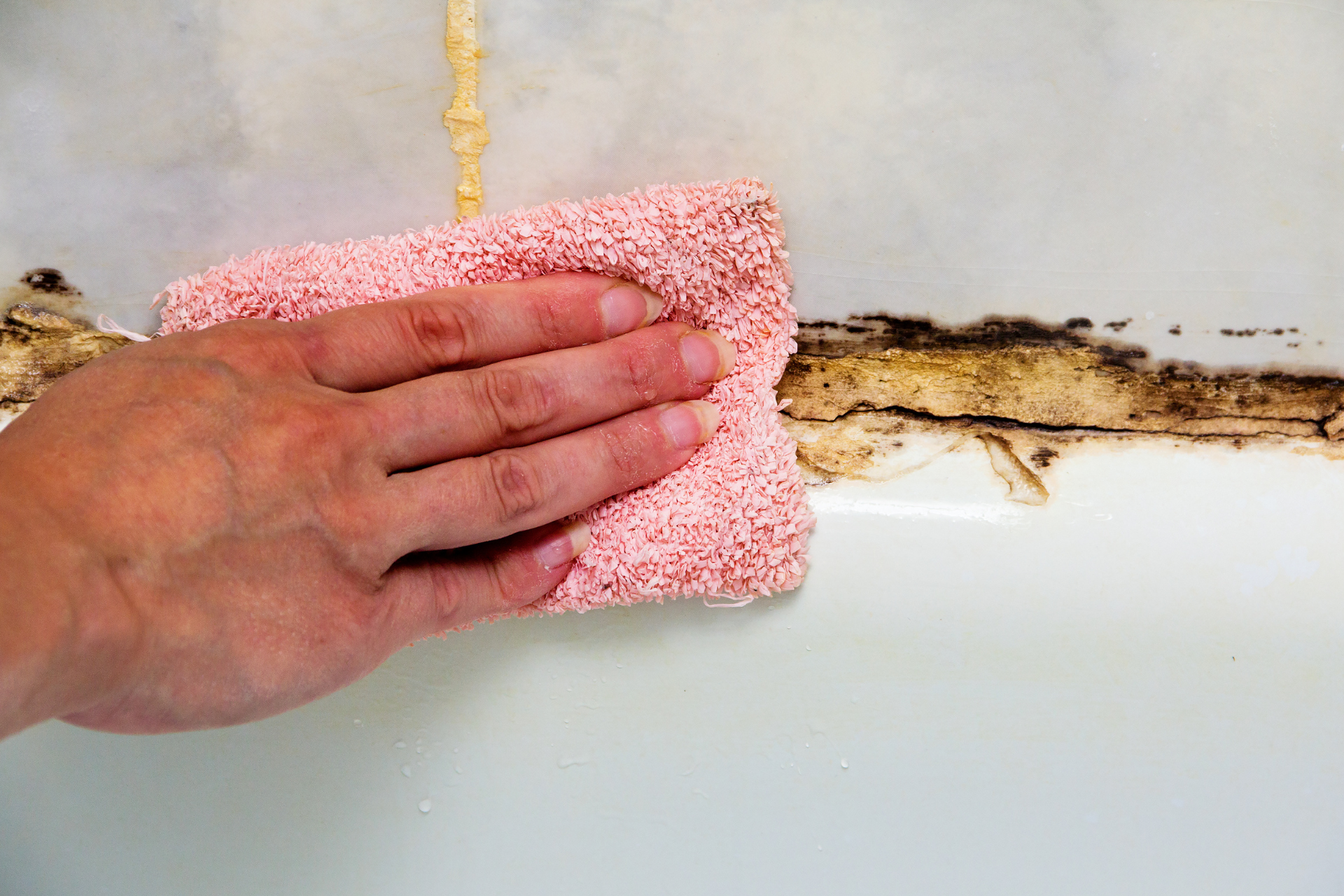
When it comes to tackling mold issues in your home or business, you might find yourself confronted with a common dilemma: Should you try to handle it yourself or call in the professionals? At Utah Flood Guys, we understand the worry and frustration that accompanies discovering mold, and we’re here to guide you through the decision-making process. Understanding Mold Before diving into DIY versus professional mold removal, let's take a moment to understand what mold is and why it matters. Mold is a type of fungus that thrives in damp, humid environments. While it plays a crucial role in nature by breaking down organic matter, it can pose serious risks to your health when it invades your home. Common reactions include allergy symptoms, respiratory issues, and other health complications. This is a serious issue, and determining how to address it is critical. The DIY Approach: Benefits and Drawbacks On the surface, tackling mold removal on your own may seem like a cost-effective solution. There are plenty of resources online providing step-by-step guides on cleaning up small mold infestations. With supplies from your local hardware store, including mold remover, brushes, and protective gear, it might appear straightforward. However, the DIY route comes with its drawbacks: 1. Health Risks Without proper protective gear, you can expose yourself to spores that can aggravate respiratory issues or even lead to more severe health problems. 2. Incomplete Removal Mold roots can burrow deep into walls, floors, and ceilings. It’s easy to miss hidden sources, leading to a recurrence of the problem. 3. Time and Effort What can seem like a simple task may take a lot more time than anticipated, disrupting your routine and peace of mind. The Professional Approach: Ensuring Safety and Efficacy On the flip side, hiring professional mold removal services like those offered by Utah Flood Guys brings a wealth of expertise and resources to the table. Here are some significant benefits: 1. Expert Assessment Professionals can accurately assess the extent of the mold problem and identify hidden issues that may not be apparent to the untrained eye. 2. Specialized Equipment Mold remediation requires specific tools and solutions that many homeowners may not have access to. Professionals use industrial-grade equipment to ensure that mold is completely removed. 3. Safety First Trained experts understand how to handle hazardous materials safely and wear the appropriate protective gear to shield themselves and your family from exposure. 4. Long-Term Solutions With effective mold remediation, professionals not only remove the mold but also address the underlying moisture issues, reducing the chances of mold returning. The Bottom Line While DIY mold removal may seem tempting, the risks associated with it often outweigh the benefits. Mold infestations can escalate quickly, leading to health hazards and costly repairs if not managed properly. At Utah Flood Guys , we specialize in mold removal for both residential and commercial properties. Our trained professionals are equipped to handle mold infestations safely and effectively, ensuring that your space is not only clean but also conducive to your health and well-being. When it comes to mold, consider the safest option: let the experts handle it. After all, your health and peace of mind are worth it!

Water damage can be an overwhelming issue, especially for homeowners and business owners alike. When a leak occurs or a flood hits, it’s easy to focus on the immediate visible effects, like soggy carpets or peeling paint. However, the reality is that untreated water damage can lead to hidden dangers that could have long-term implications for your property and health. At Utah Flood Guys, we want to shed light on these often-overlooked risks and encourage proactive measures for water damage restoration. Mold: The Silent Invader One of the most concerning dangers of untreated water damage is mold growth. Mold thrives in damp environments, and it can begin to take hold in as little as 24 to 48 hours after water exposure. Not only is mold unsightly, but it can also have serious health implications, particularly for individuals with allergies, asthma, or weakened immune systems. Mold spores can spread rapidly within your home or business, leading to costly remediation and extensive damage to your property structure. Structural Compromise Water damage can weaken the structural integrity of your home or building. When wood absorbs excess moisture, it can warp, rot, and become a breeding ground for pests. Over time, untreated damage can lead to sagging floors, cracked walls, or even the potential collapse of essential elements like ceilings. By ignoring signs of water damage, you're not just risking your property’s value, but you’re also putting your safety at stake. At Utah Flood Guys, we understand that prevention is the best cure, which is why we emphasize immediate restoration. Electrical Hazards Another hidden danger associated with water damage is the risk of electrical hazards. Water and electricity don’t mix—ever. When water seeps into electrical systems, it can cause short circuits or even create fire hazards. This can lead to costly repairs, significant damage, and even loss of life. If you experience water damage, it’s critical to ensure that electrical systems are inspected by professionals before restoring power. Our team at Utah Flood Guys is fully equipped to handle both the water damage and the necessary inspections to keep your property safe. Health Risks Aside from mold, untreated water damage can lead to various other health risks. Standing water can attract pests like mosquitoes and other insects, which can carry diseases. Additionally, if contaminated water (like sewage) is involved, it poses serious health threats requiring urgent attention. Ignoring the issue can expose you and your family or employees to unsanitary conditions that can result in illness or injury. The Cost of Delaying Action While the aftermath of water damage can be a headache, delaying action can result in escalating costs. Initially, you may only deal with simple clean-up, but as time passes, the damage compounds. The need for mold remediation, structural repairs, or electrical fixes can turn a minor inconvenience into a major financial burden. Conclusion Understanding the hidden dangers of untreated water damage is essential for protecting your home or business. At Utah Flood Guys , we’re dedicated to restoring your property to its original state and ensuring that your environment is safe for everyone. If you’ve experienced water damage, don’t wait for problems to escalate—reach out to us today for a thorough assessment and expert restoration services. Your peace of mind is our priority, and we’re here to help every step of the way.

When a fire occurs, the immediate focus is often on extinguishing the flames and ensuring everyone is safe. However, once the smoke clears, the lingering effects of smoke damage can pose serious challenges for homeowners. At Utah Flood Guys, we understand the ins and outs of restoration, and we're here to shed light on how smoke damage can affect your home long after a fire. The Hidden Dangers of Smoke Damage Many people underestimate the reach of smoke damage. Even after the fire is put out, smoke residues can settle in various parts of your home, forming a stubborn layer that can be difficult to clean. These residues contain harmful chemicals and toxins, which can lead to health issues if left unaddressed. In fact, smoke can infiltrate furniture, drapes, clothing, and even the walls, creating an environment that becomes increasingly hazardous over time. Persistent Odors One of the most notorious effects of smoke damage is the lingering smell. The odor from smoke can seep into porous materials in your home—think carpets, upholstery, and even wallboards. This not only makes your living space uncomfortable but can also make it hard to invite friends and family over without feeling embarrassed. Typical cleaning methods often fall short, which is where professional restoration services come into play. The Utah Flood Guys specialize in deep cleaning techniques, ensuring that your home can smell fresh again, allowing you to regain your peace of mind. Structural Complications Smoke isn’t just harmful to your health; it can also compromise the integrity of your home. The high heat from a fire can weaken structural components, but smoke can contribute in less obvious ways. The soot that clings to surfaces can trap moisture, which can lead to mold growth if not remediated quickly. Mold can further jeopardize your health and the structural integrity of your home. Getting an assessment and quick action are vital; Utah Flood Guys can perform a thorough inspection and recommend solutions to prevent further damage. Impact on Personal Belongings Beyond physical structures, smoke can severely impact personal items. Family heirlooms, electronics, and important documents can all be at risk of irreparable damage. While you may think that items left outside for a while will air out, the damage often requires professional cleaning to restore them properly. From specialized techniques for cleaning electronic devices to restoring beloved textiles, our team at Utah Flood Guys has the expertise needed to tackle even the trickiest of smoke-damaged possessions. Emotional Toll Lastly, the aftermath of smoke damage can take an emotional toll on homeowners. The memories associated with a home can become clouded by the distress of dealing with the aftermath of a fire . Professional restoration may not only bring your property back to life but also restore your sense of safety and comfort. Wrap Up Smoke damage is a significant issue that can linger long after the flames are extinguished. The Utah Flood Guys are here to help you navigate the recovery process. If you’ve experienced a fire and are worried about smoke damage, don’t hesitate to reach out. We provide comprehensive restoration services for both residential and commercial properties, ensuring you can reclaim your home—safe and sound. Together, let’s turn this page and get you back to enjoying your space.
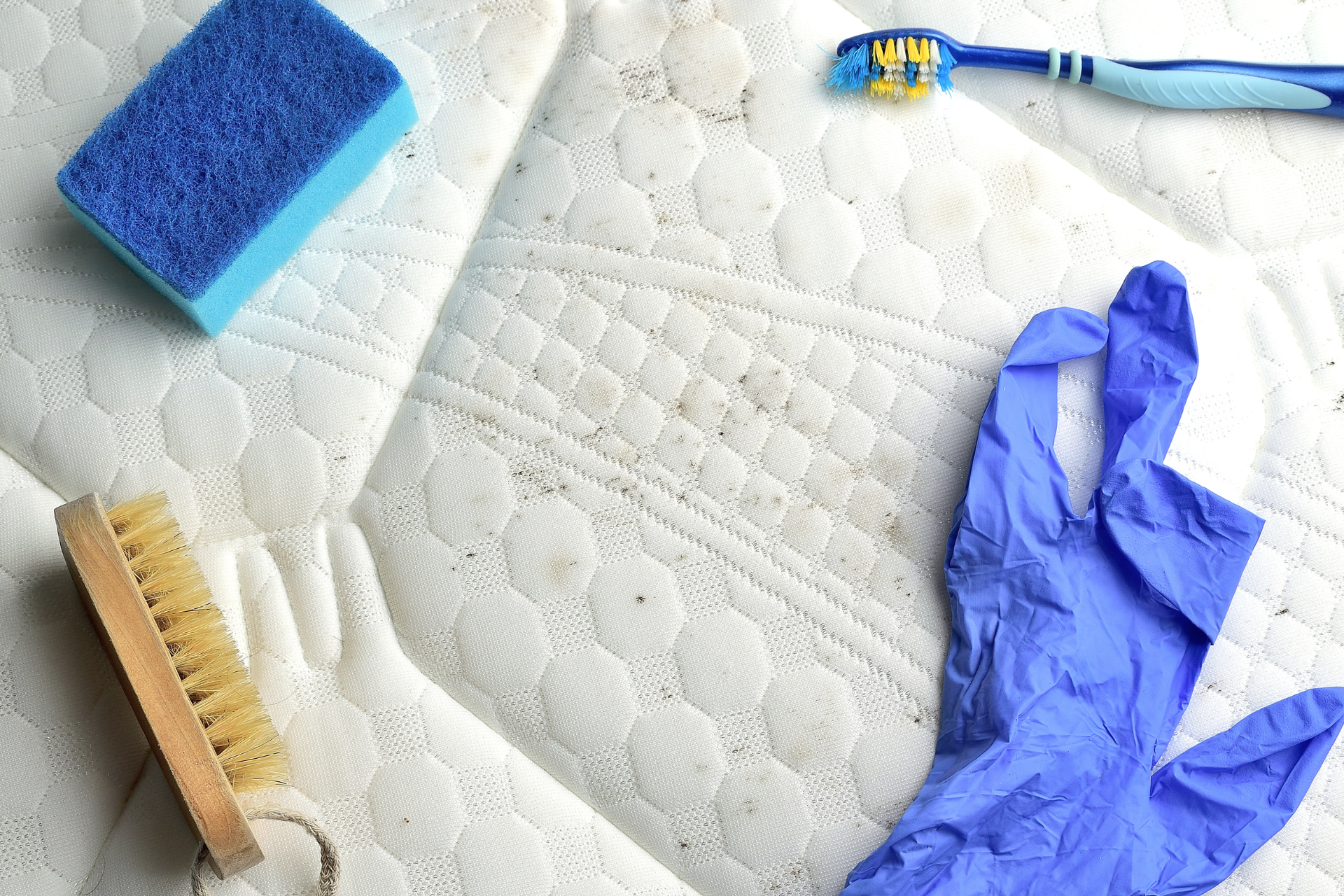
When water damage strikes, one of the most frustrating issues that can arise is the presence of mold, especially on your fabric items. Whether it’s your favorite couch, curtains, or clothing, mold can quickly turn a beloved piece into a potential health hazard. Here at Utah Flood Guys, we understand the importance of preserving your belongings after a disaster. So, let’s dive into a step-by-step guide on how to safely remove mold from fabric. Step 1: Gather Your Supplies Before you get started, it’s essential to gather all the necessary supplies. You’ll need: - Protective gear (gloves, mask, goggles) - Soft-bristle brush - Mild detergent - White vinegar or a store-bought mold remover - Spray bottle - Clean water - Sunlight (if possible) Having everything ready will make the process smoother and safer. Step 2: Take Precautions Mold can be harmful to your health, so it’s crucial to take proper precautions before you begin. Make sure you’re wearing gloves, a mask, and goggles to protect yourself from mold spores. If the fabric item is sizeable and removable, consider working outside to minimize mold spore exposure inside your home. Step 3: Brush Off Loose Mold Using a soft-bristle brush, gently brush off any loose mold from the fabric. Be careful not to scrub too hard, as this can push the mold deeper into the fibers. Make sure to brush outside, if possible, to prevent the mold spores from spreading indoors. Don’t forget to dispose of your brush or clean it thoroughly afterward to avoid cross-contamination. Step 4: Prepare a Cleaning Solution In a spray bottle, mix equal parts of mild detergent and water. Alternatively, using white vinegar can be effective as it’s a natural mold killer. If you opt for a store-bought mold remover, follow the instructions on the label. Step 5: Spot Test Before applying the cleaning solution to the entire fabric, it’s a wise idea to conduct a spot test in an inconspicuous area. This ensures that the fabric won’t be damaged or discolored by the solution. Wait for a few minutes after applying the solution and check for any adverse reactions. Step 6: Apply the Solution Once you’ve confirmed it's safe, spray the cleaning solution generously onto the affected areas of the fabric. Allow the solution to sit for about 10 to 15 minutes. This step is crucial, as it lets the solution penetrate the mold and break it down. Step 7: Clean and Rinse After the solution has sat, gently blot the affected area with a clean, damp cloth to lift the mold and dirt away. Make sure to rinse the cloth frequently to ensure you’re not redistributing mold spores. Once you’re satisfied with the cleaning, lightly rinse the fabric with clean water to remove any remaining detergent or vinegar. Step 8: Dry Completely Finally, allow the fabric to dry completely. If possible, hang it outside in direct sunlight, as UV rays are natural mold deterrents. If outdoor drying isn’t an option, use fans to circulate air and reduce moisture. Conclusion Removing mold from fabric can be a challenging yet manageable task. By following this step-by-step guide, you can effectively clean your materials while ensuring your safety. If mold persists or if you’re dealing with significant water damage, don’t hesitate to reach out to Utah Flood Guys . We’re here to help with professional mold removal and restoration services—so you can get back to enjoying your space without worry!
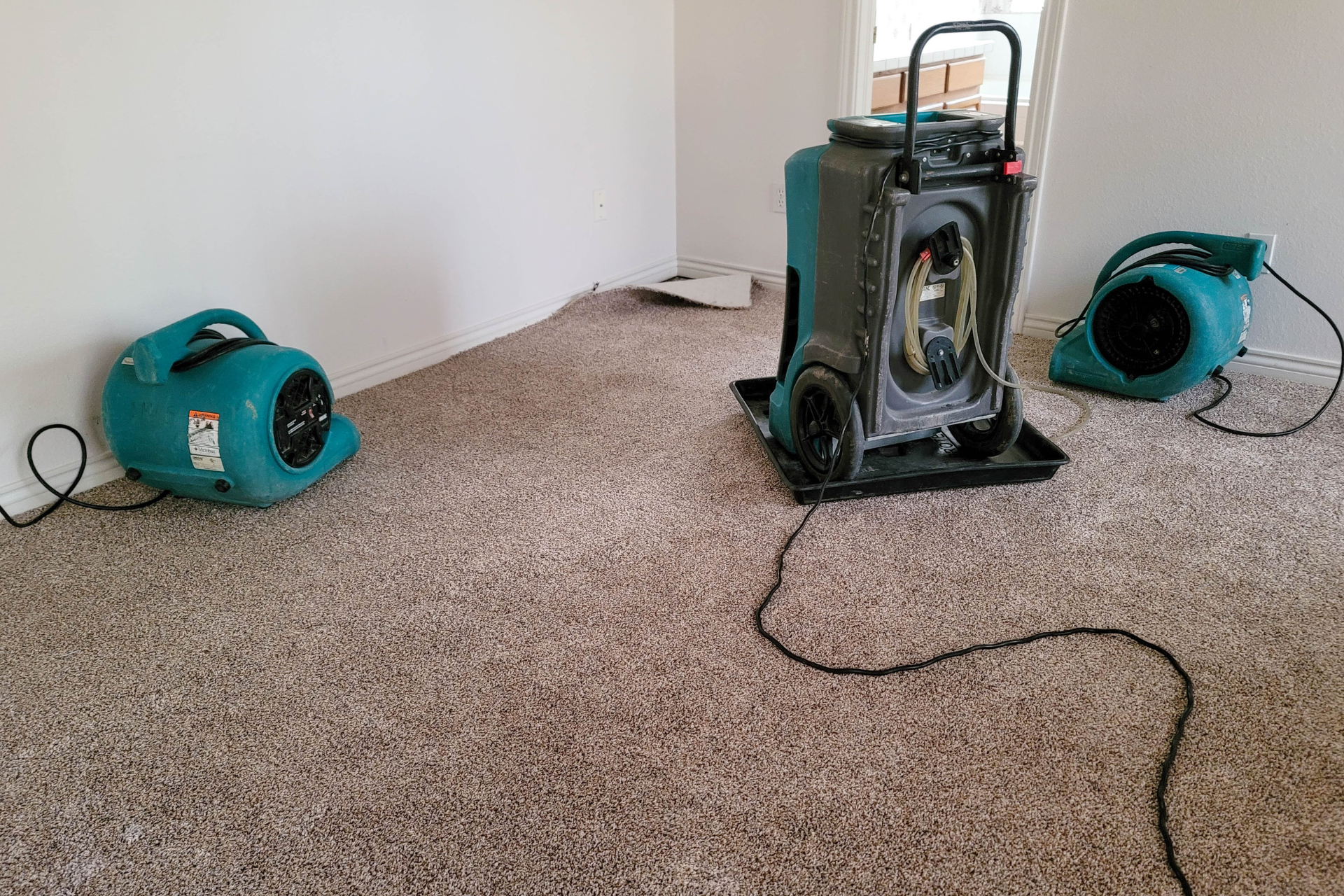
When disaster strikes, whether it’s a sudden flood, plumbing mishap, or fire damage, effective restoration is crucial. At Utah Flood Guys, we understand that the right drying techniques not only save your property but also enhance safety and prevent further damage. So, let’s delve into the science behind professional drying techniques, so you can appreciate why these methods are essential in disaster recovery. Understanding Moisture Before we dive into the drying techniques, it’s essential to understand moisture and its behavior in different materials. When water infiltrates your home or business, it doesn’t just roll off surfaces—it seeps into walls, carpets, and furnishings. This absorption can lead to adverse effects like mold growth, rot, and structural issues. The primary objective of effective drying is to reduce moisture levels to prevent the irreversible damage from occurring. The Principles of Drying Professional drying techniques typically rely on two fundamental principles: evaporation and dehumidification. 1. Evaporation is the process wherein liquid water transitions into vapor. To facilitate this, professionals use high-powered fans and air movers. These devices create air circulation that promotes the evaporation of moisture from wet surfaces. The faster we can get moisture to evaporate into the air, the quicker we can initiate the drying process. 2. Dehumidification is essential for capturing the moisture-laden air created by evaporation. This involves using dehumidifiers, which draw in humid air and remove the water, discharging drier air back into the environment. By continuously cycling the air and removing moisture, dehumidifiers support a faster drying process and help prevent secondary damage, like mold. Temperature and Environment Control Temperature plays a crucial role in drying effectiveness. Warmer air can hold more moisture than cooler air, so professionals will often gently heat affected areas to enhance evaporation. This doesn’t mean cranking up the thermostat; rather, specialized equipment can be used to achieve an optimal environment conducive to drying. The combination of warm air, optimal airflow, and low humidity creates an ideal atmosphere for drying. Technicians at Utah Flood Guys often monitor these conditions closely, adjusting equipment as needed to ensure that the environment remains conducive to efficient drying. Monitoring Progress It's not enough to simply set up equipment and hope for the best. Professional restoration companies employ moisture meters to monitor levels continuously throughout the process. These devices help professionals determine when materials are dry and allow them to document progress, leading to more informed decisions about next steps. Importance of Professional Techniques While you might be tempted to DIY your drying efforts, the science behind professional techniques is invaluable. Inadequate drying can lead to long-term complications, including mold infestations that can harm your health and further damage your property. Additionally, improperly dried areas may not just look bad; they can also compromise the structural integrity of your home or business. At Utah Flood Guys, we are committed to using scientifically backed drying methods to ensure that your property is restored to its pre-damage condition efficiently and safely. Our trained professionals understand the complexities behind moisture management and are equipped with state-of-the-art tools to handle the task. If you find yourself dealing with water damage, don’t hesitate to call Utah Flood Guys . With the right drying techniques, we’ll help you turn a difficult situation into a success story—fast and effectively!
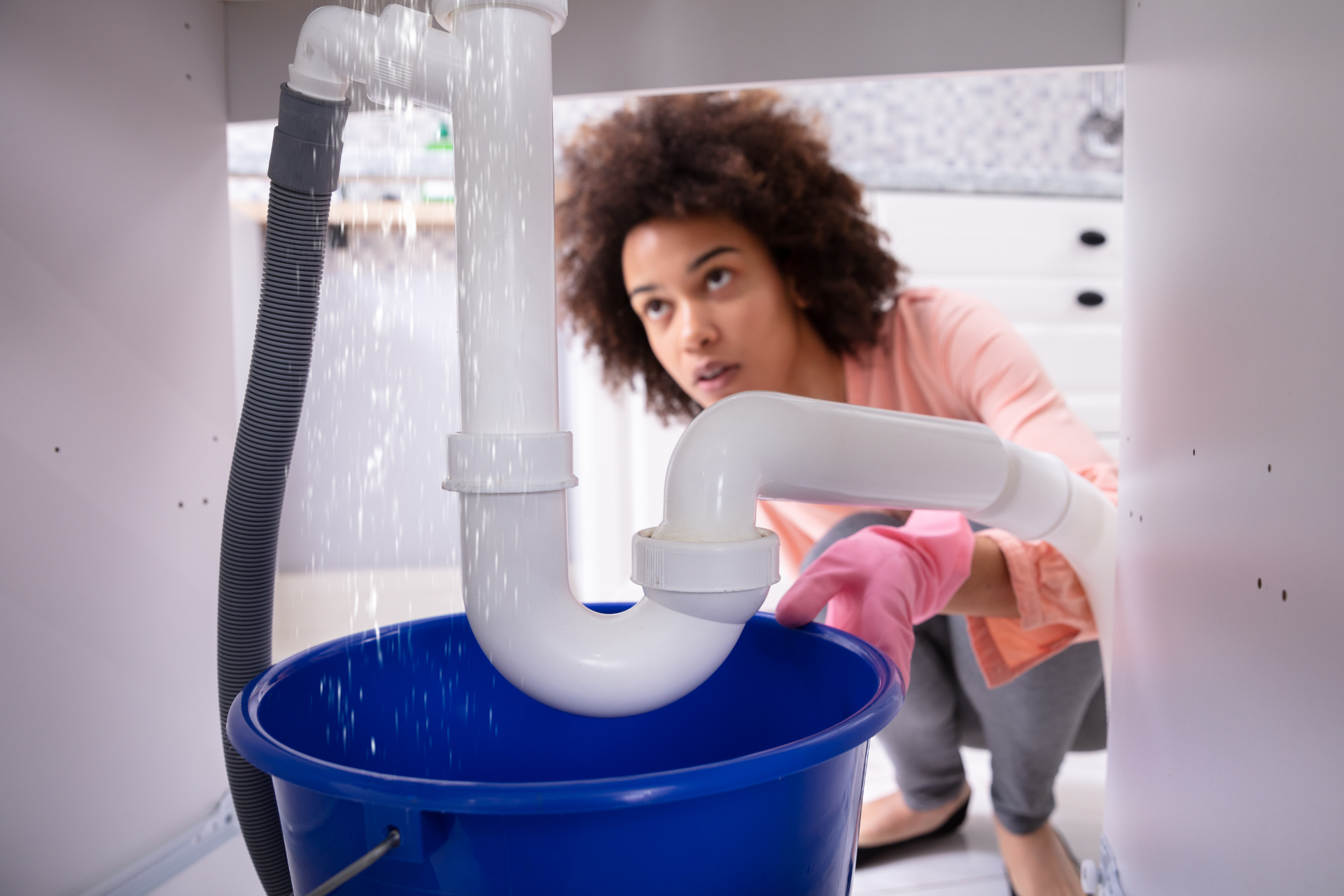
Water damage can be a homeowner’s worst nightmare. From burst pipes to unexpected flooding, the aftermath can be overwhelming. When faced with water damage, you may wonder whether to tackle the restoration yourself or call in the professionals. Here at Utah Flood Guys, we're here to help you understand your options and make the best choice for your situation. Understanding Water Damage Before diving into the DIY versus professional debate, it's essential to grasp what water damage entails. It’s not just about mopping up excess water; it can include hidden threats like mold growth, structural damage, and persistent moisture issues. The longer the water sits, the more extensive the damage can become, leading to higher repair costs and health risks. The DIY Approach Many homeowners consider the DIY route to save money and feel a sense of satisfaction from handling the problem themselves. Yes, there are some simple steps you can take in the event of water damage: 1. Shut Off the Water Source If possible, stop the water at its source to prevent further damage. 2. Remove Water Using buckets, towels, or even a wet/dry vacuum, you can begin getting rid of standing water. 3. Drying Out Open windows for ventilation, use fans, and dehumidifiers to expedite the drying process. 4. Inspect for Damage Check walls, flooring, and belongings for damage and discard items that can't be salvaged. While these steps are helpful, there are significant limitations to DIY efforts. For instance, moisture can be hidden behind walls and under floors, meaning it could linger without you realizing it. Additionally, DIY methods often don't use advanced technology like thermal imaging or specialized drying equipment, which professionals have access to. The Case for Professionals When significant water damage occurs, calling a professional restoration company is often the best route to take. Here are a few reasons why: 1. Expertise Professionals at Utah Flood Guys have the training and experience needed to assess the situation comprehensively. They can identify hidden risks and know exactly what procedures to follow to restore your property effectively. 2. Advanced Equipment Professional restoration teams utilize industrial-grade pumps, dehumidifiers, and air movers that accelerate the drying process and minimize damage. 3. Mold Prevention Mold can start growing within 24-48 hours after water damage occurs. Professionals can mitigate this risk with proper drying and treatment methods. 4. Insurance Support If you have homeowner's insurance, it may cover some of the costs associated with professional restoration. Our team can also help you navigate claims, making the process less stressful for you. Conclusion While the DIY method may seem appealing for minor water damage issues, it’s crucial to recognize when professional help is necessary. For significant water damage, turn to experts like Utah Flood Guys for efficient and thorough restoration services. With our skilled team at your side, you’ll have peace of mind knowing that your property is in good hands. When you face the aftermath of water damage, remember: sometimes, it’s best to leave it to the pros.
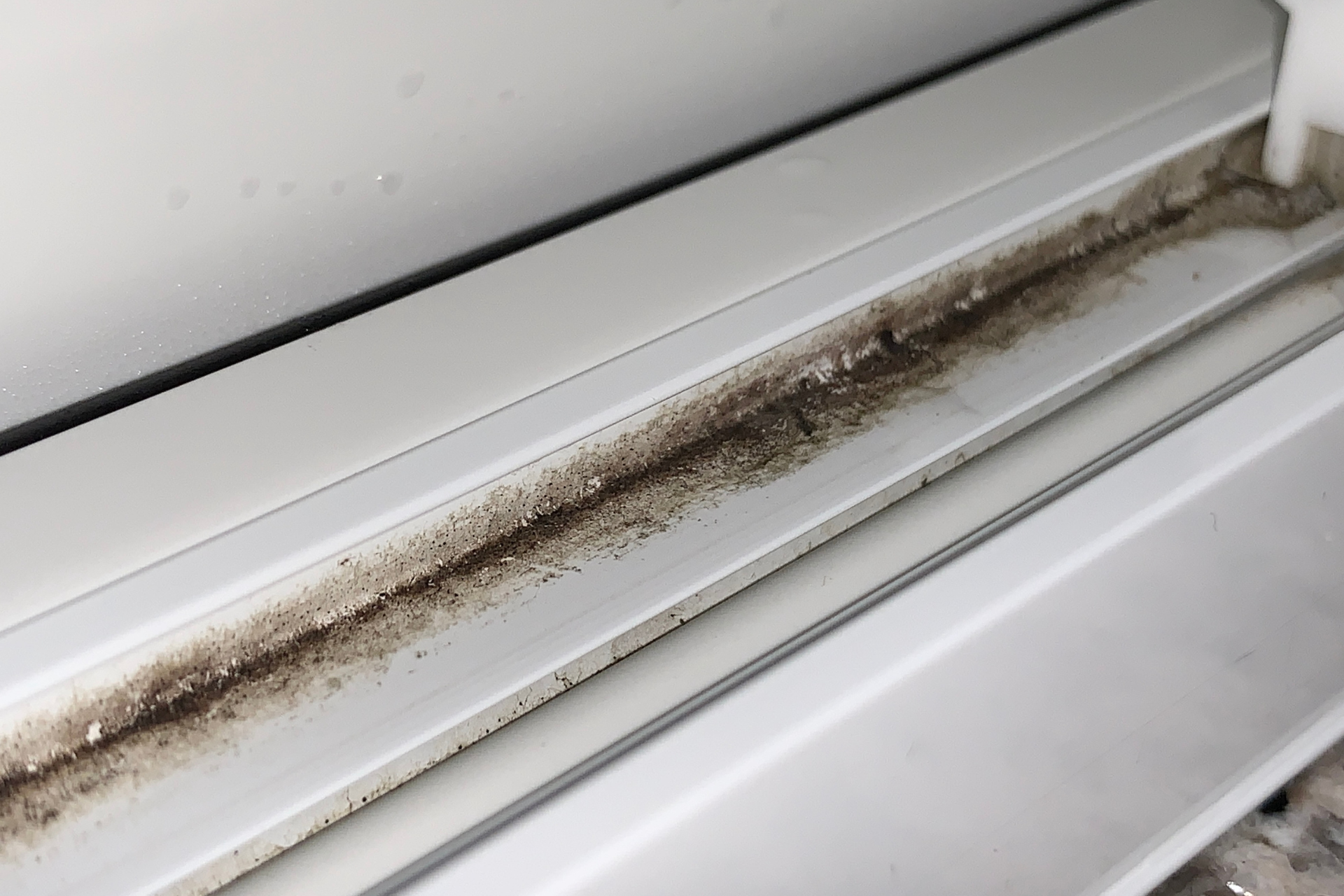
If you live in Utah, you’ve probably heard some spooky stories about mold, especially after a heavy rain or snowmelt. Mold is more than just an unsightly invader; it can affect the health of you and your family. At Utah Flood Guys, we’re here to shed some light on the most common types of mold found in Utah and their potential health effects. So grab a cup of coffee, make yourself comfortable, and let’s dive into this! 1. Aspergillus Aspergillus is a versatile mold that thrives in a variety of environments. It’s often found in materials like decaying plant matter and dust, making it a frequent visitor in homes and businesses. For the average person, a small exposure might not be concerning. However, individuals with allergies, asthma, or weakened immune systems can experience respiratory issues, sinus infections, and other serious health concerns. If you notice a musty smell or dark spots, it’s essential to take action quickly. 2. Penicillium You might recognize Penicillium from your science classes, as it’s the mold that led to the discovery of penicillin. It’s common in damp buildings and can grow on various materials, including fabrics and wallpaper. While it plays a crucial role in medicine, exposure can cause allergic reactions, respiratory problems, and even infections in people with compromised immune systems. It’s vital to manage moisture levels in your home to keep this mold at bay! 3. Stachybotrys Chartarum (Black Mold) Ah, the infamous black mold! While not every dark mold is black mold, Stachybotrys chartarum is one you definitely want to avoid. This notorious mold tends to flourish in areas with high humidity, like bathrooms or flooded basements. Exposure can lead to serious health issues, including chronic fatigue, respiratory issues, and neurological symptoms. If you suspect black mold in your home or business, it’s critical to call professionals like Utah Flood Guys to assess and remediate the problem. 4. Cladosporium Found both indoors and outdoors, Cladosporium loves to set up camp in damp, warm areas. Inside, you might find it lurking in carpets, fabrics, or air conditioning units. For most people, it won’t cause massive issues, but those with allergies or asthma may experience nasal congestion or skin irritations. Keeping your home clean and dry will help keep this persistent mold at bay! 5. Alternaria Often found in outdoor environments, Alternaria can easily hitch a ride into your home through open windows and doors. It prefers dark, damp conditions and is commonly found in bathrooms and kitchens. While exposure typically causes respiratory problems and allergies, it can be more problematic for individuals with existing health issues. Clean and ventilate your spaces regularly to minimize this mold's chances of moving in! Conclusion Mold can be a silent problem that grows right under your nose, especially in Utah, where weather changes can create the perfect environment for these fungi. If you suspect mold in your home or business, trust Utah Flood Guys to help with thorough mold removal and restoration. We’re here to ensure your space remains safe and healthy for you and your loved ones. Remember, prevention is always better than cure! Keep your spaces dry, ventilated, and check for leaks regularly. Stay safe out there!

Experiencing a fire at your home or business can be an overwhelming ordeal. The damage is often extensive, not only affecting the physical structure but also leaving behind lingering smoke odors that can be difficult to eliminate. At Utah Flood Guys, we understand the nuances of fire damage restoration and the critical importance of proper smoke odor removal. Let’s dive deeper into why addressing smoke odor is so essential after a fire. First Impressions Matter When you walk into a space, your senses take in the environment immediately. If there’s a smoky smell leftover from a fire, it can be off-putting. For homeowners, this can have a lasting impact on the comfort of their living space. For businesses, lingering smoke odors can deter customers and ruin first impressions. Imagine walking into what should be a welcoming café or retail store and being greeted by the remnants of smoke—it’s not the kind of vibe anyone wants to create. Health Risks are Real Beyond the unpleasant scent, it’s crucial to consider the health implications of smoke and soot residue. Smoke contains various harmful chemicals that can affect indoor air quality, leading to respiratory issues and other health problems. If smoke odors are not effectively removed, these pollutants can continue to linger in the air, posing a risk to everyone who enters the building. Proper smoke odor removal not only restores the freshness of the space but also safeguards the health of its occupants. It’s All About the Process Removing smoke odor is more than just opening windows and spraying air fresheners. It requires a comprehensive approach. First, professionals must assess the extent of the damage, identifying which materials have been affected. Different surfaces—like walls, ceilings, fabrics, and even HVAC systems—absorb smoke differently and require specific techniques for effective remediation. Utah Flood Guys use advanced techniques such as thermal fogging, ozone treatments, and specialized cleaning agents. These methods penetrate deeply into surfaces to neutralize odors rather than simply masking them. We understand that smoke particles can cling to even the hardest-to-reach areas, which is why our thorough process ensures that we tackle every nook and cranny. Don’t Go It Alone While some may think it’s possible to handle smoke odor removal as a DIY project, it’s often more complicated than it seems. The last thing you want is to waste time and energy on ineffective solutions. Furthermore, improper removal can lead to further damage, potentially costing you more in the long run. When you partner with professionals like Utah Flood Guys, you get a team that specializes in fire damage cleanup, ensuring a comprehensive and effective restoration process. Peace of Mind After the devastation of a fire, the thought of returning to normalcy is a beacon of hope. Knowing that your space is free from smoke and soot residue not only improves the overall ambiance but also gives you peace of mind. Utah Flood Guys are here to help restore your property—not just physically, but emotionally as well. We aim to bring back the comfort of your home or the professionalism of your business quickly and effectively. In conclusion, proper smoke odor removal is a vital aspect of post-fire restoration. From improving air quality and health concerns to ensuring your spaces feel inviting again, it’s a healing step that deserves attention. Trust Utah Flood Guys to help navigate this journey back to normal. Your satisfaction and well-being are our top priorities!

When it comes to maintaining a healthy home, mold is one of those unwelcome guests you definitely want to avoid. Not only can it tarnish your living space, but it can also pose serious health risks for you and your loved ones. If you’ve spotted mold in your home, don’t panic! At Utah Flood Guys, we're here to help you understand the best steps to effectively combat mold and ensure it never returns. Understanding Mold Mold thrives in damp, dark spaces and can appear in various colors – black, green, yellow, or white. It can grow anywhere there is moisture, which is why basements, bathrooms, and areas with previous water damage are particularly susceptible. Before embarking on a mold removal journey, it’s important to identify the source of moisture to prevent mold from re-establishing itself. Step 1: Identify & Fix the Source of Moisture The first step in banishing mold for good is to tackle any moisture issues in your home. Check your plumbing for leaks, ensure your gutters are clean and directing water away from your foundation, and consider using a dehumidifier in areas prone to humidity. If you notice water stains on walls or ceilings, it’s crucial to address those leaks promptly. By eliminating excess moisture, you’ll create an environment that’s less hospitable to mold. Step 2: Contain the Mold Before you dive into cleaning, it’s vital to contain the mold to prevent spores from spreading throughout your home. Seal off the affected area using plastic sheeting, and ensure good ventilation by opening windows. Wearing protective gear, including gloves, goggles, and a mask, will also keep you safe while you work. Step 3: Clean & Remove the Mold For minor mold infestations, you can tackle the problem yourself. A mixture of water and soap can be effective for cleaning hard surfaces. For tougher mold, consider using a solution of one cup of bleach in a gallon of water. Remember never to mix bleach with ammonia! Scrub the affected area thoroughly and rinse well to ensure all mold spores are removed. If the mold has penetrated porous materials, like drywall or carpeting, it may be best to remove and replace these items, as they can house mold spores even after cleaning. Step 4: Prevent Future Growth Once your home is mold-free, the next step is prevention. Regularly inspect areas prone to moisture and ensure proper ventilation, especially in bathrooms and kitchens. Consider using mold-resistant products like paints and drywall when making home repairs. Moreover, keeping humidity levels below 50% in your home can greatly reduce mold growth. This can be achieved by using dehumidifiers, fans, and ensuring that your home is properly air-conditioned. When to Call in the Pros If your mold problem is extensive or ongoing, or if you have health concerns, it’s time to call in the experts. At Utah Flood Guys , we specialize in mold removal and restoration services to ensure your home is safe and secure. We offer thorough assessments and effective solutions that tackle not just the mold you can see, but also the hidden sources that could lead to future issues. With these effective steps, you can permanently rid your home of mold and enjoy a healthier living environment. Don’t let mold take control – take action today, and let us help you keep your home safe!

Heavy rain can wreak havoc on your home, turning a cozy haven into a soggy mess. If you’ve ever found yourself staring at water pooling in your living room or basement, you know just how overwhelming it can be. Fortunately, Utah Flood Guys are here to help, but it’s essential to act quickly and follow these steps to minimize damage and ensure your safety. 1. Stay Calm and Assess the Situation First things first: take a deep breath. We understand that seeing your home flooded is incredibly stressful. However, staying calm will help you think more clearly. Assess the extent of the flooding. Is it localized to one room, or is there water throughout your home? Understanding the situation will guide your next steps. 2. Prioritize Safety Your safety is the top priority. Before doing anything else, turn off the electricity in your home – especially if the water has reached electrical outlets or appliances. If the water is deep or swift, it's best to avoid entering the flooded area. If you suspect the water is contaminated, steer clear and wait for professional help. 3. Document the Damage As soon as it’s safe, grab your phone or camera and start documenting the damage for your insurance claim. Take pictures of your possessions, the water levels, and any structural damages. This documentation will assist you in getting a fair assessment from your insurance company. 4. Remove Water and Items Once you've ensured your safety, begin the process of removing as much water as possible. If the flooding is minor, you might manage this with buckets or towels. For more significant flooding, a wet/dry vacuum can be a helpful tool. Also, remove any furniture, rugs, and personal items that can be salvaged. The quicker you dry out your belongings, the better your chances of preventing mold growth. 5. Dry Out Your Home Ventilation is crucial in this step. Open windows and doors to allow fresh air to circulate, and use fans to expedite the drying process. Dehumidifiers can help remove excess moisture from the air. Keep an eye on the humidity levels to ensure your home dries thoroughly, as lingering moisture can lead to mold and mildew. 6. Check for Mold After the initial cleanup, it’s time to inspect your home for any signs of mold. Mold can begin to develop within 24-48 hours after flooding, so the sooner you address the issue, the better. If you spot mold, it’s essential to have it professionally removed. At Utah Flood Guys, we specialize in mold removal, ensuring your home is safe and healthy. 7. Call the Professionals While DIY efforts can help in the short term, it’s wise to call in the experts when your home has been flooded. Utah Flood Guys offer comprehensive restoration services tailored to your unique situation. Our team will assess the damage, carry out water extraction, and ensure your home is restored to its former glory. Conclusion Flooding due to heavy rain can be daunting, but knowing the essential steps to take can help you manage the situation more effectively. Always prioritize safety, act quickly, and rely on the expertise of professionals. At Utah Flood Guys , we’re committed to providing the best disaster recovery services in Utah, so you never have to face the challenges of flooding alone! Stay safe and dry!
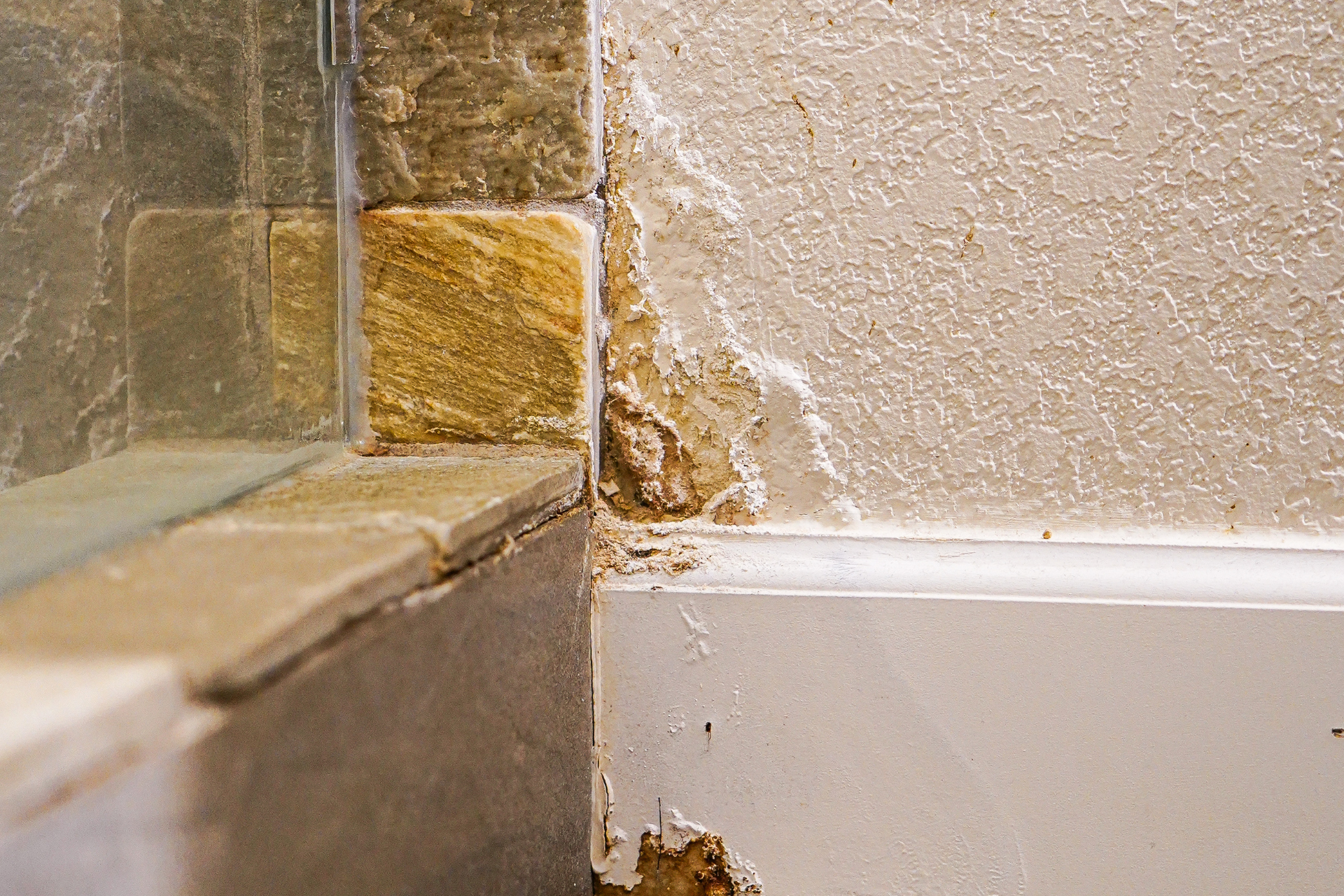
Water is essential for life, but when it intrudes into places it doesn’t belong, it can wreak havoc on your home or business. At Utah Flood Guys, we understand the aftermath of water damage all too well. Beyond the immediate concerns like damp carpets and soaked drywall, one of the most significant issues to worry about is the potential for structural damage. Let’s explore how water damage can affect your property's integrity and, more importantly, how you can prevent it. Understanding the Impact of Water Damage Water damage doesn’t just disappear on its own. It creates an ideal environment for mold growth, rotting wood, and weakening foundations. Over time, excessive moisture can lead to severe structural issues, including compromised beams, warped floors, and crumbling foundations. These problems not only affect the safety of your property but can also lead to expensive repairs that could have been avoided with proper prevention. Common Sources of Water Damage Before we dive into prevention tips, it’s vital to understand where water damage often originates. Leaky roofs, burst pipes, faulty appliances, and severe weather are common culprits. Even seemingly benign sources, like a slow-draining sink or a minor basement leak, can accumulate over time and create significant issues. Regular inspections can help catch these problems before they escalate. Prevention Tips to Protect Your Property 1. Regular Inspections Schedule routine inspections of your home or business. This includes checking the roof, plumbing, and appliances for any signs of wear or leaks. If you notice any issues, address them immediately. Early detection can save you a fortune in repairs. 2. Maintain Gutters and Downspouts Make it a habit to clean your gutters regularly. Clogged gutters can lead to overflow, causing water to pool around your foundation. Ensure your downspouts direct water at least six feet away from your building to prevent basement flooding. 3. Install Sump Pumps If you live in an area prone to flooding, consider investing in a sump pump. This device can effectively remove water that collects in your basement, keeping your property dry and reducing the risk of structural issues. 4. Seal Cracks and Openings Inspect your foundation and walls for any cracks or openings. Sealing these can prevent water from seeping inside. Look for gaps around doors and windows, applying caulk where necessary. 5. Upgrade Insulation and Ventilation Proper insulation can help control humidity levels inside your property. Additionally, ensuring adequate ventilation in areas like attics and basements can prevent moisture buildup, protecting against mold and structural damage. 6. Educate Yourself on Water Damage Understanding what to look for can empower you to take action. Familiarize yourself with the signs of water damage—such as water stains, mold growth, or a musty odor—so you can spot problems early. Conclusion At Utah Flood Guys , we believe that prevention is always better than cure. By following these tips, you can minimize the risk of water damage and the potential structural issues it can cause. Remember, an ounce of prevention is worth a pound of cure! If you do experience water damage, don’t hesitate to reach out to us for expert restoration services. Your property’s safety is our top priority, and we’re here to help you every step of the way. Stay safe, and keep your space dry!
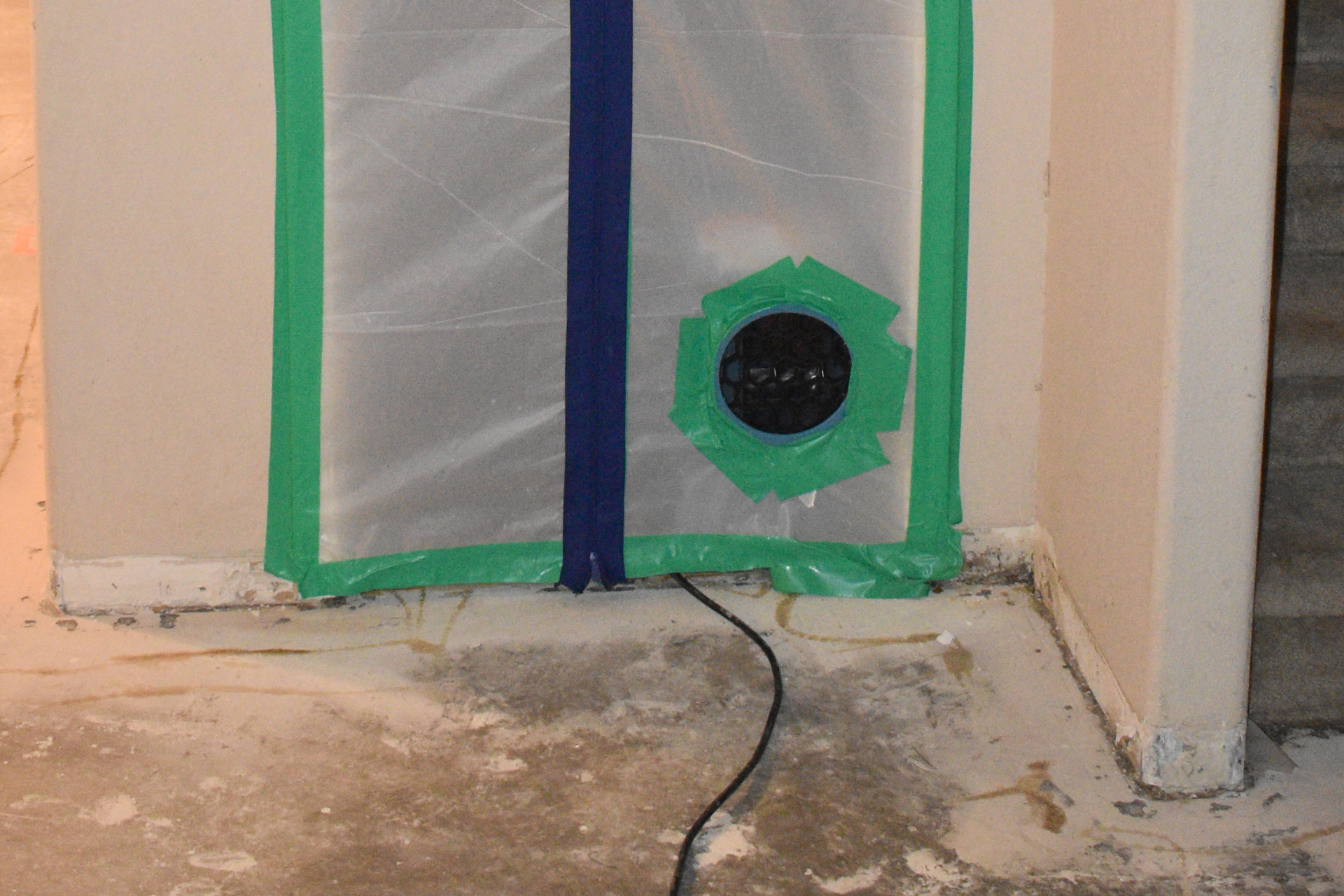
Water damage can be a homeowner’s worst nightmare. Whether it’s due to a leaky roof, a burst pipe, or flooding, the aftermath can lead to various problems, with mold being one of the most daunting. At Utah Flood Guys, we understand the stakes involved in dealing with water damage and mold removal. So, let’s dive into how mold can spread after water damage and what you can do to prevent it. Understanding Mold Growth First, it’s essential to know that mold spores are everywhere. They’re in the air, on surfaces, and even in our homes! Typically, these spores remain harmless. However, when they encounter moisture, they can latch onto surfaces and start to multiply—often leading to a significant infestation. Mold thrives in damp, warm environments, making places affected by water damage perfect breeding grounds. After an incident, one of the critical mistakes homeowners make is assuming that mold will not become an issue if the water is cleaned up quickly. Unfortunately, it only takes as little as 24 to 48 hours for mold spores to start forming after water exposure. Therefore, the clock starts ticking the moment water has intruded into your space. How Mold Spreads Once mold starts to grow, it can spread rapidly. The spores can travel through the air, infiltrating different rooms in your home or business. They can also latch onto clothing, furniture, or any porous materials, spreading the problem further. Common areas for mold growth include attics, basements, and anywhere else that retains moisture. Additionally, if the water damage is extensive and not addressed properly, mold can make its way into the walls and insulation. Unfortunately, this often leads to costly repairs, as simply cleaning surfaces won’t eradicate the issue hidden behind walls. How to Prevent Mold Growth Fortunately, there are steps you can take to minimize the risk of mold growth after water damage. Here’s how: 1. Act Fast Time is of the essence. If you experience water damage, contact a professional restoration service—like Utah Flood Guys—immediately. Quick action can prevent mold from establishing itself. 2. Thorough Drying Ensure that every inch of the affected area is dried completely. Use fans, dehumidifiers, and open windows to promote airflow and speed up the drying process. 3. Remove Affected Materials If you have saturated carpets, drywall, or insulation, consider removing these materials. Mold can grow extensively in porous materials, and sometimes the only way to fully eliminate it is to discard them. 4. Inspect and Clean Even after drying, monitor the area for any signs of mold growth. Use a mixture of water and vinegar to scrub surfaces, and always ensure to wear protective gear, such as masks and gloves. 5. Temperature Control Keep your home’s humidity levels low and maintain a temperature that discourages mold growth. Ideally, keep indoor humidity below 60%. 6. Consider Professional Help Mold remediation is often best left to the experts. At Utah Flood Guys, we provide comprehensive mold removal services, ensuring that your home or business is not only clean but also safe. Final Thoughts Water damage and mold may seem like an overwhelming challenge, but with prompt action and the right support, you can protect your home from these issues. Don’t wait until it’s too late—reach out to Utah Flood Guys for all your water damage and mold removal needs. Stay safe, stay dry, and keep your home mold-free!

Experiencing a fire can be one of the most traumatic events in anyone's life. The physical destruction is often visible—charred walls, damaged belongings, and a structure that feels far from home. But beyond the ashes lies a less visible, yet equally significant, emotional toll. At Utah Flood Guys, we understand that the journey to recovery encompasses not just restoring your property, but also healing from the emotional scars that a fire can leave behind. When a fire strikes, it can turn your world upside down in an instant. The feelings of loss, anxiety, and fear can be overwhelming. You might find yourself grappling with the uncertainty of what comes next, and that’s perfectly normal. The space you once felt safe in now carries a weight of devastation and sorrow. Recognizing these feelings is the first step toward healing. Understanding Your Emotions It’s essential to acknowledge that recovery isn’t just about repairing walls or replacing personal items. Emotions run deep, and the aftermath of fire damage often leads to feelings of grief and even guilt. You may mourn the loss of precious possessions, some of which may hold significant sentimental value. It can also be common to feel guilt over what you could have done differently to prevent the fire. These emotions are valid, and giving yourself permission to feel them is crucial. In the chaos of recovery, reaching out for support can be incredibly beneficial. Surrounding yourself with understanding friends, family, or professionals can create a strong network to help you navigate these profound emotions. The Role of Restoration At Utah Flood Guys, we recognize that restoring your physical space can help pave the way for emotional recovery. Our specialized fire damage restoration services go beyond cleaning up debris; they aim to restore a sense of normalcy and safety. When you choose us, you entrust your recovery to a team that understands the emotional weight of fire damage. The restoration process can also provide a sense of control in a situation that can feel hopeless. Watching professionals work diligently to bring your home or business back to life can instill a sense of optimism. As we carefully restore your property, we enable you to focus on your emotional wellbeing. Our team is trained to handle not only the physical aspects of restoration but also the emotional dynamics that clients experience during this challenging time. Taking the Next Step As you work through the emotional impacts of fire damage, remember that recovery is a journey. There’s no right or wrong way to feel during this time, but prioritizing your emotional health will help you rebuild your life more effectively. If you’re struggling with feelings of anxiety or loss, consider speaking with a professional who specializes in trauma recovery. Utah Flood Guys is here to support you every step of the way. Our compassionate team is dedicated to understanding your needs and restoring not just your property, but also your sense of peace. Together, we can help transform a devastating experience into a hopeful new beginning. If you find yourself in the aftermath of fire damage, don’t hesitate to reach out. With our help, recovering is not just possible; it’s a journey toward a brighter tomorrow.

When a fire occurs, the aftermath can be devastating, leaving not just charred structures but also a hidden threat: mold growth. At Utah Flood Guys, we understand that dealing with the consequences of fire damage can be overwhelming, but prioritizing mold remediation is a critical step that should never be overlooked. Understanding the Connection Between Fire and Mold You might wonder how a fire, which seemingly leaves no moisture behind, can lead to mold growth. The truth is, firefighting efforts often involve water—lots of it. Firefighters use hoses, sprayers, and sometimes even water-filled chemicals to extinguish flames. Unfortunately, this water can seep into walls, floors, and the very materials that are meant to be resilient. When these moist conditions remain unchecked, mold begins to thrive. The Dangers of Mold Growth Mold is not just an unpleasant sight; it poses serious health risks. For many people, mold exposure can lead to a range of health issues, including respiratory problems, allergic reactions, and aggravated asthma. This is particularly concerning for children, the elderly, and anyone with pre-existing respiratory issues. It’s not just about cleaning up; it’s about protecting your health and the health of those around you. The Myths Surrounding Mold Remediation Many homeowners believe that once the fire is out, the danger is gone. Unfortunately, this is a misconception. Mold can start to grow in as little as 24 to 48 hours after a moisture event. If you think you can just wipe it down with some bleach and call it a day, you’re mistaken. Mold spores are microscopic and can be difficult to eradicate without professional help. DIY attempts can often lead to mold spreading, making the problem much worse. Why Professional Mold Remediation is Essential At Utah Flood Guys, we emphasize the importance of professional mold remediation services. Our trained technicians utilize specialized equipment and techniques tailored to detect and remove mold effectively. We understand the complexities of restoration after a fire and approach each case with the care it deserves. Using advanced methods, we ensure that not only is mold removed, but we also address the underlying moisture issues that caused it in the first place. Our goal is to restore your property entirely, providing you with peace of mind. Preventing Future Mold Growth Once the necessary mold remediation is completed, taking preventive actions is essential. Simply patching up holes or repairing walls without addressing the root cause can lead to recurring problems. Our team will guide you on measures to keep your property dry and prevent moisture accumulation. This may involve improving ventilation, fixing leaks, or even installing dehumidifiers. Your Next Steps After Fire Damage If you’ve experienced a fire, don’t delay in seeking help. At Utah Flood Guys, we specialize in restoring homes and businesses after fire and water damage. Remember: addressing mold isn’t just an option—it’s a necessity for safeguarding your property and health. In conclusion, mold remediation is a vital next step after a fire. Your safety and wellbeing are our top priorities. Contact us at Utah Flood Guys today, and let us help you return your life to normalcy with our expert restoration services. Don’t let mold be a lingering issue—take action now!

When disaster strikes your home or business, the last thing you want is to be misled by common myths about water damage restoration. At Utah Flood Guys, we’ve seen our fair share of misconceptions that can hinder the restoration process and lead to further damage. Let’s break down some of these myths and set the record straight. Myth 1: All Water Damage Is the Same A common misconception is that all water damage is uniform, but the truth is that there are different categories of water damage, ranging from clean to contaminated. Clean water from a broken pipe is treatable, while floodwater can carry harmful pathogens and must be handled with extreme care. Understanding these categories is crucial in determining the right restoration approach. At Utah Flood Guys, we assess the situation thoroughly to tailor our services to the specific type of water damage incurred. Myth 2: You Can Dry Out Your Home on Your Own While it might be tempting to tackle water damage yourself, this can often lead to bigger problems in the long run. DIY drying methods may seem sufficient, but they rarely get to the root of the issue. Water can seep into walls, floors, and furniture, fostering mold growth if not properly addressed. Professional restoration services like ours use specialized equipment to ensure all moisture is removed and areas are thoroughly dried, safeguarding your home and health. Myth 3: Mold Will Not Grow in a Dry Area Many people believe that as long as an area is dry, mold will not develop. Unfortunately, this isn’t the case. Mold can start to grow within 24 to 48 hours after water exposure, particularly in areas that may not seem damp. Even if you've managed to get your home dry, hidden moisture can be lurking behind walls or under flooring. Our team at Utah Flood Guys performs thorough inspections and remediation strategies to eliminate any potential mold problems before they take hold. Myth 4: Restoration is Always a Lengthy Process Another myth is that the restoration process takes forever. While every situation is unique, a professional team can often restore your property much more quickly than you'd think. Factors that influence the timeline include the severity of the damage, the water source, and how quickly the restoration team arrives. Our goal is to minimize disruption while ensuring that your space is restored to its pre-damage condition efficiently and effectively. Myth 5: Insurance Will Cover Everything While insurance policies often cover water damage restoration, not every type of damage is fully covered under all policies. Understanding your specific policy can be confusing, and many people assume they are covered without fully reviewing the details. It’s advisable to keep an open dialogue with your insurance provider and to consult with restoration professionals who can help clarify what can be covered and how to document the damage properly. Final Thoughts If you ever face water damage in your home or business, remember these myths to avoid costly mistakes. At Utah Flood Guys , we’re here to debunk misconceptions and provide reliable, expert restoration services. Don’t let myths hold you back from restoring your space efficiently. Contact us today to learn how we can help you get back on track after water damage strikes!
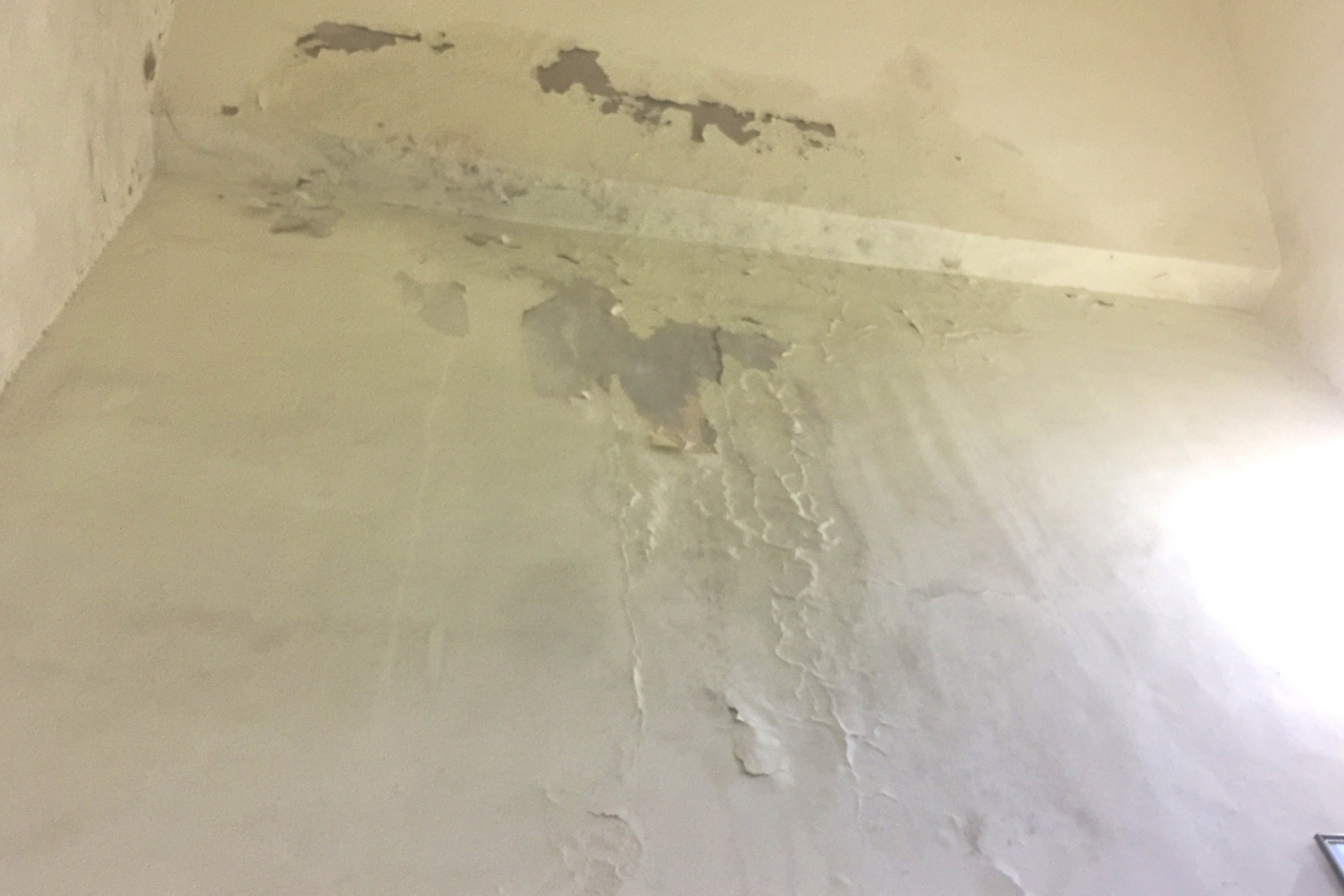
When disaster strikes in the form of a water leak or flood, understanding the type of water involved is crucial. At Utah Flood Guys, we’re dedicated to helping you navigate the complexities of water damage restoration. One key aspect that often gets overlooked is the categorization of water damage—clean, gray, and black water. Knowing the difference can make a significant impact on how you address the problem and restore your property. Clean Water Damage Let’s start with clean water. This type of water damage generally comes from a clean source, such as a broken pipe, a leaky sink, or rainwater. Since it’s free from contaminants, clean water poses minimal health risks, making it more manageable. When addressing clean water damage, it's essential to act quickly to prevent mold growth and further damage to your property. If you find yourself dealing with clean water damage, don’t panic! Focus on soaking up the water with towels, using a wet/dry vacuum if possible, and ensuring proper ventilation in the affected area. Since clean water can turn into gray water if left unattended, make sure to schedule a professional assessment with Utah Flood Guys. We’ll help you ensure that your home or business is back to normal in no time. Gray Water Damage Next up is gray water damage, which comes from sources like washing machines, dishwashers, or sinks—the kinds of places that have some level of contamination but aren’t classified as hazardous. Gray water typically contains soap, dirt, and food particles, making it riskier than clean water. While it might not seem too dangerous at first glance, prolonged exposure can lead to health issues and more extensive damage if not addressed swiftly. If you’re dealing with gray water, it’s crucial to wear protective gear, including gloves and masks, to avoid skin contact or inhalation of contaminants. Do not attempt to clean up gray water alone if the area is extensive—call in the experts at Utah Flood Guys! We have the right tools and knowledge to safely remove and restore your property while minimizing any health risks. Black Water Damage Now, let’s talk about the most severe category: black water. This classification includes water that is contaminated with pathogens, bacteria, and toxins—think sewage spills, flooding from rivers, or water that has been sitting stagnant for a while. Black water poses significant health risks and is not something you should tackle on your own. If you find yourself facing a black water situation, it’s critical to evacuate the area and contact a professional restoration company immediately. Utah Flood Guys specializes in comprehensive water damage restoration, and we have the training and equipment necessary to handle black water safely and effectively. Final Thoughts Understanding the differences between clean, gray, and black water damage is vital for proper response and restoration. At Utah Flood Guys , we are here to help you every step of the way, whether you’re dealing with a small leak or a significant flood. Remember, the sooner you act, the better chance you have of minimizing damage and keeping your property safe and healthy. Don’t hesitate to reach out for assistance! Your peace of mind is our priority.

Mold is an unwelcome guest that can sneak into our homes and businesses, often without us even realizing it. If you’ve experienced water damage, it’s crucial to act swiftly and safely to address any potential mold issues. At Utah Flood Guys, we understand the importance of a thorough and professional mold removal process. Here’s what you should know about safe mold removal and what to expect when you reach out to us. Understanding Mold Mold thrives in damp, humid environments. It can grow on various surfaces, including wood, drywall, and even your beloved furniture. Not only can mold damage your property, but it can also pose health risks, especially for those with respiratory issues or weakened immune systems. This makes early detection and removal essential for maintaining a healthy indoor environment. Signs of Mold Before you can tackle a mold problem, you need to know what to look for. Common signs of mold include: - A musty odor - Discoloration on walls, ceilings, or floors - Water stains from previous leaks - Increased allergy symptoms, like sneezing and coughing If you notice these signs, it’s time to call in the professionals. The Mold Removal Process When you contact Utah Flood Guys for mold removal, you can expect a systematic approach that prioritizes safety and effectiveness. 1. Inspection and Assessment The first step we take is to conduct a thorough inspection of your property. We’ll look for visible mold, as well as areas that may be at risk due to moisture. Our team will assess the extent of the damage and develop a plan tailored to your situation. 2. Containment To prevent mold spores from spreading during the removal process, we will set up containment areas. This could involve using plastic sheeting and negative air pressure machines to ensure that the affected area is sealed off from the rest of your home or business. 3. Air Filtration and Cleaning We use specialized air filtration systems to capture mold spores and prevent them from circulating in the air. This step is crucial for maintaining good indoor air quality, especially if anyone in the space has health concerns. 4. Mold Removal Once containment and air filtration are in place, our trained professionals will begin the mold removal process. This may include scrubbing surfaces with mold-killing solutions, removing and disposing of contaminated materials, and cleaning affected areas thoroughly. 5. Restoration After the mold is removed, we’ll focus on restoring your property to its pre-damage condition. This might involve repairs, painting, or even rebuilding sections that were significantly affected. Our goal is to ensure your space is not only mold-free but also safe and comfortable. 6. Prevention Tips To keep mold at bay in the future, we’ll provide you with practical tips. This includes controlling humidity levels, ensuring proper ventilation, and addressing any leaks immediately. Prevention is key to avoiding a mold reoccurrence! Conclusion Mold removal is not a do-it-yourself task. It requires expertise, experience, and the right equipment to ensure it’s done safely and effectively. At Utah Flood Guys , we’re here to help you every step of the way. If you suspect mold in your home or business, don’t wait—contact us today for a comprehensive inspection and to regain peace of mind! Remember, a healthy environment starts with prompt action against mold.

When disaster strikes, whether it be a fire in your home or a mishap in your business, the aftermath can be overwhelming. The physical and emotional toll can leave you feeling lost and unsure of what to do next. However, one critical step not to overlook is smoke and soot cleanup. Many people may think they can handle this task on their own, but the truth is that professional help can make all the difference. So, why consider contacting experts like Utah Flood Guys for smoke and soot cleanup? Let’s dive into some compelling reasons. 1. Comprehensive Understanding of Smoke Damage Smoke can seep into every nook and cranny of your property, leaving behind harmful residues and lingering odors. Professionals are trained to understand smoke’s behavior and how it interacts with different materials. They know that surfaces that seem unaffected can still be harboring harmful particles. By hiring experts, you ensure a thorough assessment and cleanup process that covers areas you may not even think to check. 2. Specialized Equipment and Techniques Smoke and soot cleanup isn’t just a matter of wiping surfaces with a cloth. Professionals come equipped with industrial-grade equipment and specialized cleaning techniques that are essential for effective cleanup. For example, their tools can remove soot particles from air ducts, walls, and furnishings far better than standard household cleaning supplies. By using the right methods and equipment, they can ensure that your space is not just clean but truly restored. 3. Health Hazards Smoke and soot can pose significant health risks if not handled properly. Inhalation of soot particles can lead to respiratory issues, and certain residues can be toxic. When you choose to work with Utah Flood Guys, you’re not only prioritizing the cleanliness of your space, but you are also protecting your health and the health of your loved ones or employees. Professionals know how to manage and dispose of hazardous materials correctly, minimizing any potential health risks. 4. Time and Stress Savings The aftermath of a fire can be emotionally taxing. The last thing you want to do is dedicate countless hours to a cleanup process when you could be focusing on recovery and getting your life back to normal. Hiring professionals allows you to save time and reduce stress. They will handle the heavy lifting and intricate details of the cleanup, allowing you to focus on what matters most to you. 5. Insurance Expertise Navigating insurance claims after a fire can be complex and confusing. Professionals are often well-versed in dealing with insurance companies and can help guide you through the process. They can provide detailed documentation of the damage and cleanup efforts, which can be invaluable when it comes time to file a claim. Conclusion While it might be tempting to tackle smoke and soot cleanup on your own, the benefits of professional help are hard to ignore. With Utah Flood Guys , you get a team that understands the intricacies of smoke damage and is equipped to restore your property efficiently and safely. Don’t underestimate the significance of having knowledgeable professionals on your side; it can lead to a faster recovery and peace of mind. When trouble strikes, remember that you don’t have to face it alone—reach out to the experts and let them help you reclaim your space.

Mold is sneaky, isn't it? One minute, your home feels safe and sound, and the next, you’re dealing with that musty smell and unsightly patches creeping up the walls. At Utah Flood Guys, we know mold loves to hide in places you wouldn’t expect, making it crucial to be aware of its favorite hangouts. Let’s dive into the most common places mold loves to call home in your house. 1. Bathrooms: The Dampest Room in the House It’s no surprise that bathrooms are a prime target for mold due to their frequent moisture. From showering to the sink filling up, this room creates a perfect breeding ground for mold, especially in grout lines and caulk around tubs and sinks. Don’t forget to check behind the toilet and in any bathroom cabinets where spills can go unnoticed. Keep your bathroom well-ventilated, using fans or opening a window to help mitigate mold growth. 2. Kitchens: Not Just for Cooking Your kitchen might be where you whip up your favorite meals, but it’s also a hotspot for mold. Leaky pipes beneath the sink and around the refrigerator can provide moisture needed for mold to thrive. Pay attention to food spills, too. Those forgotten crumbs beneath the fridge or in the pantry can lead to moldy situations. Regularly check for spills and maintain cleanliness to keep those pesky spores at bay. 3. Basements: The Underdog Basements can be a haven for mold, especially if they’re damp or poorly ventilated. The combination of humidity and warmth creates ideal conditions for mold growth. Check for any cracks in the foundation that may allow moisture in, and keep an eye on any stored items that may not be moisture-resistant. It’s also recommended to use a dehumidifier to keep humidity levels low. A little prevention goes a long way in combating mold in your basement! 4. Attics: The Misunderstood Space When we think of mold, attics often don’t come to mind, but they can be a hotbed for mold development, particularly if there’s poor insulation and ventilation or past water damage. Condensation can build up in attics, especially during warmer months when the attic is significantly warmer than the outside air. Make sure to inspect your attic regularly, looking for any signs of mold or water damage, and ensure proper ventilation. 5. Windows and Window Sills: Often Overlooked Have you ever noticed the condensation building up on your windows during the colder months? That moisture can lead to mold growth on and around window sills. Mold loves the organic materials found in the woodwork, and it doesn’t take long for a small problem to turn into a big one. Regularly wipe down your windows with a solution of water and vinegar to keep mold at bay. Final Thoughts Being proactive about mold prevention is essential for maintaining a safe and healthy home. Regular checks in these common mold hideouts can help you catch problems before they grow. And remember, if you find mold in your home and aren’t sure how to handle it, the Utah Flood Guys are here to help! Our team specializes in mold removal and can help restore your home to a safe haven. Don’t let mold take over your space—stay vigilant and protect your home!
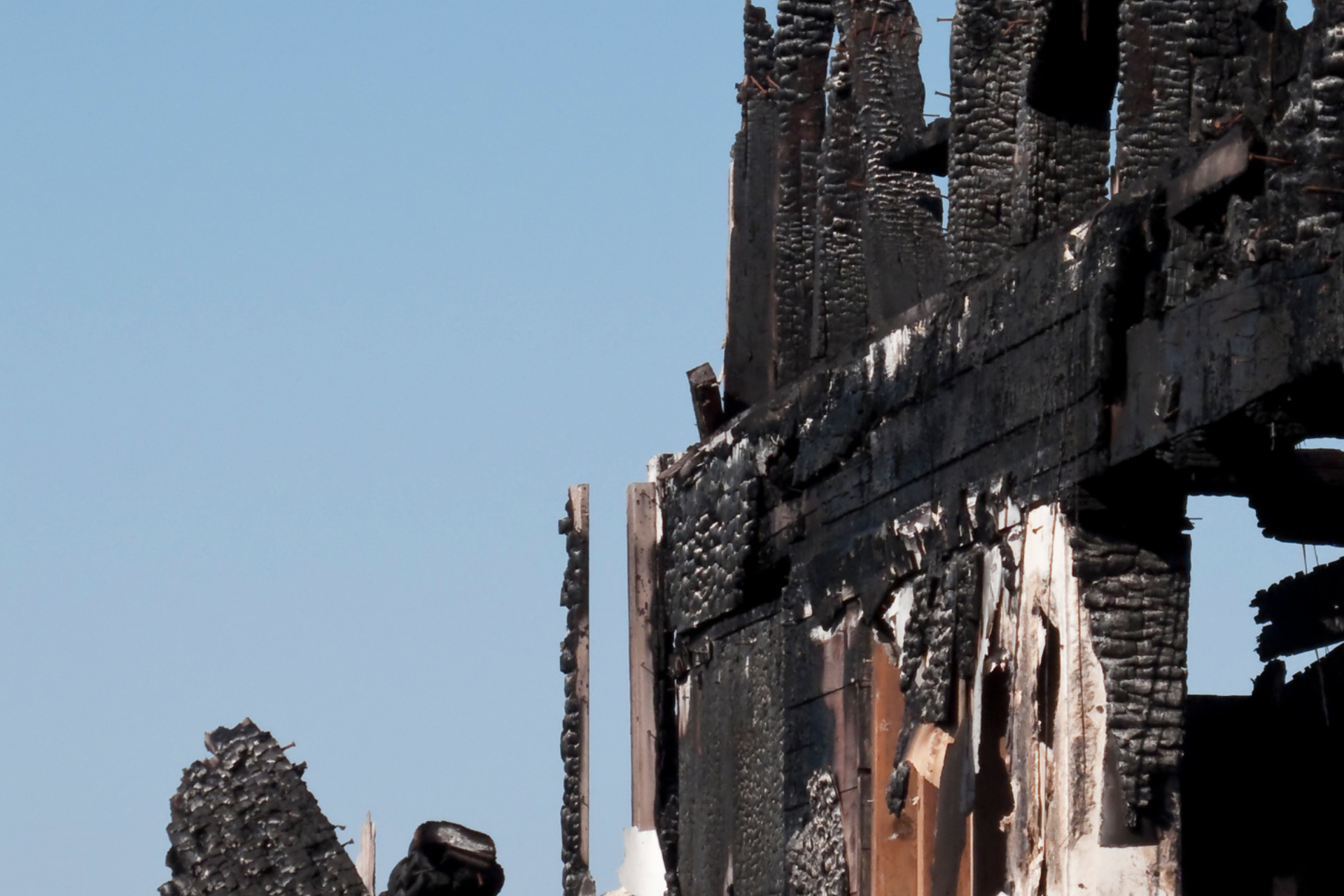
When disaster strikes—like an unexpected fire in your home or business—it can feel overwhelming. The aftermath of a fire leaves behind a tangled mess of ash and debris, and your first instinct might be to take a step back to process what just happened. However, delaying fire damage restoration can lead to more issues down the line that could have been easily avoided. Here at Utah Flood Guys, we understand the complexities of fire damage, and we’re here to tell you why prompt action is crucial. 1. Limits Further Damage The most immediate reason to act fast is to minimize further damage. Fire can spread quickly and, after the flames are extinguished, the residual heat can continue to damage surrounding materials and structures. Smoke and soot can seep into walls, furniture, and even the air you breathe. These contaminants can create unsafe living conditions and can be difficult to remove if left unattended for too long. The sooner you call a restoration professional, the less damage there will be, which means less time and money spent on repairs. 2. Protect Your Health The aftermath of a fire isn’t just a physical cleanup; it’s a health concern as well. Smoke inhalation can lead to serious respiratory issues, and soot can contain harmful chemicals. If you wait to address the damage, these health hazards could linger and worsen over time. Professional fire damage restoration teams, like ours at Utah Flood Guys, have the expertise and equipment to ensure a thorough and safe cleanup, allowing you to breathe easier in your home or workplace. 3. Preserve Your Belongings Your personal belongings, furniture, and even certain structural aspects of your property can often be saved if you act quickly. While some items may be beyond repair, others may just need a sensitive touch to restore them to their original state. Waiting too long can give soot and water damage time to settle in, making salvage efforts much less effective. Early contact with restoration experts maximizes the chances of saving your irreplaceable items. 4. Insurance Considerations Most homeowners' insurance policies cover fire damage, but filing a claim can become complicated if you delay your restoration efforts. Insurance companies often require prompt action to process claims efficiently. If you wait too long, you may find that your claim could be denied or diminished simply because you didn’t act quickly enough. By reaching out to Utah Flood Guys, we can help guide you through the process and work with your insurance to ensure you get the coverage you deserve. 5. Peace of Mind Finally, but by no means less important, restoring your home or business after a fire can provide peace of mind. Dealing with fire damage is stressful, and the uncertainty of waiting can amplify your worries. Quick action reduces stress, allowing you to focus on rebuilding your life. Here at Utah Flood Guys, we're not just about restoration; we’re about supporting you during a difficult time and restoring not just your property, but your sense of normalcy. In conclusion, fire damage restoration should never be put on the back burner. If you’ve experienced a fire, don’t hesitate—reach out to Utah Flood Guys today. We’re ready to step in, assess the damage, and help restore your space to its former glory. Don’t wait for the little things to turn into big problems; let’s tackle it together!
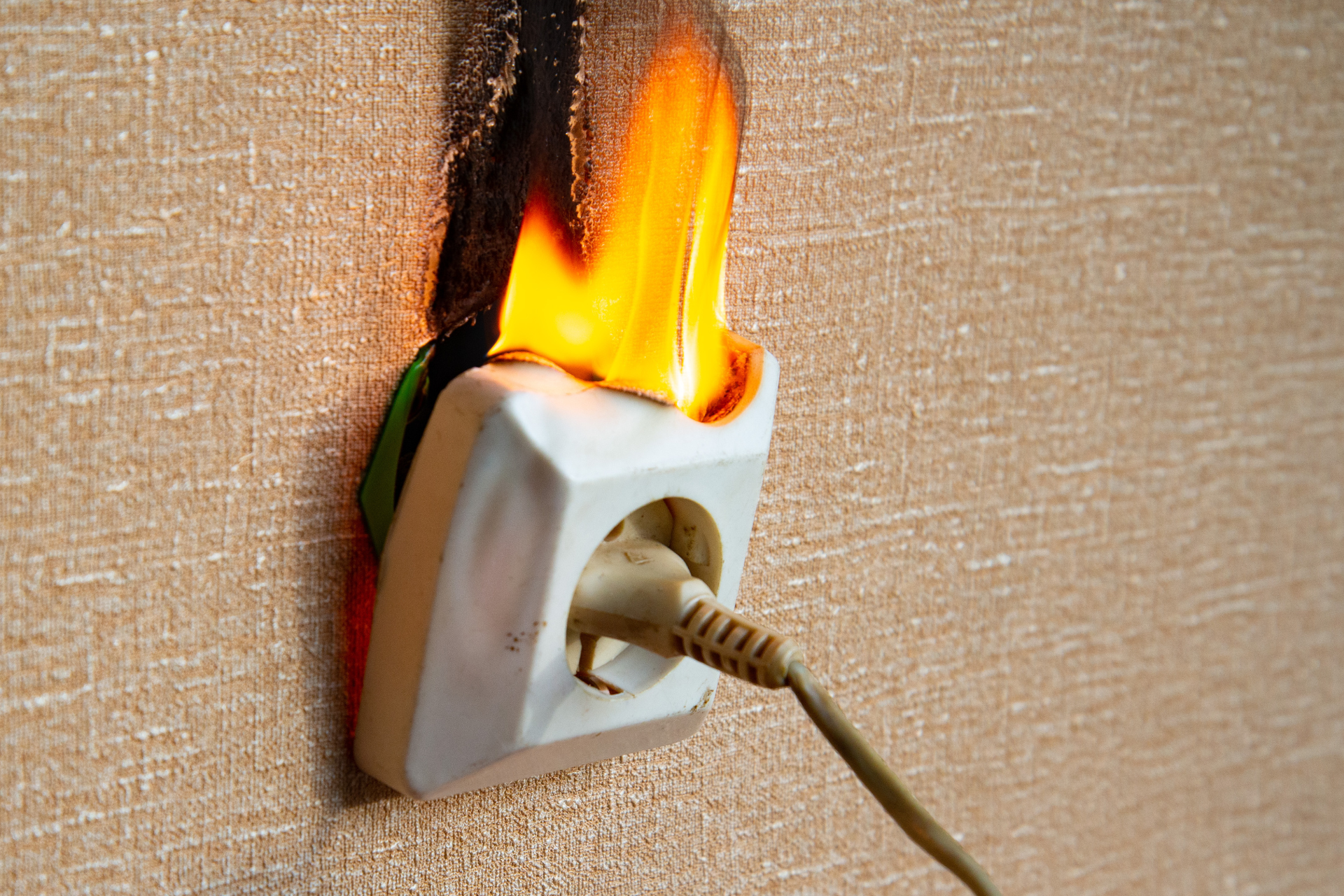
Every year, thousands of families experience the devastating effects of house fires. Not only can a fire lead to significant property damage, but it can also pose serious risks to the health and safety of everyone in your home. At Utah Flood Guys, we believe that knowledge is power. By understanding the leading causes of house fires and how to prevent them, you can safeguard your home and loved ones from disaster. 1. Cooking-related Fires It’s no surprise that cooking is one of the top causes of house fires. Whether it’s leaving a pan on the stove unattended or forgetting about a dish in the oven, kitchen mishaps can quickly turn dangerous. Prevention Tips - Never leave cooking food unattended, especially if you’re using oils or high heat. - Keep flammable items, like dish towels and paper, away from the stovetop. - Install a smoke detector in or near the kitchen, and make sure to test it monthly to ensure it’s working properly. 2. Heating Equipment As the winter chill sets in, many homeowners crank up their heating devices. Portable heaters can be especially risky if they’re placed too close to furniture or curtains. Prevention Tips - Keep heaters at least three feet away from anything flammable. - Always turn off portable heaters when you leave a room or go to bed. - Have your heating system serviced annually to ensure it’s functioning safely. 3. Electrical Malfunctions Faulty wiring, overloaded circuits, and outdated appliances can all lead to electrical fires. Unlike other causes, these fires can ignite without any visible warning signs. Prevention Tips - Inspect your home’s wiring, especially in older homes. Look for any frayed or exposed wires. - Don’t overload outlets; plug only one high-wattage appliance into each outlet. - Consider using surge protectors to safeguard your electronics. 4. Smoking Materials Cigarettes, matches, and lighters are common culprits in house fires, particularly when improperly discarded or left unattended. A small ember can quickly ignite a material nearby, leading to widespread damage. Prevention Tips - If you smoke, always use a sturdy ashtray and never discard smoking materials in a trash can indoors. - Make sure to fully extinguish-cigarettes before leaving the area. 5. Candles Candles create a lovely ambiance, but they can easily cause fires if left unattended. Statistics show that nearly 3,000 home fires are caused by candles each year. Prevention Tips - Always blow out candles before leaving a room or going to sleep. - Use flameless candles as a safer alternative. 6. Flammable Liquids Many households have flammable liquids such as gasoline, paint thinners, and solvents. If these are stored carelessly, they can easily ignite. Prevention Tips - Store flammable materials in approved containers and keep them in a cool, well-ventilated area away from heat sources. - Dispose of any unused or expired chemicals properly. By being aware of these common fire hazards and taking the necessary precautions, you can significantly reduce your risk of a house fire . However, should the unthinkable happen, Utah Flood Guys is here to assist you. Our team specializes in fire damage restoration, ensuring that your home returns to its pre-disaster condition quickly and efficiently. Remember, prevention is key, but having a plan in place can provide peace of mind as well. Stay safe out there!

When it comes to maintaining a safe and healthy environment in your home or business, mold is a word that can send shivers down your spine. Not only can it ruin your indoor aesthetics, but it can also pose serious health risks. At Utah Flood Guys, we know firsthand how damaging mold can be and the peace of mind that comes with professional mold testing and inspection. Let’s dive into why this service is crucial for every property owner. Understanding Mold and Its Dangers Mold is a type of fungus that thrives in moist environments. It can grow just about anywhere—under sinks, in bathrooms, on wet walls, or even in carpets that have been exposed to water damage. Not only is mold unsightly, but it can also trigger allergies, respiratory issues, and other health problems. For those with compromised immune systems or respiratory conditions, the dangers increase significantly. This is why understanding mold growth and its potential health impacts is essential. Signs You Might Need Professional Help It’s easy to dismiss a few dark spots on the wall as a simple stain, but mold can often be a sneaky intruder. If you notice a musty smell, increased humidity in certain areas, or visible patches of discoloration, it’s time to take action. Even if you don’t see or smell anything, a history of water damage or leaks should raise a red flag. Trust us, ignoring these signs is a gamble that can lead to bigger problems down the road. Why Choose Professional Testing and Inspection? While DIY methods might seem tempting, mold inspection and testing require a professional touch. Here are several reasons why it’s wise to enlist experts like Utah Flood Guys: 1. Comprehensive Assessment Our trained technicians use specialized equipment to identify mold growth that may not be easily visible. We conduct thorough inspections not just in obvious areas but also in hidden spots where mold can thrive. 2. Accurate Testing Whether it’s air sampling to determine spore concentrations or surface testing of suspected mold, our professional testing provides accurate data. This helps us understand the type and extent of mold present, which is essential for effective remediation. 3. Customized Treatment Plans Once we have the facts, we can design a treatment plan tailored to your specific situation. Every mold problem is unique, and a one-size-fits-all approach often leads to inadequate solutions. 4. Health Considerations Professionals understand the health risks associated with mold exposure. Our team takes necessary precautions during inspections and mold removal to ensure the safety of occupants and workers alike. 5. Peace of Mind Knowing that experts are handling the situation can lift a weight off your shoulders. At Utah Flood Guys, our goal is to restore not just your property but also your peace of mind. Final Thoughts When it comes to mold, proactive measures are key. The importance of professional mold testing and inspection cannot be overstated, especially in a state like Utah, where varying humidity levels can create the perfect environment for mold growth. Don’t leave your health or the integrity of your property to chance. Reach out to the Utah Flood Guys today, and let us help you ensure that your home or business remains mold-free and safe for all. Your health is worth it!

Water damage in your home can be a formidable adversary, often lurking beneath the surface long after the initial incident has occurred. Many homeowners might think that once the water recedes, it’s time to breathe a sigh of relief. But, unfortunately, the real danger may just be beginning. At Utah Flood Guys, we understand that not all water damage is visible, and untreated water damage can lead to a host of health risks for you and your family. Mold Growth: The Silent Threat One of the most pressing concerns following water damage is mold. Mold thrives in damp environments, often appearing within 24 to 48 hours after water exposure. This isn’t just a cosmetic issue; mold can severely impact your indoor air quality and, consequently, your health. Mold spores can cause allergic reactions, respiratory problems, and aggravate existing conditions like asthma. For individuals with compromised immune systems, the risks are even greater. Bacterial and Viral Infections Excess moisture can also create a breeding ground for bacteria and viruses. Contaminated water can seep into walls, carpets, and other absorbent materials, leading to the proliferation of harmful pathogens. Exposure to these can cause gastrointestinal illnesses, skin infections, and other serious health issues. In homes that have suffered flooding, the potential for encountering contaminated water increases significantly, making it crucial to address any water damage promptly. Structural Integrity and Safety Hazards While we often focus on immediate health threats, untreated water damage can also compromise the structural integrity of your home. Wood can weaken, drywall can crumble, and even the foundation can be affected. This not only presents risks in terms of safety but also can lead to costly repairs down the road. If a structure becomes unstable, it poses a risk of physical injury to those inside, particularly young children and pets who might not be aware of their surroundings. Chemical Concerns In addition to biological threats, water damage can amplify chemical risks. In many cases, water infiltrates areas where products containing harmful chemicals are stored. These can include cleaners, pesticides, and paints. When these substances mix with water, they can create toxic reactions or lead to hazardous exposure, which can have serious implications for your health. Diminished Quality of Life Ultimately, the consequences of untreated water damage extend beyond physical health. The anxiety of living in an environment that poses these risks can take a toll on your mental well-being. The presence of mold, lingering odors, and concerns about allergens can create a stressful atmosphere, diminishing your overall quality of life. If your home has experienced water damage, don’t wait for health issues to arise. At Utah Flood Guys, our team of experts is dedicated to restoring your home to a safe and healthy environment. We specialize in comprehensive water damage restoration and mold removal, ensuring that your home is not just dry but truly restored. The health risks associated with untreated water damage are not to be taken lightly. The sooner you address these issues, the better the outcomes for your home and your family. Remember, prompt action is the key to safeguarding your health and well-being. Contact Utah Flood Guys today to take the first step towards a safer, healthier home.

When it comes to water damage and the subsequent mold growth, there’s a lot of misinformation floating around. At Utah Flood Guys, we know that understanding the facts is crucial to protecting your home or business. So, let’s put some of those common myths to rest once and for all. Myth 1: You Can’t See Mold, So It’s Not There Many people think that if they don’t see visible mold, there’s no problem. Unfortunately, that’s simply not true. Mold thrives in damp, hidden areas like inside walls, under carpets, or in your attic. Just because it’s not visible doesn’t mean it isn’t taking root somewhere in your home. Regular inspections, especially after water damage incidents, are essential. Remember, where there’s moisture, there’s a good chance mold is not far behind! Myth 2: Bleach Kills All Mold While bleach can kill surface mold, it doesn’t penetrate porous materials, which means mold that’s deeply embedded will often survive. That’s why a thorough water damage restoration service, like the one offered by Utah Flood Guys, is vital. We don’t just cover up the problem; we address the underlying cause of mold growth to ensure it doesn’t return. Myth 3: All Mold is Toxic This is a common misconception that can lead to unnecessary panic. While certain types of mold can produce allergens or toxins, not all molds are harmful. In fact, some molds are harmless and even beneficial in nature. However, the best policy is to err on the side of caution. If you suspect mold growth, it’s smart to have it professionally assessed. Myth 4: You Can Wait to Address Water Damage Another prevalent myth is that it’s okay to let water damage sit for a while before dealing with it. Time is not your friend in these situations. Water can quickly lead to mold growth, and delaying cleanup can escalate the damage, making the restoration process longer and more expensive. At Utah Flood Guys, we recommend addressing water damage within 24 to 48 hours to reduce the risk of mold and structural damage. Myth 5: Air Drying Is Enough Some believe that simply opening windows and using fans is sufficient to dry out a damp area. While air circulation helps, it’s not always enough to eliminate moisture effectively, especially from porous materials like drywall or insulation. Professional water damage restoration services utilize specialized equipment to remove water and ensure that every nook and cranny is properly dried, decreasing the likelihood of mold growth. Myth 6: You Can Stop Mold by Spraying It with Chemicals Spraying chemical solutions on mold might make you feel like you’re tackling the issue, but it’s only a temporary fix. Mold can grow back if its source of moisture isn’t fully addressed. The key is to find and eliminate moisture sources, conduct a full removal of your mold , and take preventive measures for the future. In conclusion, separating fact from fiction regarding water damage and mold growth is vital for the health and safety of your home. If you suspect you have water damage or mold issues, don’t hesitate to reach out to the experts at Utah Flood Guys . We’re here to provide the restoration services you need — promptly, safely, and effectively. Remember, the best way to combat these issues is with timely action and professional help!
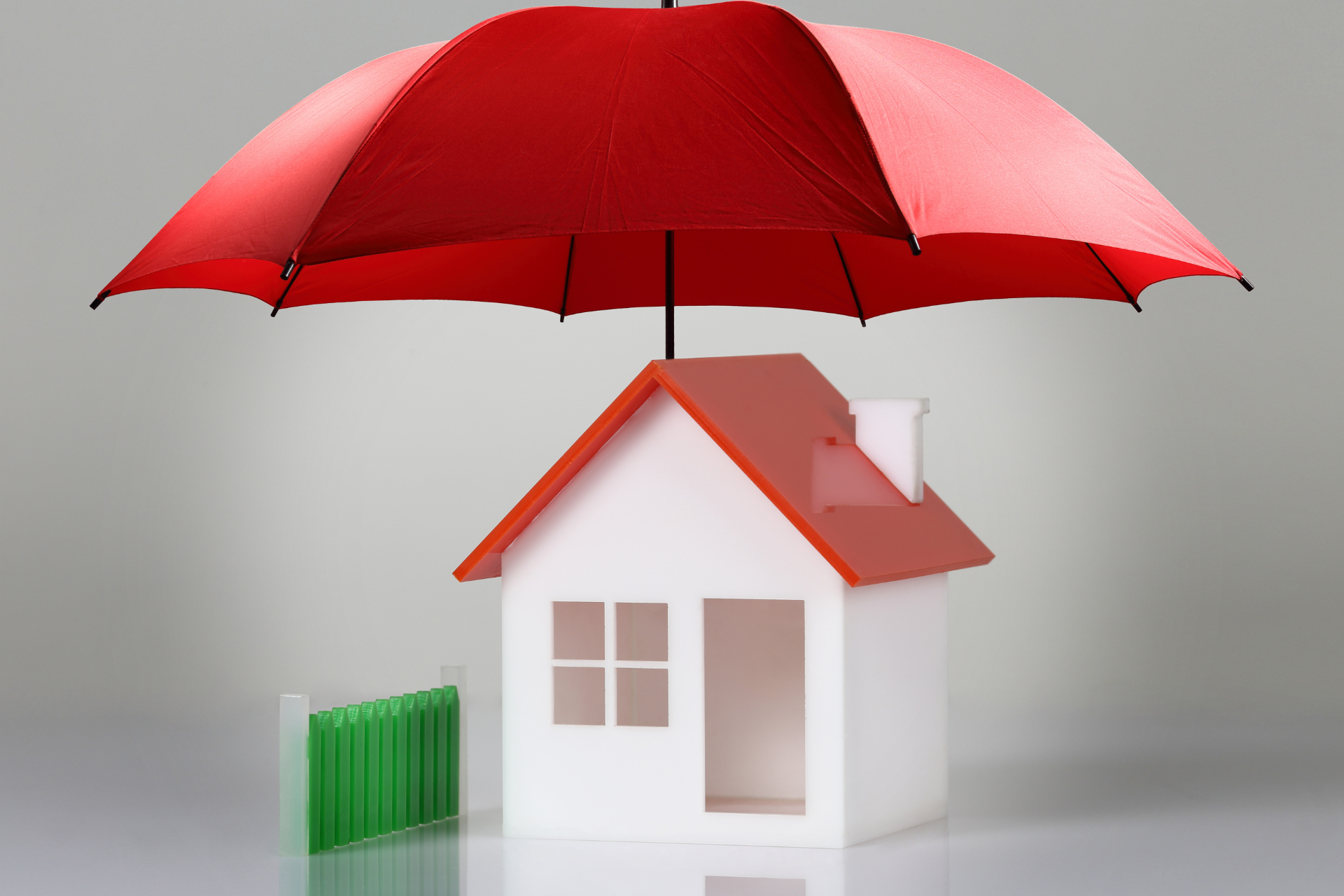
When disaster strikes, the last thing you want to be worrying about is whether you’ve documented all your valuables. At Utah Flood Guys, we understand that facing water damage, mold issues, or even fire devastation can be overwhelming. One important step you can take to safeguard your belongings is creating a home inventory. Not only will this make the claims process smoother, but it can also provide peace of mind. Here’s a straightforward guide to help you get started on compiling a comprehensive home inventory. 1. Start Room by Room Begin your inventory process room by room. This method prevents you from feeling overwhelmed and allows you to stay organized. Start with the most populated areas of your home, like the living room and bedrooms, before moving to less populated spaces like basements or attics. 2. Document Your Items As you walk through each room, make a list of all your valuables. Include: - Electronics TVs, computers, gaming consoles, etc. - Furniture Couches, beds, dining tables, etc. - Appliances Refrigerators, washers, and dryers. - Collectibles and Artwork Paintings, sculptures, or any unique items you cherish. - Clothing and Personal Items Don’t forget about shoes, jewelry, and other accessories. For each item, note details like the make, model, and estimated value. It might help to estimate the replacement cost rather than the purchase price, as the market value can fluctuate. 3. Take Photos or Videos A picture is worth a thousand words—especially when it comes to proving ownership. Use your smartphone or a camera to take clear photos or videos of each item, ensuring you capture any serial numbers, distinctive features, or damage if applicable. Make sure your images are well-lit and focus on the details. These visuals can be crucial during the claims process. 4. Keep Receipts and Documentation Whenever possible, retain receipts, warranties, or appraisals of your items. These documents provide essential proof of ownership and help you determine the value of your possessions. If you’ve made major purchases or collected expensive items, keep that documentation organized with your inventory. 5. Use Inventory Tools While a simple notebook can suffice, various apps and software are designed for home inventory management. Many of these tools allow you to categorize items, attach photos, and store your inventory in the cloud for easy access. Just search for apps that suit your needs—some are specifically designed for insurance claims! 6. Store Your Inventory Safely Don't just keep your inventory stored on your home device; it’s essential to back it up. Consider cloud storage options so that your information is secure and accessible during stressful times. Additionally, maintaining a physical copy in a safety deposit box or at a trusted friend’s house can ensure you have access to it even if your home is impacted by a disaster. 7. Update Regularly Finally, remember that your home inventory isn’t a one-and-done task. Regularly update your inventory to include new items acquired or discard those that you no longer own. A good rule of thumb is to do this at least once a year or after major purchases. Creating a home inventory might feel tedious, but at Utah Flood Guys , we know it’s a vital step to protect your property. By being proactive, you can ensure you’re not left in a lurch during an emergency. So, grab that notebook or download an app, and start cataloging those treasures today!
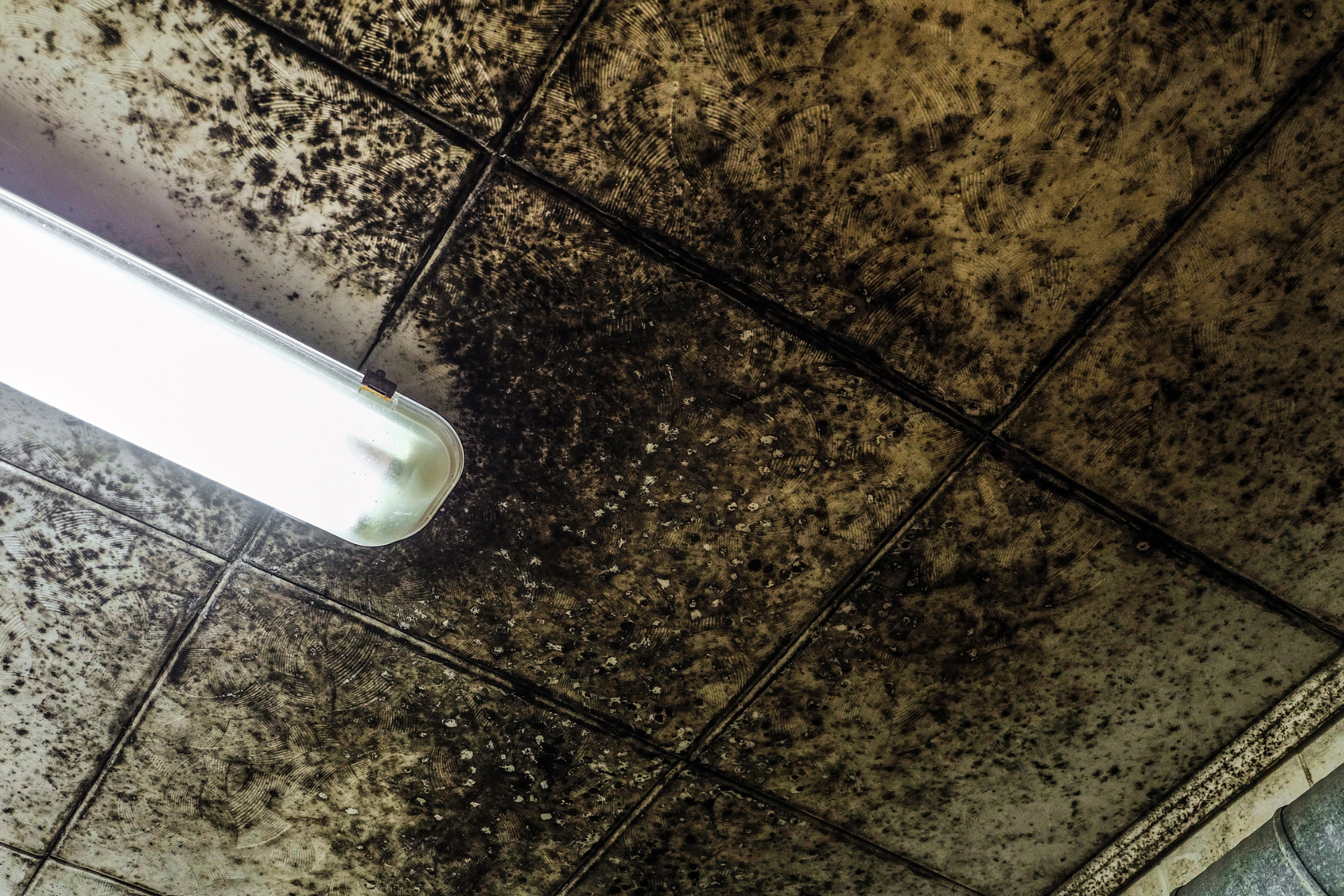
If you live in Utah, you may not immediately think of humidity as a significant concern. After all, much of the state is known for its dry climate. However, when it comes to crawl spaces and certain areas, especially after a flood or heavy rain, humidity can become a real issue. When combined with the right conditions, this humidity can give rise to unwanted guests: mold. At Utah Flood Guys, we understand the importance of keeping your home safe from mold, especially in those particularly humid areas. Here’s how to prevent mold growth in your crawl space and maintain a healthy living environment. 1. Control Humidity Levels The key to mold prevention starts with controlling the humidity in your home. Ideally, indoor humidity levels should stay between 30% and 50%. If you suspect your crawl space is too humid, consider using a dehumidifier. These handy devices can work wonders by pulling moisture from the air, which can help keep those pesky mold spores at bay. Regularly check the humidity levels with a hygrometer, which can give you an accurate reading. 2. Ensure Proper Ventilation Crawl spaces can often be tight and poorly ventilated, making them ideal breeding grounds for mold. Improving air circulation is crucial. If your crawl space has vents, make sure they are not blocked by debris or dirt. Additionally, consider installing fans that promote air exchange, keeping the space dry and preventing moisture from letting mold thrive. 3. Inspect for Water Leaks One of the primary causes for mold growth is water. Leaks can come from various sources: pipes, gutters, or your home's foundation. Make it a habit to inspect these areas regularly for any signs of leaks. If you notice wet spots or water pooling, address those issues immediately. Whether it’s repairing a leak or providing drainage solutions, fixing water issues goes a long way in preventing mold. 4. Use Mold-Resistant Materials If you're undertaking any renovations in your home, consider using mold-resistant materials. For instance, you can opt for mold-resistant drywall or paints with anti-fungal properties. In the crawl space itself, installing a vapor barrier can also help reduce moisture from the ground, offering an additional line of defense against mold. 5. Regular Inspections and Maintenance Don't wait for mold to rear its ugly head before taking action. Regular inspections of your crawl space can help catch potential problems early. Look for signs like discoloration on walls or surfaces and an earthy smell, which can indicate mold presence. If you do find mold, it’s crucial to act quickly to remove it and treat the area to prevent return growth. 6. Seek Professional Help If mold does start to take hold, don't hesitate to call the professionals. At Utah Flood Guys, our team specializes in mold removal and restoration. We have the tools and experience needed to handle both small and large-scale mold issues, ensuring your home is safe and sound. Conclusion Mold may be a common problem, but it's also preventable, especially in Utah's crawl spaces. By managing humidity, ensuring proper ventilation, inspecting for water issues, using resistant materials, and conducting regular maintenance, you can keep your home mold-free. Remember, when in doubt or when faced with mold problems, the experts at Utah Flood Guys are just a call away. Let’s keep your living space healthy together!
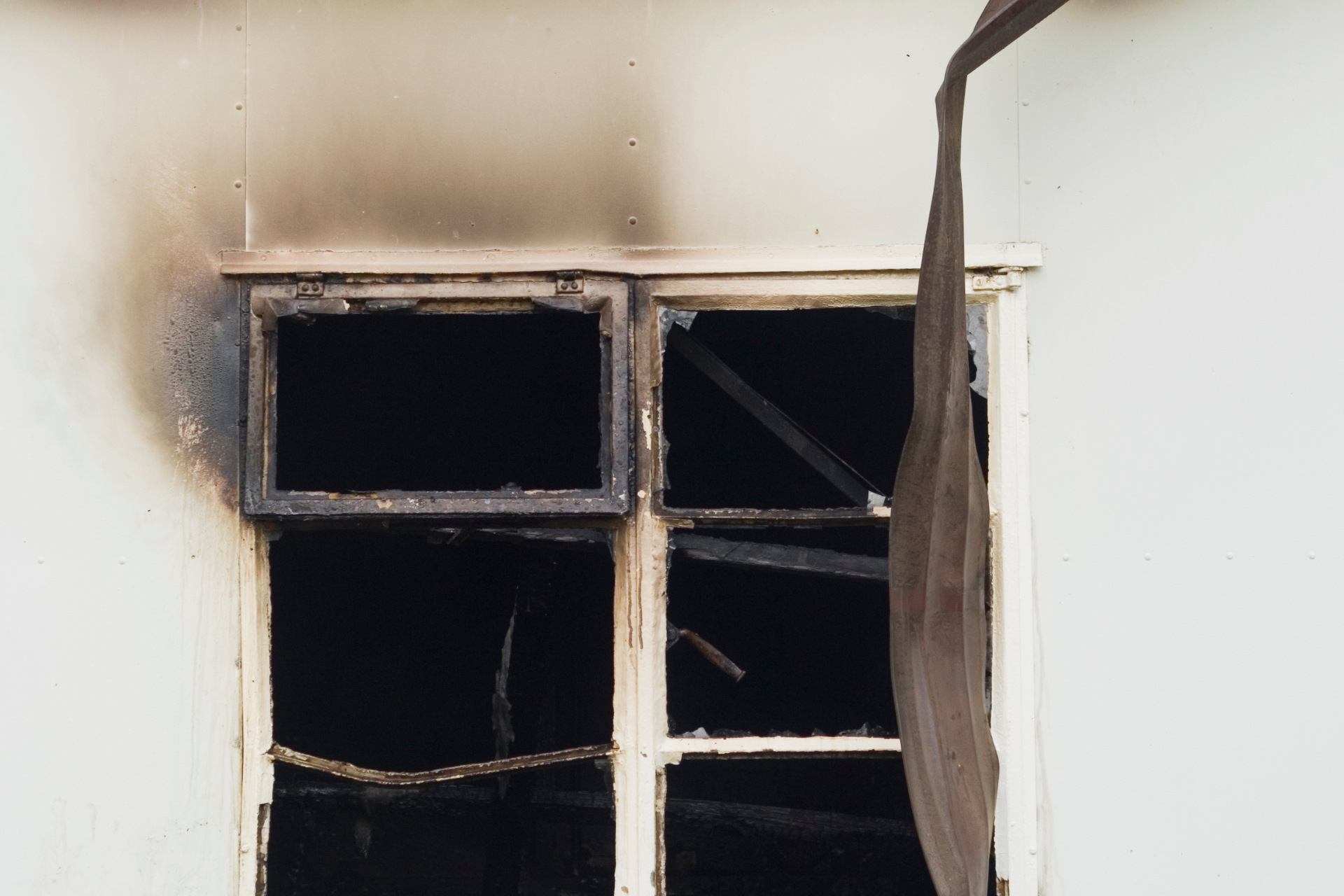
When a fire strikes, the immediate devastation can be overwhelming. While the flames often get the most attention, it's the smoke damage that can linger long after the fire has been extinguished. At Utah Flood Guys, we understand the importance of addressing both fire and smoke damage, as the repercussions can affect not only your home but also your health. Let’s dive into the long-term effects of smoke damage and why it’s essential to take action as soon as possible. Understanding Smoke Damage Smoke from a fire is not just an unpleasant odor—it is a complex mixture of chemicals, soot, and other particulate matter that can settle throughout your home. This residue often infiltrates walls, furniture, and carpets, leading to deep-seated issues. It’s more than cosmetic; the particles can literally cling to surfaces and become a long-term problem if left untreated. The Hidden Health Risks One of the most concerning aspects of smoke damage is its potential impact on health. Inhalation of smoke particles can lead to immediate respiratory issues, but the long-term effects can be even more insidious: 1. Respiratory Problems Smoke contains harmful toxins that can irritate the lungs. Individuals with pre-existing respiratory conditions, like asthma or chronic bronchitis, may find their symptoms exacerbated. Even healthy individuals can experience reduced lung function over time if exposed to smoke residue. 2. Cognitive Effects Recent studies suggest that prolonged exposure to smoke and its toxins can affect cognitive functions. Memory issues and difficulty in concentration could arise from the harmful particles that linger in your environment. 3. Skin and Eye Irritation Smoke damage can also lead to irritation of the skin and eyes, causing rashes and an ongoing discomfort that can significantly affect your quality of life. 4. Allergies and Sinus Problems Smoke residue can worsen allergies and contribute to chronic sinus issues due to inflammation caused by the irritants. Long-Term Damage to Your Home Beyond health concerns, smoke damage can have lasting effects on your home. If not addressed promptly, the following issues can arise: 1. Structural Integrity The corrosive nature of smoke can weaken the structural components of a house. It can harm finishes, wood, and even metal fixtures over time, leading to costly repairs. 2. Persistent Odor The smell of smoke can cling to your possessions, walls, and carpets. This unpleasant odor is challenging to eliminate and can permeate your home for years if not properly treated. 3. Aesthetic Decay Soot marks can mar your walls and ceilings. If there’s a buildup of smoke damage over time, it can lead to permanent discoloration, necessitating extensive restoration efforts. Taking Action At Utah Flood Guys, we recommend that you act quickly if you’ve suffered from fire damage. Our team specializes in smoke and fire cleanup, ensuring that all traces of smoke damage are effectively removed from your space. We use advanced techniques to restore your home and protect your health. In summary, smoke damage poses long-term risks to both your health and your property. The good news is that you don't have to face the aftermath alone. Reach out to Utah Flood Guys for prompt, professional restoration services and reclaim comfort and safety in your home today!
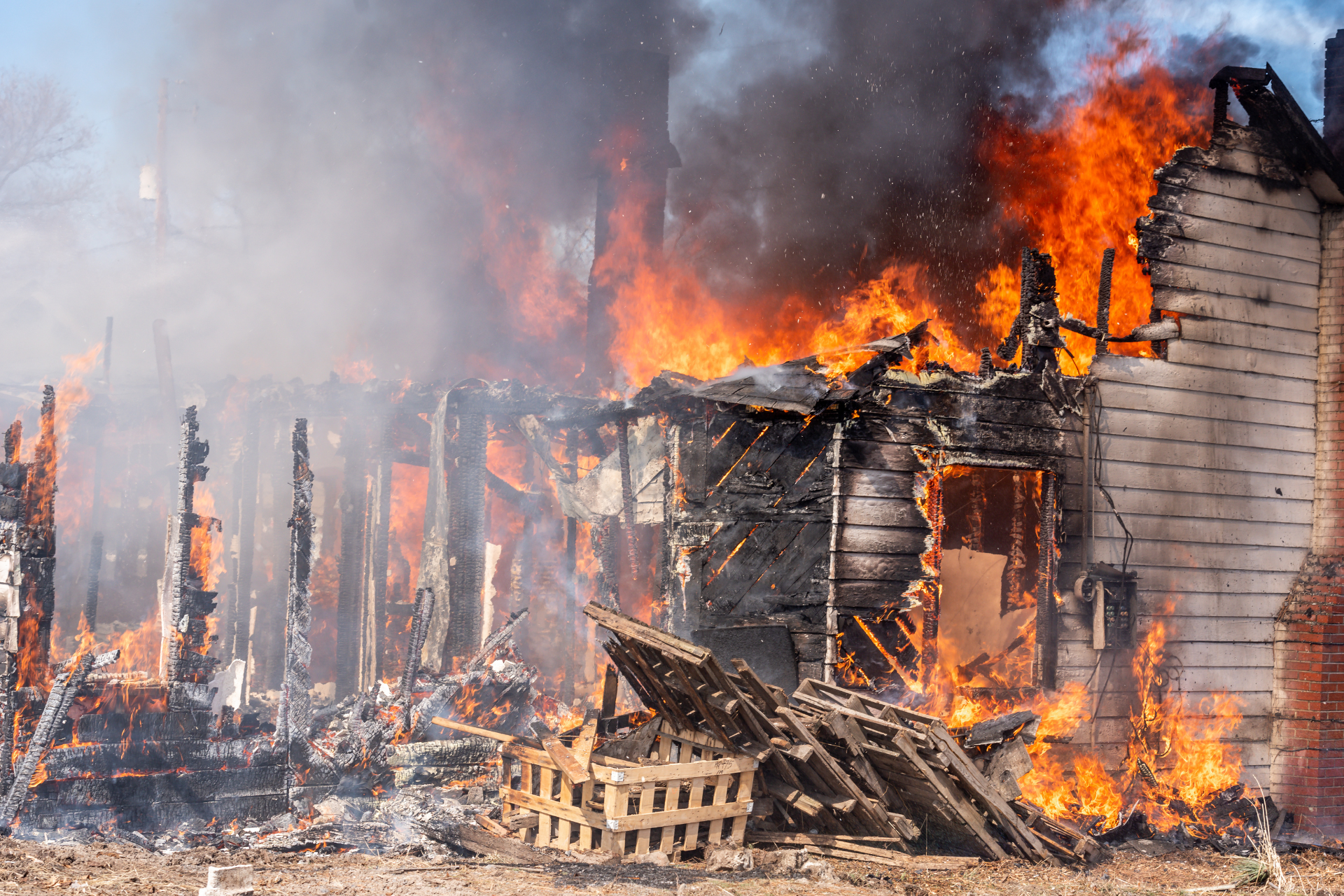
As summer settles in over our beautiful state of Utah, the allure of outdoor adventures beckons. However, with the beauty of our surroundings comes the responsibility of ensuring we keep our homes and communities safe from the devastating risks of wildfires. At Utah Flood Guys, we know that fire prevention is as critical as dealing with water damage or mold removal. So this summer, let’s talk about some simple yet effective ways to reduce the risk of fires and protect both your property and the picturesque landscape we cherish. 1. Create Defensible Space One of the most effective fire prevention strategies is creating defensible space around your home. Aim to keep a 30-foot buffer zone where vegetation is well-maintained and kept clear of dead plants or debris. Trim back trees and bushes that are too close to your home and consider using fire-resistant landscaping options. This will not only enhance your property’s curb appeal but also significantly reduce fire intensity should a blaze come through your neighborhood. 2. Properly Dispose of Lawn Clippings and Yard Waste During the summer, lawn maintenance can lead to piles of clippings and other debris, which are fire hazards. Be sure to dispose of any lawn waste properly. Instead of stacking it near your home, consider composting or taking it to a local yard waste recycling program. Empty garages and outdoor storage areas should remain clutter-free as well; anything that can catch fire should be stored safely away from your home. 3. Maintain Your Home's Exterior Keep your gutters clean! Utah’s dry months can lead to an accumulation of leaves and debris, which can easily catch fire. Regularly clean your gutters and check for any areas where embers could find their way into your home, such as vents and roof spaces. If you have wood siding, consider treating it with a fire-retardant coating to further protect your home. 4. Be Smart with Outdoor Grilling Barbecues and fire pits are summer staples for many families. However, it’s essential to ensure they are used safely to prevent accidental fires. Always keep an eye on your grill while it’s in use, and ensure it’s placed far from structures and flammable materials. Use long-handled tools and never leave a fire unattended. Once you’re done, allow the coals to cool completely before disposing of them in a metal container. 5. Stay Prepared and Informed Being prepared means being informed. Keep abreast of any fire advisories or warnings in your area. Consider creating an emergency plan with your family in case a fire threatens your neighborhood. Having an emergency kit ready and knowing multiple evacuation routes can make a significant difference in ensuring safety. 6. Know Your Fire Department's Recommendations Each community may have specific fire prevention guidelines. Take the time to reach out to your local fire department and get familiar with any recommendations they might have. They often provide valuable resources and can even conduct safety inspections. By implementing these fire prevention tips, you can enjoy all that summer in Utah has to offer while helping to protect your home and the environment. At Utah Flood Guys , we’re committed to being your partner in safety—whether it’s through mitigating the effects of water damage, conducting mold removal, or assisting with fire damage restoration. Let’s work together to keep our beautiful state safe this summer!
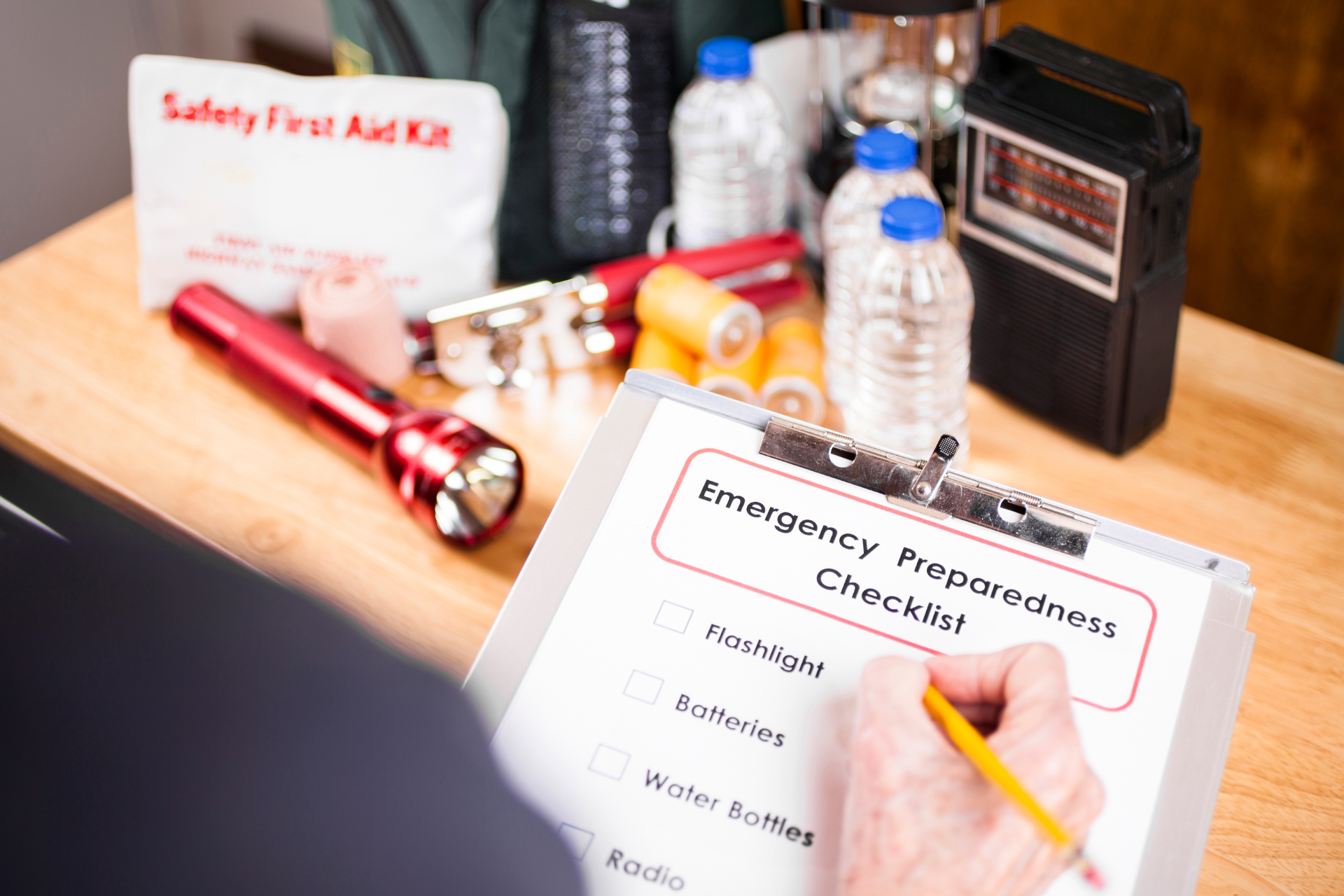
As we navigate through life, it’s easy to feel invincible—until disaster strikes. One moment everything seems normal, and the next, you’re facing a water-logged basement, smoke damage, or the potential for mold taking over your home. At Utah Flood Guys, we know firsthand the chaos that can ensue when Mother Nature decides to unleash her fury. That’s why it’s crucial to be prepared, not just for the aftermath of a disaster, but before it even happens. Understanding the Risks Living in Utah, we face a unique set of risks, from flash floods and heavy storms to wildfires and even the occasional earthquake. Each of these events can lead to severe property damage if we aren’t prepared. But here’s the good news: a little foresight can make a world of difference. By understanding the specific risks in our area, we can devise a plan tailored to our needs. Create a Disaster Plan The first step in disaster preparedness is having a solid plan. Gather your family (or roommates!) and discuss the potential threats you may face. What would you do if a flood warning was issued? How would you get out of your home if a fire broke out? Having these conversations upfront allows everyone to know their role in the event of an emergency. When creating your plan, include an emergency contact list, designated meeting spots, and ways to communicate if cell service goes down. Remember, being prepared also means being informed. Keep a battery-operated radio or a disaster preparedness app handy to stay updated during an event. Build an Emergency Kit Every household should have a well-stocked emergency kit. This kit should include essentials like water, non-perishable food, medications, flashlights, batteries, and first-aid supplies. Don’t forget about your pets—include their food and water as well. Storing everything in a waterproof container can be a lifesaver if flooding occurs. It’s also wise to keep important documents (like identification, insurance papers, and a list of your household possessions) in a waterproof bag as part of your emergency kit. This ensures that you have what you need to start the recovery process, no matter the disaster. Home Maintenance Matters Preventative maintenance goes a long way in disaster preparedness. Regularly check your roof for leaks, clear your gutters, and ensure your sump pump is functioning correctly. For those living near flood-prone areas, consider investing in flood barriers or sandbags. If you notice any signs of mold in your home, don’t wait! Addressing a mold issue before it gets out of hand can save you time, money, and health concerns down the line. After the Disaster: Call the Experts When disaster does strike, Utah Flood Guys is here for you. Our experienced team is ready to assist in water damage restoration, mold removal, and fire damage cleanup, ensuring your home gets back to normal as quickly as possible. We understand that the recovery process can be overwhelming, but you don’t have to face it alone. In conclusion, it’s better to be proactive than reactive when it comes to disaster preparedness. By creating a disaster plan, building an emergency kit, maintaining your home, and knowing when to reach out for help, you can face any situation with confidence. So, take the time now—because when the next big event occurs, you want to be ready!
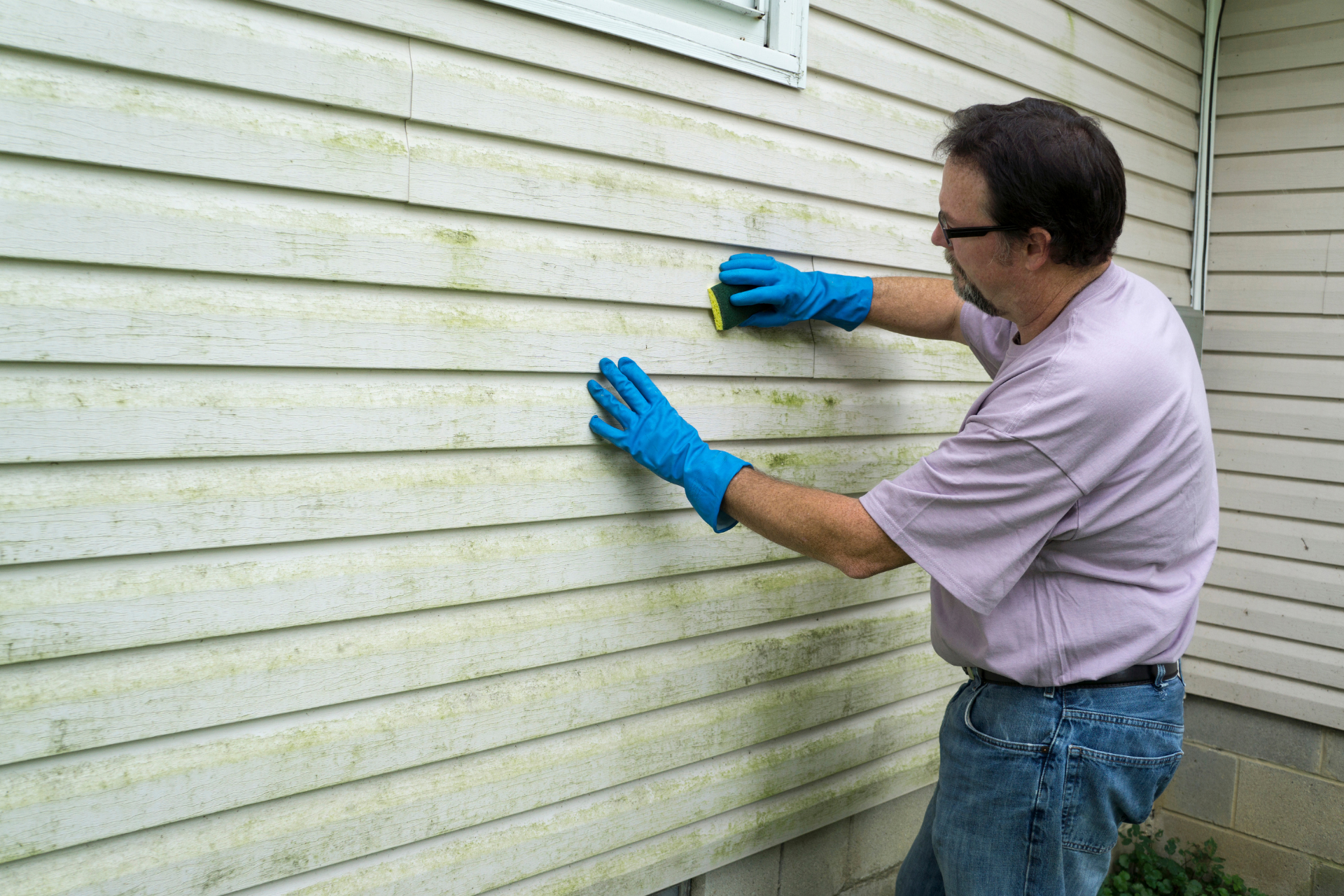
Utah is famous for its stunning landscapes, vibrant seasons, and outdoor adventures. But let’s not forget—it’s also home to a unique climate that can have a significant impact on property restoration needs. As residents of this beautiful state, we often find ourselves navigating the complexities of weather patterns that fluctuate from dry, scorching summers to frigid, snowy winters. This climate variability plays a crucial role in how we perceive and manage damages caused by water, fire, and mold. Dry Heat and Water Damage Utah's summer heat is nothing to scoff at. With temperatures soaring sometimes above 100°F, the dry air can cause rapid evaporation of moisture. While residents might breathe a sigh of relief when water-related issues that arise from melted snow in the spring eventually dry, things can get tricky. When water damage occurs, it can be deceptive. Oftentimes, it’s easy to overlook the signs of moisture intrusion that lead to mold growth. Without immediate attention, that hidden moisture can thrive in the shadows, posing a significant health risk. As Utah Flood Guys, we see property owners’ struggles with hidden water damage time and again. Our arid climate, while seemingly forgiving, can lead to unexpected consequences when it comes to water-related issues. The combination of hot, dry air and occasional moisture not only gives rise to mold growth but can also weaken structural integrity over time, leading to larger restoration needs. The Winter Wonderland and Fire Risks While winters in Utah are picturesque, with snow-capped mountains creating postcard-perfect scenes, they come with their own set of challenges. Snow accumulation can be a beautiful sight but can also lead to ice dams, which block proper drainage and cause water to back up into homes, causing serious water damage. Additionally, the dry winters—especially following a particularly dusty summer—can increase fire risk. As temperatures fluctuate, so too can the moisture levels in the air. A spark during these gusty, dry days can quickly escalate, resulting in fire damage that necessitates extensive restoration services. This inconsistent climate reminds us how crucial it is to prepare for every season and understand the implications on our properties. Proactive Measures and Restoration Solutions Given Utah’s unique climate, it’s essential for homeowners and business owners to adopt proactive measures when it comes to property maintenance. Regular inspections can help identify areas at risk for water or fire damage. For example, ensuring that roofs, gutters, and downspouts are in good condition can significantly reduce the likelihood of water intrusion during those tumultuous spring thaws. And, if the unfortunate does happen—call Utah Flood Guys! Our skilled team is here to assist you with a breadth of services, whether you're dealing with water damage, mold remediation, or fire damage restoration. We understand the challenges posed by Utah’s climate and are equipped with the knowledge and tools to address your specific needs efficiently. Conclusion Utah’s unique climate, with its extremes and variances, greatly impacts restoration needs across the state. By staying informed and proactive, property owners can mitigate risks and recover from damages more effectively. If you ever find yourself facing restoration challenges, remember the friendly experts at Utah Flood Guys are just a call away, ready to help restore your peace of mind!
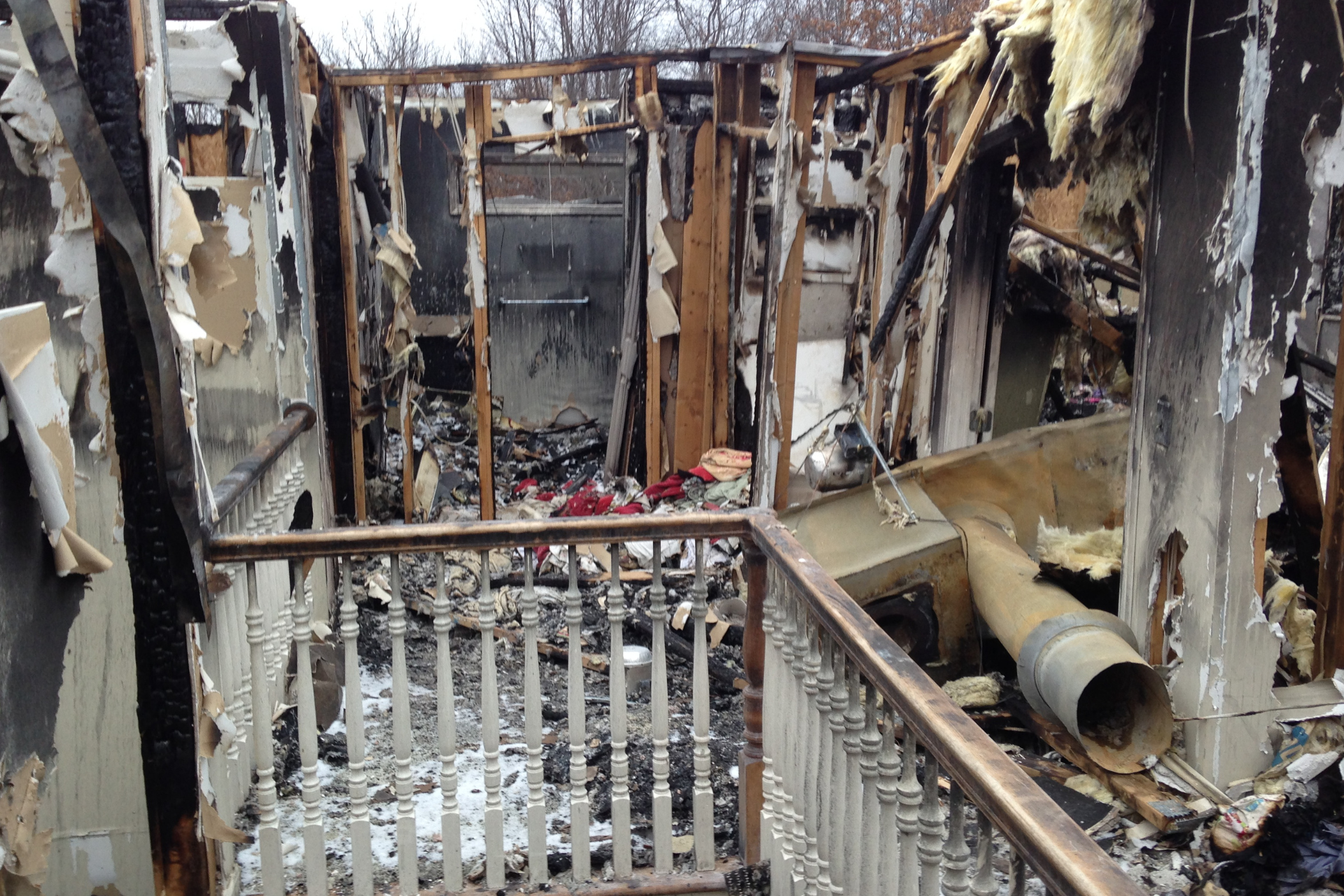
When a fire strikes, the aftermath can be devastating—not only in terms of physical damage but also in the emotions that follow. If you’re a homeowner dealing with this unfortunate scenario, knowing how to navigate the cleanup process can make all the difference. At Utah Flood Guys, we understand the challenges you face, and we're here to help guide you through the fire damage cleanup process. Assess the Damage The first step is to assess the damage. Once it’s safe to enter your home, take a few moments to evaluate the areas affected by the fire. Look for burnt materials, smoke damage on walls and ceilings, and any water damage from firefighting efforts. Make notes or take photos for your records, as this documentation will be essential when dealing with your insurance company. Safety First Always prioritize safety. Before you start any cleanup, ensure the structure is stable and free of hazards like exposed wires or unstable surfaces. If you're unsure about the safety of your home, it’s wise to seek the help of professionals. At Utah Flood Guys, our trained team can evaluate the risks and help you safely navigate your property. Contact Your Insurance Company Once you've assessed the damage, get in touch with your insurance company. Provide them with your detailed notes and photos of the damage. They will guide you through the claims process and inform you about what is covered under your policy. Be sure to keep all communication documented, just in case any issues arise later on. Begin the Cleanup Process After speaking with your insurance adjuster, it's time to roll up your sleeves—or better yet, call in the experts! Fire damage cleanup is a task that often requires specialized knowledge and equipment. Here’s a basic rundown of what you can expect during the cleanup: 1. Remove Debris Start by carefully removing any charred or damaged items from your home. This includes burnt furniture, destroyed personal belongings, and hazardous materials. Wear protective gear, such as gloves and masks, to avoid inhaling harmful substances. 2. Eliminate Odors Smoke can linger long after the flames are extinguished. Our team at Utah Flood Guys uses specialized equipment and techniques to effectively eliminate smoke odors, ensuring your home smells fresh again. 3. Clean Surfaces With the debris cleared, the next step is to clean all affected surfaces. This includes washing walls, ceilings, and floors with appropriate cleaning solutions to remove soot and contaminants. 4. Repair & Restore Finally, it’s time to start making repairs. Depending on the extent of the damage, you may need to replace drywall, paint, or even rebuild sections of your home. Our restoration specialists can help guide you through this process to ensure that your home is safe and restored to its original condition. Know When to Call Professionals While some homeowners may feel comfortable tackling fire damage cleanup on their own, we highly advise hiring professionals, especially for extensive damage. At Utah Flood Guys, we offer comprehensive restoration services tailored to your needs. Our expertise ensures you receive the best care and the quickest turnaround possible. In the face of tragedy, remember that you’re not alone. With the right knowledge and support, recovery from fire damage is entirely within reach. If you need assistance, contact Utah Flood Guys today to start your journey back to a safe and comfortable home.

When it comes to mold, seeing those unsightly spots in your home can send anyone into a panic. The instinct to grab some bleach and tackle it yourself may feel like the right move—but it can be one of the most dangerous mistakes you can make. Here at Utah Flood Guys, we understand the urgency of mold removal, but we also prioritize your safety and health. Let’s dive into the reasons why DIY mold removal isn't just risky; it can potentially make the problem worse. Understanding the Risks First and foremost, mold is more than just a pesky nuisance. Certain types of mold can produce mycotoxins, which may lead to respiratory issues, allergic reactions, and serious health problems. When you attempt DIY removal without the proper safety equipment, you can inadvertently expose yourself and your family to these harmful spores. If you dust or scrub too hard, you’re simply sending those spores into the air, where they can spread to other areas of your home and be inhaled. Inadequate Damage Assessment Another critical aspect to consider is that, during a DIY attempt, it's easy to overlook the extent of the problem. Mold often grows in hidden spaces such as behind walls, under floors, or in attics. If you only treat the visible mold without addressing the source or underlying issues—like moisture problems—the mold will likely return. Professional assessment involves checking for water damage and identifying the root cause, ensuring that you're not just masking a deeper problem. Improper Removal Techniques Many people think that bleach is the go-to solution for mold removal. While it may kill some surface mold, it doesn’t penetrate porous materials like wood, drywall, or fabric. Moreover, bleach can create toxic fumes when mixed with other cleaning agents. Effective mold remediation requires specific techniques tailored to the type of mold and the materials involved, something that professional teams like ours have mastered over years of experience. The Cost of Neglect If you opt for a DIY approach and the mold comes back, there's a good chance you’ll end up spending more in the long run. Remediation done incorrectly may lead to extensive damage requiring professional intervention later. This can result in costly repairs, especially if mold spreads unchecked. Addressing mold issues promptly and correctly can save you both time and money in the long haul. What Should You Do? If you suspect mold growth in your home, your best course of action is to reach out to professionals experienced in mold removal. At Utah Flood Guys , we utilize specialized equipment and techniques to completely remove mold while ensuring your home’s safety. Our team conducts a thorough assessment, identifies the source of moisture, and employs the right methods to guarantee that the mold doesn’t return. In conclusion, while it might seem tempting to tackle mold yourself, the risks far outweigh the benefits. Protect your health, your home, and your wallet by getting in touch with professionals. Let us help you reclaim your space in a safe and effective manner. Remember, when it comes to mold removal, a steady hand is the way to go—leave it to the pros!

Water damage is often an uninvited guest, creeping in through the cracks of your home or business, leaving behind a costly mess and a host of hidden dangers. Whether it stems from a broken pipe, a leaky roof, or flooding, the consequences can be far-reaching. One of the most concerning results of water damage is mold, but that’s not the only health risk lurking in the shadows. Let’s dive into the hidden dangers of water damage and explore why you should call the Utah Flood Guys at the first sign of trouble. Mold: The Silent Intruder Once water seeps into your property, it creates a perfect breeding ground for mold and mildew. These pesky fungi thrive in warm, damp environments and can start growing within 24 to 48 hours after the water damage occurs. Not just an unsightly nuisance, mold can present serious health risks. When inhaled or touched, mold spores can cause allergic reactions, respiratory issues, and other health problems. People with asthma, allergies, or compromised immune systems are particularly susceptible. Symptoms may include sneezing, coughing, skin rashes, and even more severe reactions in vulnerable populations. Mold exposure isn’t something to take lightly, which is why prompt action from Utah Flood Guys is essential. Waterborne Pathogens Standing water is not just a hazard; it can be a breeding ground for a variety of pathogens. Bacteria and viruses thrive in stagnant water, and once they invade your living space, they pose serious threats to your health. For instance, contaminated water can lead to gastrointestinal illnesses if ingested and might even result in skin infections if it comes in contact with your skin. The risks don’t stop there; water-related diseases can range from mild infections to life-threatening conditions, especially when contaminated water comes from unsanitary sources. This is why it’s crucial to address water damage swiftly—before you and your loved ones are exposed to these lurking dangers. Structural Issues and Safety Hazards Beyond health concerns, water damage can compromise the structural integrity of your property. Wood can warp, and drywall can weaken, leading to larger issues like mold growth and eventual collapse if left untreated. This not only creates a safety hazard for inhabitants but can also lead to costly repairs. Moreover, the presence of wet materials can create a perfect environment for pests like termites and carpenter ants, who are happy to munch away at the structural elements of your property. The Utah Flood Guys to the Rescue At Utah Flood Guys, we understand the urgency associated with water damage. Our restoration services are designed to tackle water extraction, mold remediation, and fire damage efficiently and effectively. Time is of the essence when handling water damage—you want to prevent mold from claiming your home while dodging health risks like pathogens. When water invades your space, don't wait for the hidden dangers to manifest. Give us a call! Our team is here to provide you with compassionate, prompt service tailored to your needs. With the right approach, we can restore your property and protect your health. In the face of water damage, remember: The longer you wait, the greater the risk. Turn to the Utah Flood Guys and let us help you take charge of your restoration today. Your health and safety are worth it!

Picture this: you've just returned home after a long day, only to discover your living room awash in water, courtesy of a burst pipe. The initial shock can leave you bewildered, but knowing what to do next is crucial. At Utah Flood Guys, we're here to help you navigate this stressful situation. Here’s a guide on what to do first and why calling in the professionals is essential. Step 1: Stay Calm and Assess the Situation First things first: take a deep breath. It’s natural to feel overwhelmed, but staying calm allows you to think clearly and take effective action. Start by assessing the extent of the water damage. If you’re dealing with a minor leak, you might be able to handle it yourself with some towels and buckets. However, if water is pouring out and spreading rapidly—especially if it’s affecting electrical outlets or your home’s structure—it’s time to escalate your response. Step 2: Turn Off the Water Supply If it’s safe to do so, locate the main water shutoff valve and turn it off immediately. This simple step can prevent further damage and mitigate the risk of mold growth. Remember, every second counts when it comes to water damage! Step 3: Disconnect Electrical Appliances Water and electricity do not mix. If it’s safe, unplug any electronic devices in the affected area. If you see that water has reached outlets or cords, do not attempt to touch them. Once the situation is under control, a professional can assist with safe clean-up and restoration. Step 4: Remove Valuables and Belongings Next, carefully remove any furniture, carpets, or personal items from the area, if you can do so without putting yourself at risk. Move these items to a dry place to minimize damage. Remember to document the damage with photographs for insurance purposes later on. Why Call Utah Flood Guys? While these initial steps can help mitigate damage, the true extent of water damage may not be apparent at first glance, and that’s why calling in professionals like Utah Flood Guys is essential. Here’s why: 1. Expert Assessment Our trained technicians will assess the situation quickly and provide insights into hidden water damage, including areas that may not be visible to the untrained eye. 2. Fast and Efficient Water Removal We have the right equipment, including industrial-grade pumps and vacuums, to handle water extraction effectively and quickly, preventing further damage. 3. Comprehensive Restoration Beyond just clean-up, we also offer mold removal and restoration services. Water damage can lead to mold growth within just 24-48 hours, which poses health hazards. Our team is equipped to address this risk promptly. 4. Insurance Expertise Navigating insurance claims can be overwhelming. We help document the damage and work with your insurance company to ensure you get the coverage you deserve. 5. Peace of Mind Water damage can be a traumatic experience. Letting the professionals handle it allows you to focus on what matters most—getting your life back to normal swiftly. In the face of a pipe burst emergency, the importance of swift action cannot be overstated. By knowing what to do and when to seek professional help, you can protect your home and financial investment. Should you find yourself dealing with such an emergency, don’t hesitate to reach out to Utah Flood Guys . We’re here for you, every step of the way.

If you're a homeowner or a business owner in Utah, you might have heard the term "black mold" tossed around in conversations about water damage and unhealthy living conditions. But what exactly is black mold, and should you be worried about its potential threat to your health? Let's dive into this topic so you can protect yourself and your loved ones. Black mold, scientifically known as Stachybotrys chartarum, is a type of mold that thrives in damp, humid environments. It's particularly notorious for appearing in homes that have experienced water damage—think leaky roofs, flooding, or high humidity levels. If you’ve ever faced the aftermath of water damage and didn’t act quickly, you might be at risk for mold growth. What’s the Big Deal About Black Mold? While all mold can be a nuisance, black mold poses specific risks that are worth paying attention to. It can release mycotoxins, which are toxic compounds produced by certain molds. Inhaling or touching these spores can lead to a variety of health issues, especially for sensitive individuals. So, what kind of health effects are we talking about? Exposure to black mold can result in symptoms similar to allergies, including sneezing, runny nose, and skin rashes. However, it doesn’t stop there. More severe reactions can occur for those with asthma or weakened immune systems. Prolonged exposure may lead to chronic respiratory problems, fatigue, and even neurological issues. If you notice any of these symptoms escalating in your household, especially after water damage, it’s time to take action. How to Spot Black Mold Identifying black mold can be tricky, as its dark color can often blend in with wet surfaces or even be confused with other types of mold. However, it typically has a slimy texture and is often found in hidden places: behind walls, under carpets, or in damp basements. A musty odor is also a telltale sign. If you catch a whiff of something that smells damp or earthy, you might have a mold issue brewing. Prevention is Key Prevention is always better than cure, and mold is no exception. After any water damage, it's crucial to act swiftly. Dry out any wet areas within 24-48 hours and ensure good ventilation throughout the space. Regularly check for leaks and leaks in roofs, pipes, and doors. If you ever feel overwhelmed by the cleaning process, don’t hesitate to call in professionals like Utah Flood Guys. We specialize in mold removal and can help you restore your property to its safe, healthy state. What to Do If You Find Black Mold Should you discover black mold in your area, addressing it quickly is crucial. If it's a small patch, you can attempt to clean it with a mixture of water and detergent. However, for extensive growth or if you're unsure about tackling the issue yourself, it's best to consult experts. Our team at Utah Flood Guys understands how to safely and effectively remove mold and ensure it doesn’t return. In conclusion, black mold is not something to take lightly. It can pose real health risks, especially if left unaddressed after water damage. Being proactive with prevention and taking swift action with any signs of a mold problem can go a long way in keeping your home or business safe. Remember, when in doubt, reach out to professionals who can help you navigate these tricky waters. Your health and peace of mind are worth it!

Experiencing a house fire can be one of the most devastating events in a person's life. The loss and chaos that comes with it can be overwhelming, making it difficult to think ahead. However, understanding the insurance claims process can help you regain some control in the aftermath. At Utah Flood Guys, we're here to guide you through this challenging journey. Assess the Damage After the fire department has cleared the danger and it's safe to enter your home, the first step is to assess the damages. Document everything. Take photos or videos of the affected areas, both inside and outside your home. This documentation is crucial when dealing with your insurance company. It may also be beneficial to list personal belongings that were lost or damaged. This tangible evidence can help substantiate your claim and ensure you’re compensated fairly. Contact Your Insurance Company Reaching out to your insurance provider should be one of your top priorities. They will guide you through the next steps and let you know what information they need. Be prepared to provide them with the details of the fire, including the date it occurred and the extent of the damage. The sooner you contact them, the quicker you can start the claims process. Understanding Your Coverage Your insurance policy will play a key role in determining what is covered. Familiarize yourself with your specific plan to understand the extent of your coverage. Common elements include: - Dwelling Coverage This covers the structure of your home. - Personal Property Coverage This covers the belongings inside your home. - Additional Living Expenses If your home is uninhabitable, this can help reimburse you for temporary living expenses. If you’re unclear about your coverage, don’t hesitate to ask your agent for clarification. Knowing what you’re entitled to will make the process smoother. The Claims Process Once your claim is filed, an adjuster will be assigned to assess the damage firsthand. They may walk through your property, compare it to your documentation, and ensure all damages are accounted for. This is why your notes and photos are so important—they help the adjuster get an accurate picture of the situation. After evaluating the damage, the adjuster will determine how much compensation you're eligible for. This can take time, so it's essential to stay in touch with your insurance company throughout this phase. Working with a Restoration Company One of the most important steps after a fire is to begin restoration as quickly as possible. Engaging professionals like Utah Flood Guys can help ensure that your home is completely restored to its pre-loss condition. We specialize in fire damage and can work directly with your insurance company, helping to simplify the process for you. Conclusion Filing an insurance claim after a house fire can be a daunting task, but knowing what to expect can help you navigate this traumatic experience. Remember to document everything, communicate openly with your insurance company, and don’t hesitate to seek professional help. At Utah Flood Guys , we’re here to support you in this difficult time, ensuring you emerge from the ashes with a restored home and peace of mind. Together, we can help you rebuild.

In the world of disaster cleanup, technology plays an increasingly vital role in restoring homes and businesses after water damage, mold issues, or fire incidents. At Utah Flood Guys, we understand how critical it is to leverage modern tools to provide the most efficient and effective restoration services possible. Whether you’re facing the aftermath of flooding or trying to eliminate that pesky mold, technology can make all the difference. Let’s dive into some of the fascinating technologies that are transforming the restoration industry, making our job easier and dramatically improving outcomes for our clients. Moisture Meters: The First Line of Defense When it comes to water damage, one of the biggest concerns is hidden moisture. This can lead to mold growth and structural damage if not addressed promptly. That’s where moisture meters come in. These handy devices allow restoration professionals to measure the moisture levels in various materials like wood, drywall, and concrete. By giving us precise readings, moisture meters help pinpoint exactly where the water has infiltrated. This ensures that our team will effectively target affected areas for drying and restoration, preventing future problems down the line. For homeowners, this means less guesswork and a more thorough recovery process. Infrared Cameras: Seeing Beyond the Surface Infrared cameras are another game-changing tool in the restoration toolkit. They work by detecting temperature changes in surfaces, which indicates potential areas of hidden moisture. For example, a wall that feels dry on the outside may hide dampness within that needs urgent attention. Using infrared technology allows Utah Flood Guys to efficiently assess an entire property without invasive measures, saving time and minimizing disruption for our clients. These cameras provide real-time visuals that enhance our understanding of the damage, helping us devise a customized plan for restoration. Air Movers and Dehumidifiers: Speeding Up the Drying Process Once we’ve assessed the damage, it’s time to start the drying process. Here, technology shifts into high gear with air movers and dehumidifiers. High-powered air movers circulate air to dry out wet areas quickly while dehumidifiers extract moisture from the air, creating an environment that inhibits mold growth. The effective combination of these devices can significantly reduce the drying time, which is crucial as every hour counts when it comes to restoring water-damaged properties. Faster drying means less chance for mold to set in, and ultimately a smoother recovery for our clients. Drones: A Bird’s Eye View of Damage Assessment In the landscape of severe disasters, drones are revolutionizing how we assess damage. These flying machines can survey large areas quickly and safely, providing real-time images that help our team evaluate the extent of the damage from hard-to-reach places. Using drones not only speeds up the assessment process but also enhances safety by allowing us to avoid hazardous situations on the ground. With comprehensive aerial images, we can devise more effective strategies to restore properties efficiently. Conclusion: Embracing the Future of Restoration At Utah Flood Guys , we’re committed to staying at the forefront of restoration technology. By harnessing the power of moisture meters, infrared cameras, air movers, dehumidifiers, and drones, we enhance our ability to quickly and effectively restore your property to its former glory. Whether you’re dealing with a minor leak or significant flood damage, rest assured that our skilled team is equipped and ready to tackle the job. In the face of disaster, technology not only offers solutions but also peace of mind. Trust us to navigate the recovery process with the best tools at our disposal, ensuring your home or business is back to normal in no time.
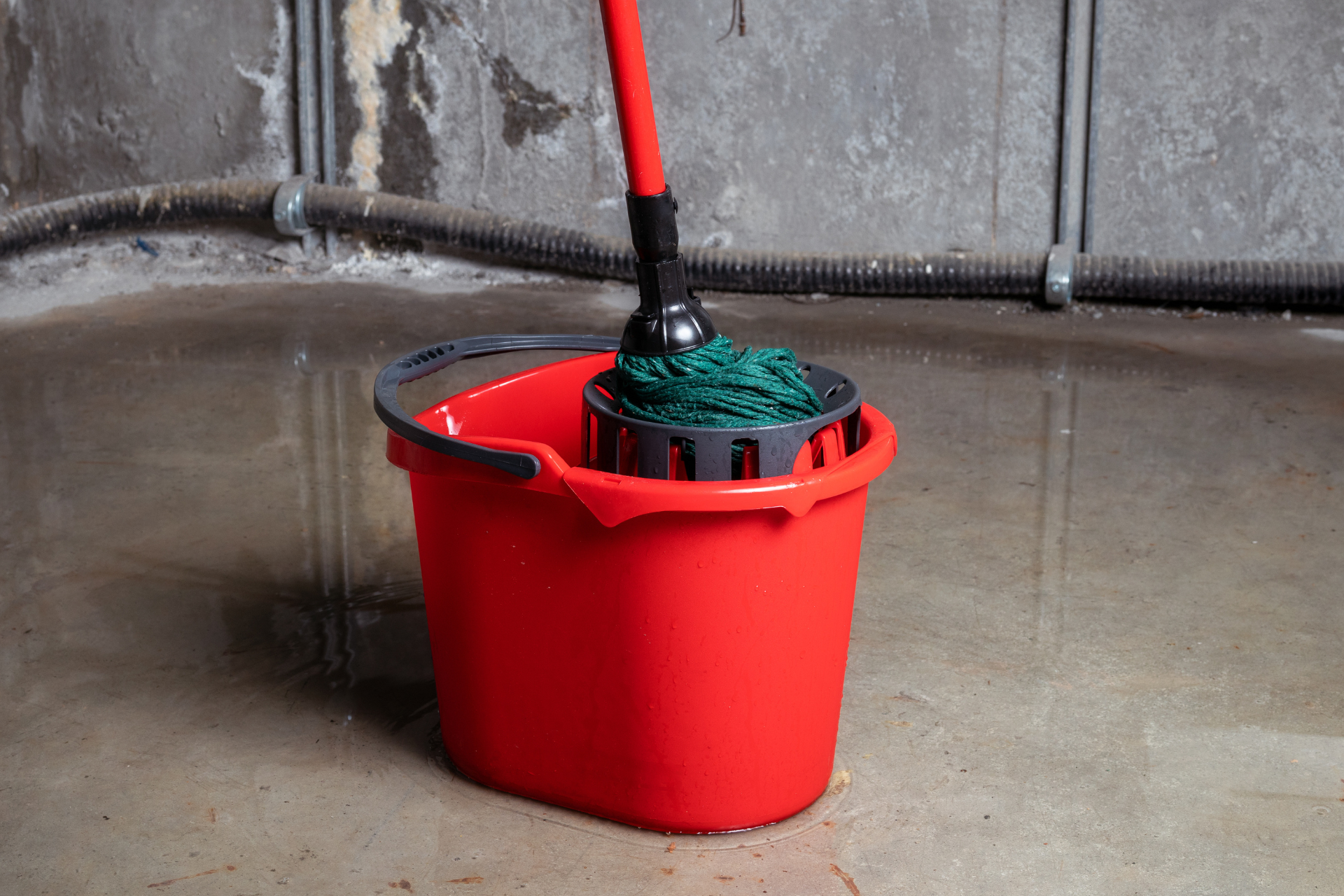
When the snow melts and spring rain showers sweep through Utah, the potential for basement flooding becomes a reality many homeowners dread. Your basement can be a valuable area for storage, recreation, or even an extra living space, so the last thing you want is for it to turn into a waterlogged mess. Here are some practical prevention tips and restoration solutions to help keep your basement dry and usable. Prevention Tips 1. Check Your Gutters and Downspouts Regular maintenance of your gutters is essential. Ensure they’re clear of debris so rainwater can flow freely and direct it away from your home’s foundation. Downspouts should extend at least 5-10 feet away from your house. This simple step can help prevent water from pooling around your foundation and seeping into your basement. 2. Inspect Your Foundation Take a stroll around the outside of your home. Look for cracks in your foundation and fill them in to prevent water intrusion. If you spot major issues, consult a professional. Even small cracks can let moisture enter, leading to potential flooding. 3. Install a Sump Pump A sump pump can be a lifesaver when it comes to preventing flooding. This device sits in a sump pit, collecting excess water and pumping it away from your home. Regularly test the pump to ensure it’s in working order, and consider a battery backup in case of power outages. 4. Use Water-Resistant Materials If you’re finishing your basement or renovating, choose water-resistant materials. Vinyl flooring and moisture-resistant drywall can help minimize damage if water does seep in. This approach can save you money and stress down the line. 5. Landscape Your Yard The grading of your yard matters! Ensure that your yard slopes away from your house. This will help direct runoff away from your foundation and reduce the risk of basement flooding. Restoration Solutions Despite your best efforts, flooding can still happen. If you find yourself dealing with water in your basement, swift action is key. 1. Safety First Before you start with any cleanup, ensure it’s safe to enter the flooded area. Look out for electrical hazards and consider wearing waterproof clothing and boots. 2. Contact Professionals For extensive damage, it’s best to call in the experts—like us at Utah Flood Guys. We specialize in water damage restoration, mold removal, and fire damage repairs. Our experienced team can quickly assess the situation and provide thorough cleanup and restoration to mitigate any further damage. 3. Dry Everything Out If the flooding is manageable, start by removing all furniture and belongings. Use pumps, wet vacs, and fans to remove as much water as possible, followed by strategic placement of dehumidifiers to help with drying. 4. Check for Mold After your basement is dry, monitor for signs of mold. Mold can begin to grow within 24-48 hours of water exposure. If you see any signs, it’s crucial to address it immediately. Mold removal is a process best handled by professionals to ensure it’s completely eradicated. 5. Prevent Future Issues Once everything is restored, take the time to revisit your prevention strategies. Regular maintenance can go a long way in keeping your basement dry and your home safe. Here at Utah Flood Guys , we’re committed to helping Utah homeowners navigate both flood prevention and restoration solutions. Don’t let basement flooding bring you down—stay proactive and prepared!

When it comes to protecting our homes and businesses, the restoration industry plays a crucial role, especially here in the beautiful Salt Lake City. With its stunning landscapes and vibrant community, people are drawn to this slice of paradise. However, it’s essential to recognize that with Mother Nature's beauty comes the unpredictability of her wrath. From unexpected floods to mold growth and fire damage, Utah homeowners are no strangers to the need for reliable restoration services. At Utah Flood Guys, we pride ourselves on being a beacon of hope during such challenging times. But what are the current trends shaping the Salt Lake City restoration market, and what obstacles do we face? Let’s dive in! Current Trends 1. Increased Awareness of Mold Risks With growing awareness about the dangers of mold, many property owners are now proactive about their indoor air quality. More people are scheduling regular inspections and seeking immediate help following water damage incidents. This trend has led to a surge in mold removal services across Utah, underscoring the importance of acting quickly to mitigate health risks. 2. Technology Integration Advancements in technology are revolutionizing the restoration landscape. From moisture detection meters to thermal imaging cameras, tools that can identify hidden water damage are becoming staples for restoration companies like Utah Flood Guys. These technologies not only streamline the cleanup process but also ensure that no damage goes unnoticed, providing peace of mind for homeowners. 3. Eco-Friendly Practices As awareness grows around environmental concerns, the restoration industry is pivoting towards more sustainable practices. Utah Flood Guys is committed to using eco-friendly cleaning products and techniques wherever possible. This not only protects the planet but also enhances the safety of your home or business. 4. Emergency Response Services The nature of disasters is unpredictable, which means that quick response times are more crucial than ever. Many restoration companies are now offering 24/7 services, ensuring that help is just a call away, regardless of the time or day. Challenges 1. Insurance Navigation One of the biggest hurdles homeowners face when dealing with damage is understanding their insurance policies. Many are often surprised to find out what is and isn’t covered. This can complicate the restoration process, as property owners may delay necessary repairs while waiting on approvals or clarifications. 2. Supply Chain Issues Like many industries, the restoration market is grappling with supply chain disruptions. Access to materials required for repairs and restorations can become limited, leading to longer wait times for customers. This has put pressure on companies to find alternative solutions and keep projects moving smoothly. 3. Seasonal Demand Fluctuations The restoration industry is often subject to seasonal trends. For example, during the spring and summer months, the risk of flooding and water damage increases significantly. This can lead to a sudden spike in demand for restoration services, putting pressure on companies to scale up quickly to meet customer needs. 4. Liability and Compliance The restoration process can be fraught with risks, especially regarding health and safety regulations. Compliance with local laws and ensuring the safety of both employees and clients can be daunting for restoration companies. This necessitates proper training and adherence to industry standards. Conclusion The Salt Lake City restoration market is evolving, characterized by exciting trends and notable challenges. At Utah Flood Guys , we understand the importance of staying ahead of the curve to serve our community effectively. Whether you’re facing water damage, mold issues, or fire destruction, we’re here to help you navigate the challenges and trends in today’s restoration landscape. Remember, proactive measures can make a world of difference when it comes to safeguarding your property and peace of mind. So, if disaster strikes, don’t hesitate to reach out to us anytime, day or night!
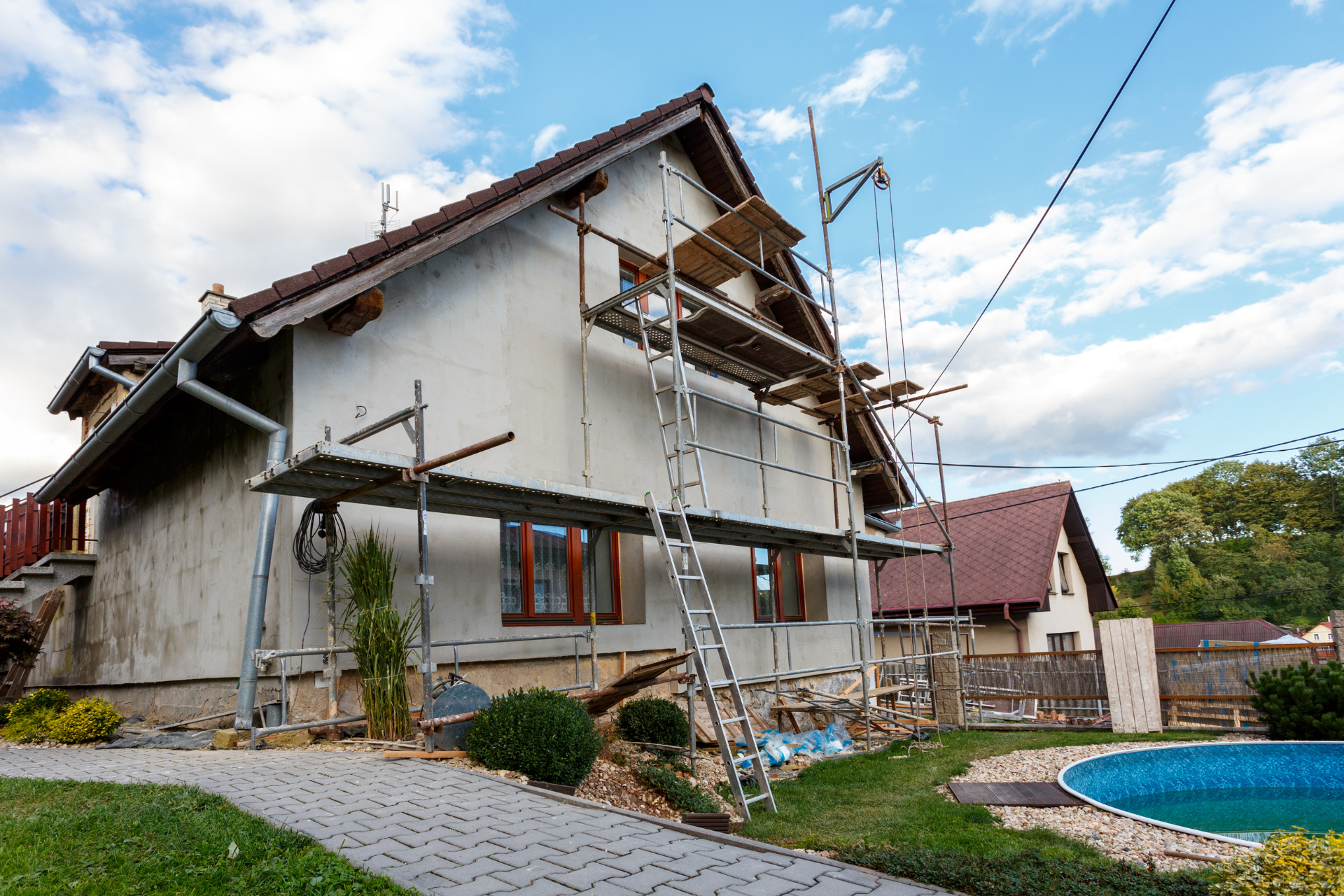
When disaster strikes—be it a flood, fire, or mold infestation—understanding the differences between restoration and reconstruction can be pivotal in recovering from the damage. At Utah Flood Guys, we’re here to help you navigate these waters (pun intended) and ensure your property is back to its former glory. What is Restoration? Restoration refers to the process of returning a property to its original condition after damage has occurred. This typically involves cleaning, repairing, and mitigating further issues that may arise after an incident. When water damage occurs from a flood or a pipe bursting, for instance, restoration services focus on removing standing water, drying out affected areas, and preventing mold growth. During the restoration process, our dedicated team at Utah Flood Guys conducts a thorough assessment of the damage. We utilize advanced equipment, like moisture detectors and industrial-grade dehumidifiers, to effectively tackle any lingering moisture. The key here is to restore your home or business as efficiently and effectively as possible, keeping in mind the urgency of the situation. Restoration also encompasses cleaning and sanitizing affected surfaces. Our goal is not just to tackle visible damage but to ensure that the air quality in your space remains safe and healthy. Whether it's removing soot from a fire, cleaning up flood debris, or eradicating mold, restoration is all about bringing your property back to its pre-disaster state. What is Reconstruction? While restoration deals with repairing and cleaning damaged areas, reconstruction takes it a step further. Simply put, reconstruction involves rebuilding aspects of a property that have been severely damaged or destroyed and cannot be salvaged. This might include completely replacing walls, flooring, or structural components after a disaster like a major flood or fire. Reconstruction is a more extensive process and often requires permits and inspections to ensure that the property adheres to local building codes and safety regulations. At Utah Flood Guys, we work closely with you during this phase to ensure that your vision aligns with what needs to be done to make your property safe and sound once again. Why Understanding the Difference Matters Having clarity on the distinction between restoration and reconstruction is important for several reasons. It helps homeowners and property managers understand what types of services they may need and enables them to communicate more effectively with restoration professionals. For instance, if you’re facing water damage, you might first require restoration services to address the immediate threats, followed by reconstruction if structural changes are needed. By knowing what to expect, you can be better prepared for the recovery process—and that’s where Utah Flood Guys shines. In conclusion, whether you find yourself dealing with water damage, mold , or fire , knowing the difference between restoration and reconstruction can save you time and stress. At Utah Flood Guys , we’re committed to guiding you through every step, ensuring your home or business can face the future with confidence. If you ever find yourself needing assistance, don’t hesitate to reach out. Together, we can make your property whole again.

Cooking is an essential part of our daily lives, and while it can be incredibly enjoyable, it does come with its risks. One of the most dangerous risks? Kitchen fires. According to the National Fire Protection Association (NFPA), cooking equipment is the leading cause of home fires and fire injuries. At Utah Flood Guys, we believe that prevention is key, but it’s also vital to be prepared if a fire does occur. Here’s how to keep your kitchen safe and what to consider if a fire breaks out. Prevention Tips 1. Stay in the Kitchen The number one rule when cooking is to never leave your stove unattended. If you must step away, even for a minute, consider turning off the heat. It only takes a moment for a fire to ignite. 2. Keep Flammable Items Away Keep items like dish towels, oven mitts, and other flammable materials away from the stove and oven. It’s easy for these items to accidentally catch fire, especially during those rushed cooking moments. 3. Use Caution with Oil When frying foods, be extra vigilant. Hot oil can ignite quickly. Always keep a lid nearby in case the oil catches fire—placing a lid on the pan can smother the flames. 4. Regular Maintenance Make sure your kitchen appliances are in good working order. Worn-out cords, broken appliances, or malfunctioning smoke detectors can all increase fire risk. 5. Educate Your Family Make sure everyone in your household knows basic kitchen safety tips. Teach them how to properly use kitchen appliances and what to do in case of a fire. What to Do If a Fire Occurs If you find yourself in the unfortunate situation of a kitchen fire, quick actions can save lives and property. 1. Stay Calm and Assess If a fire starts, try to stay calm. If it is small, you might be able to put it out with a pot lid or a fire extinguisher. Always keep a fire extinguisher in your kitchen—make sure it's easily accessible and you know how to use it. 2. Evacuate and Call for Help If the fire is uncontrollable, evacuate everyone from the home immediately. Close the doors behind you to help contain the fire, and then call 911. Never try to fight a large fire; your safety is the most important thing. 3. Don’t Use Water Never use water to extinguish a grease fire. Pouring water on burning oil can cause the flames to spread dramatically. Restoration Tips Once the fire and smoke have been dealt with, it’s crucial to get your kitchen back in shape for safety and health. That’s where Utah Flood Guys comes in. 1. Assessment We’ll assess the damage and determine the best restoration method. We'll look for not just visible damage but also hidden smoke or water damage, which can lead to mold growth. 2. Cleaning and Removal Smoke and soot can be ingrained in surfaces. Our team specializes in deep cleaning to ensure all residues are removed, preventing further damage and odors. 3. Rebuilding and Restoring If there are structural damages, we can assist with rebuilding and restoring your kitchen to its pre- fire condition—ensuring it’s safe and ready for your next culinary adventure. Fire can be devastating, but with the right precautions and a solid plan, you can minimize risks and be prepared. If a fire does occur, Utah Flood Guys is here to help you restore your space and peace of mind. Stay safe, and happy cooking!
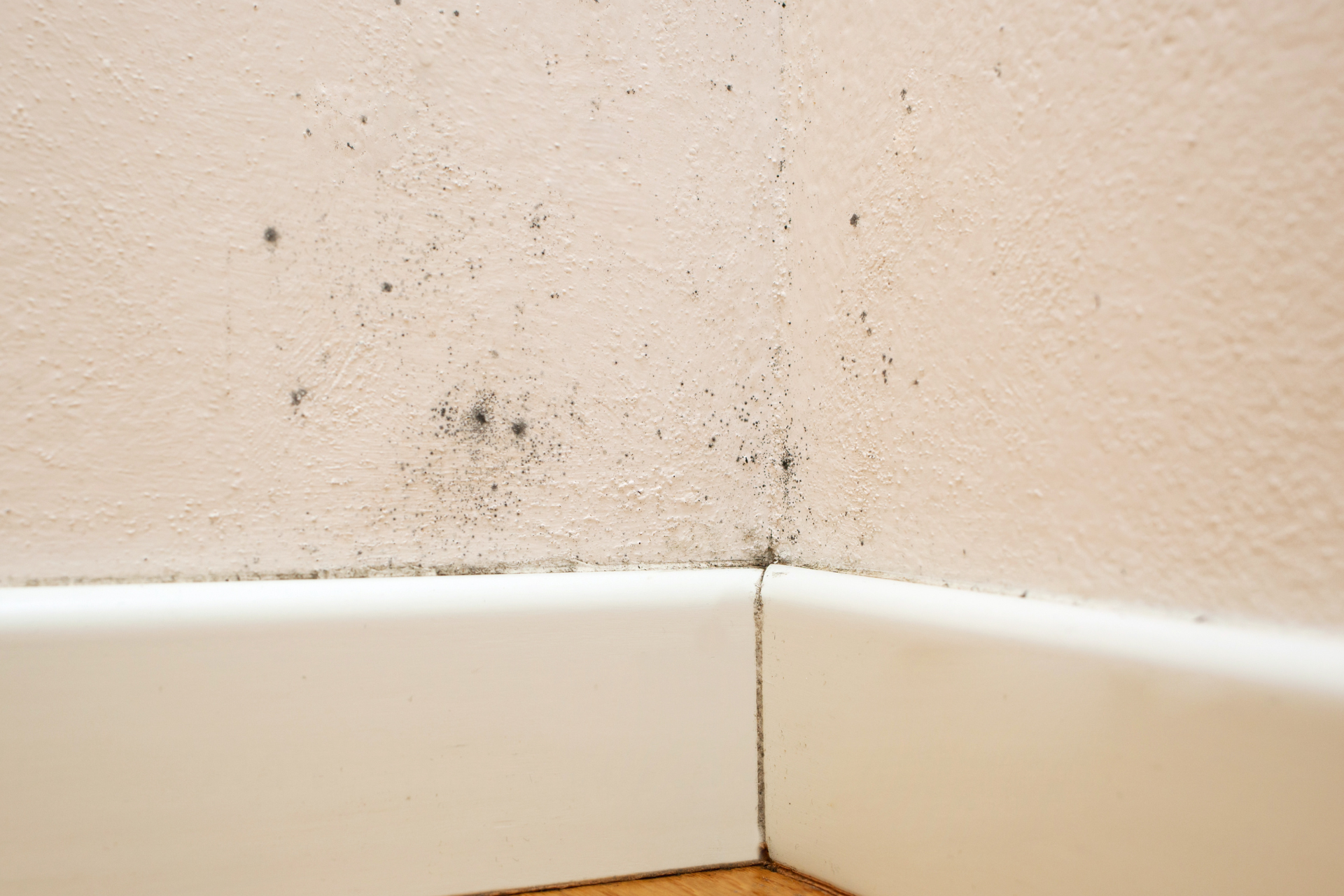
When it comes to our homes and offices, comfort is key. Unfortunately, one sneaky element can undermine that comfort—mold. For many people, exposure to mold can lead to a variety of allergy symptoms that can be both uncomfortable and concerning. That’s where Utah Flood Guys come in; we're here to help restore not only your space but also your peace of mind. Recognizing Mold Allergy Symptoms Mold thrives in damp, dark areas, making it a common issue in places that have experienced water damage. It's essential to recognize the signs of mold exposure early on. Common mold allergy symptoms include: - Nasal Congestion If you’re frequently dealing with a stuffy nose, especially after rainy weather or cleaning up after a flood, mold could be the culprit. - Sneezing and Coughing A persistent cough or frequent sneezing fits can signal an allergic reaction due to mold spores in the air. - Itchy or Watery Eyes This is another classic sign of mold allergy. If your eyes feel irritated when you’re indoors, it’s time to investigate. - Skin Rashes Mold can also attract allergens and irritate the skin, so watch for any unexplained rashes or itches. - Shortness of Breath or Wheezing For those with asthma or respiratory issues, exposure to mold can exacerbate these conditions, potentially leading to serious breathing difficulties. If you experience these symptoms regularly, especially indoors, it might be time to look for underlying mold issues in your living or working environment. How Utah Flood Guys Can Help At Utah Flood Guys, we understand that dealing with mold is more than just a hassle; it can have serious implications for your health. Here’s how our restoration services can tackle the problem: 1. Thorough Inspection Our team will perform a comprehensive assessment of your property to identify the presence of mold, focusing on areas that are prone to moisture such as basements, attics, and behind walls. 2. Effective Mold Removal Once we've pinpointed the problem areas, we'll develop a mold removal plan tailored specifically to your needs. Using eco-friendly products and proven techniques, we’ll safely eliminate the mold and ensure it doesn’t return. 3. Water Damage Restoration Our expertise isn’t limited to mold removal; we excel in addressing the root cause of mold growth— water damage. Whether it’s a burst pipe or flood, we’ll restore your property to its pre-damage condition, preventing a mold resurgence. 4. Preventative Measures Post-restoration, it's vital to implement strategies that deter future mold growth. Our team will provide you with advice on improving ventilation, reducing humidity, and identifying potential moisture sources. 5. Ongoing Support Our commitment to your well-being doesn’t end when the job is done. We’re here to answer any questions you may have and to help you maintain a healthy indoor environment long after the mold is gone. Conclusion Mold allergies can significantly affect your quality of life, but you don’t have to let them take control. By recognizing the symptoms and reaching out to professionals like Utah Flood Guys for restoration, you can reclaim your home and health. Don't let mold linger—contact us today for a consultation, and let’s create a cleaner, healthier space together.

When you think of Utah, sprawling deserts and majestic mountains typically come to mind. However, many residents are unaware of the unique water damage challenges our state faces. While we admire our natural landscapes, we must also acknowledge the potential for water damage from various sources, including heavy rain, snowmelt, and even plumbing issues. Here at Utah Flood Guys, we understand the intricacies involved in protecting your property from these water-related threats. Let’s dive into how you can safeguard your home or business against water damage. Understanding Utah’s Climate Utah boasts a semi-arid climate, which might lead you to think that water damage is not a significant concern. However, seasonal snowmelt combined with sporadic rains can lead to unexpected flooding, especially in lower-lying areas. Additionally, our rapid temperature changes can cause pipes to freeze and burst, leading to significant interior water damage. Common Sources of Water Damage 1. Heavy Rainfall and Flash Floods Utah experiences periods of intense rainfall, particularly during the monsoon season. Flash floods can occur with little warning, putting properties at risk, especially in areas prone to runoff. 2. Snowmelt As the temperatures rise in the spring, snow in the mountains melts quickly, which can overwhelm drainage systems. This situation can be perilous for properties located near rivers and streams. 3. Plumbing Issues Aging pipes and fixtures can fail under pressure, leading to unwanted leaks. Unlike weather-related damage, plumbing issues can happen year-round and often require immediate attention. 4. Foundational Problems In some regions, expansive soils can put pressure on foundations, leading to cracks where water can seep in. Keeping an eye on your foundation and addressing any issues early can save you from significant headaches down the line. Protective Measures for Your Property Now that we understand the challenges, let’s discuss some proactive steps you can take to protect your property: - Invest in Quality Drainage Systems Proper grading, gutters, and drains are essential in redirecting water away from your foundation. Regularly cleaning gutters and ensuring downspouts direct water away from your home can make a significant difference. - Install Water Sensors and Alarms Smart technology has made it easier than ever to monitor your home. Investing in water sensors that detect leaks can alert you before minor issues become major disasters. - Regular Inspections Schedule inspections of your plumbing systems, roofs, and foundations. Catching issues before they escalate allows you to take corrective measures right away, potentially saving thousands in repair costs. - Seal Cracks and Openings Don’t overlook small cracks in your foundation or walls. Sealing these can prevent water intrusion and should be part of your regular home maintenance routine. - Create a Flood Plan If you live in an area susceptible to flooding, have an emergency flood plan in place. Know your evacuation route and keep important documents in a waterproof container. When Disaster Strikes Despite our best efforts, sometimes water damage is unavoidable. In those cases, Utah Flood Guys is here to help. Our team specializes in comprehensive restoration services for both residential and commercial properties. With our expertise, we can quickly assess the damage and start restoring your space, ensuring you're back to normal in no time. Utah’s unique climate means being proactive about water damage is essential. With these tips and our assistance, you can protect your property and enjoy all that our beautiful state has to offer, worry-free!
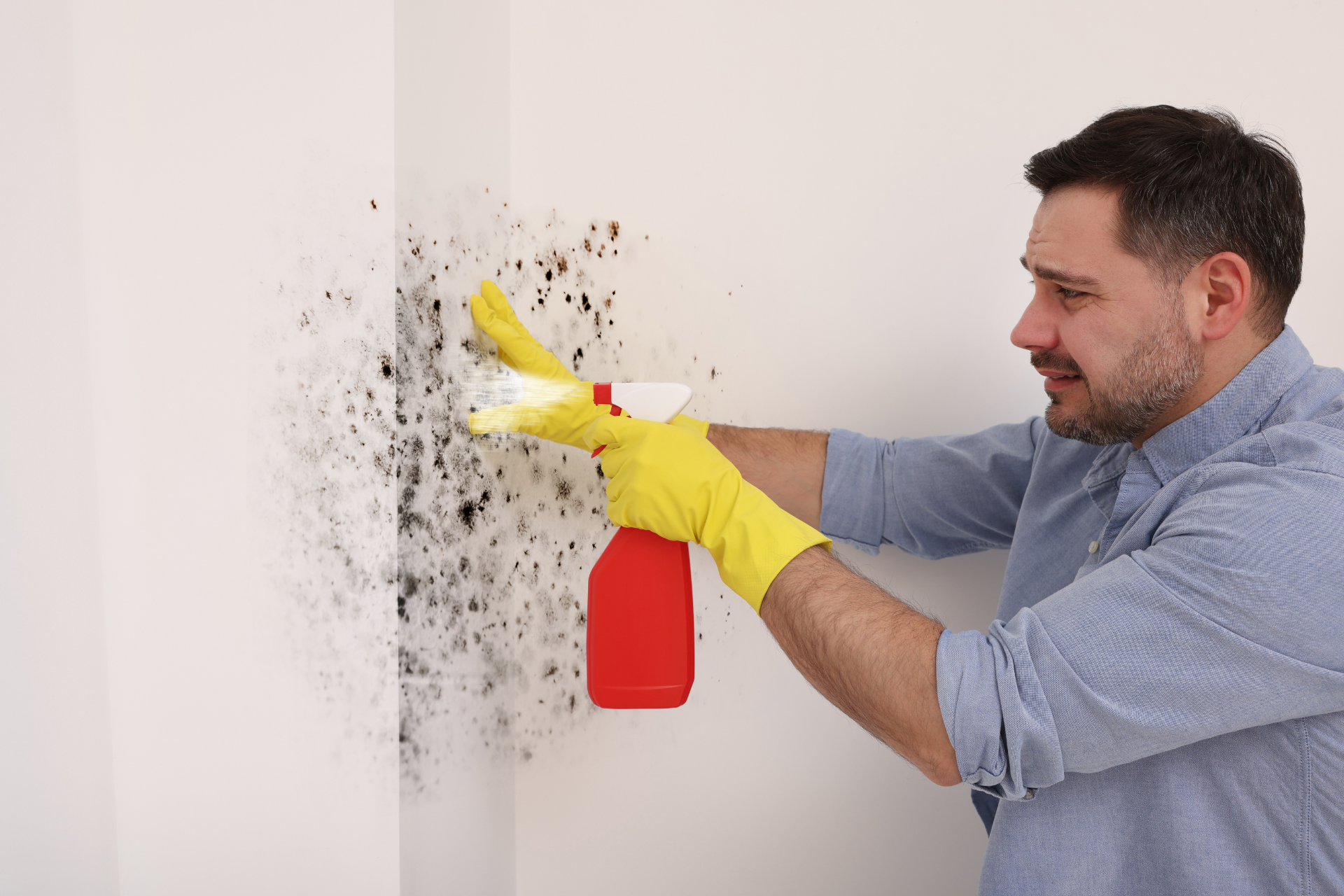
When it comes to mold removal, homeowners and businesses often face a tough decision: should they opt for traditional chemical treatments or choose eco-friendly methods? At Utah Flood Guys, we believe it’s essential to consider not just the effectiveness of these methods but also their impact on our environment. Let’s dive into the two approaches and explore their advantages and drawbacks. Chemical Mold Removal: Pros and Cons Chemical mold removal methods typically involve powerful solutions designed to kill mold quickly and effectively. Products like bleach, fungicides, and other harsh chemicals are popular due to their aggressive approach. On the positive side, these chemicals can indeed provide fast results, making it tempting for those seeking immediate relief from a mold infestation. However, the utilization of these chemicals isn't without consequences. Many conventional mold removal solutions contain volatile organic compounds (VOCs) that can contribute to air pollution and may pose health risks to humans and pets. Prolonged exposure to harmful chemicals can lead to respiratory issues, skin irritations, and other health concerns. Moreover, as these substances are washed away, they can seep into the environment, polluting waterways and harming local ecosystems. Eco-Friendly Mold Removal: A Sustainable Approach On the other hand, eco-friendly mold removal methods focus on leveraging natural substances and techniques that are less harmful to the environment. Options such as vinegar, hydrogen peroxide, and baking soda are commonly used to combat mold growth. Not only are these substances effective in breaking down mold, but they are also significantly less abrasive compared to their chemical counterparts. The environmental benefits of using eco-friendly methods are considerable. Because these natural ingredients break down easier in the environment, there is a reduced risk of water and soil contamination. Furthermore, the use of non-toxic cleaning solutions can lead to healthier indoor air quality, which is particularly beneficial for those with allergies or sensitivities. This option allows homeowners and businesses to address their mold issues while also prioritizing the well-being of our planet and their communities. Finding the Right Balance For those faced with a mold crisis, the right choice often lies in balancing effectiveness with environmental responsibility. It’s essential to consider the severity of the mold problem, the preferences of the occupants, and the long-term implications of treatment choices. Utah Flood Guys recommend assessing the situation thoroughly before deciding on a method. In many cases, a hybrid approach can yield excellent results. For minor mold issues, utilizing eco-friendly solutions can be quite effective. However, in situations involving extensive infestations, it might be necessary to use stronger chemical treatments, albeit in a controlled and thoughtful manner. If you do choose to go the chemical route, it’s crucial to work with professionals who understand proper application techniques and safety measures to minimize environmental harm. Conclusion Ultimately, whether you choose chemical or eco-friendly mold removal methods, the most important aspect is ensuring that the job is done right. At Utah Flood Guys , we prioritize not only effective mold remediation but also the health of our clients and the environment. If you’re dealing with a mold problem, don’t hesitate to reach out to us. Together, we can find the best solution that suits your needs while fostering a safer and greener future for everyone.
